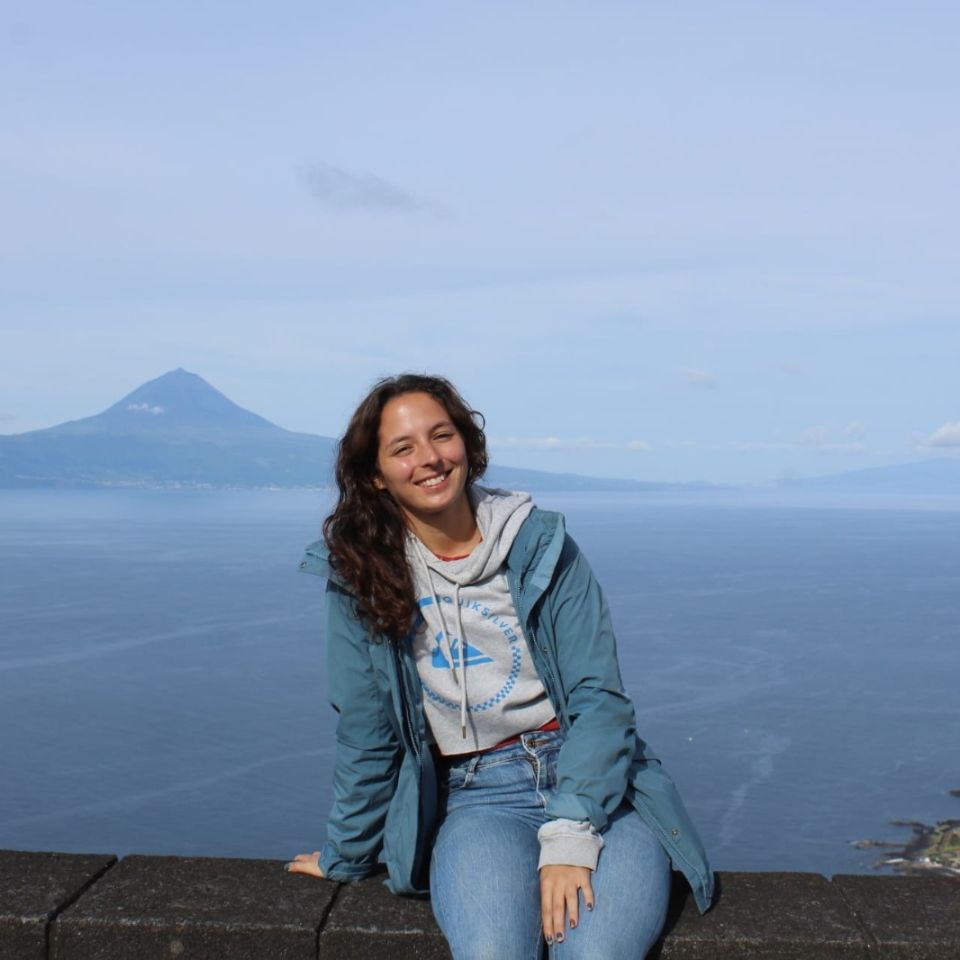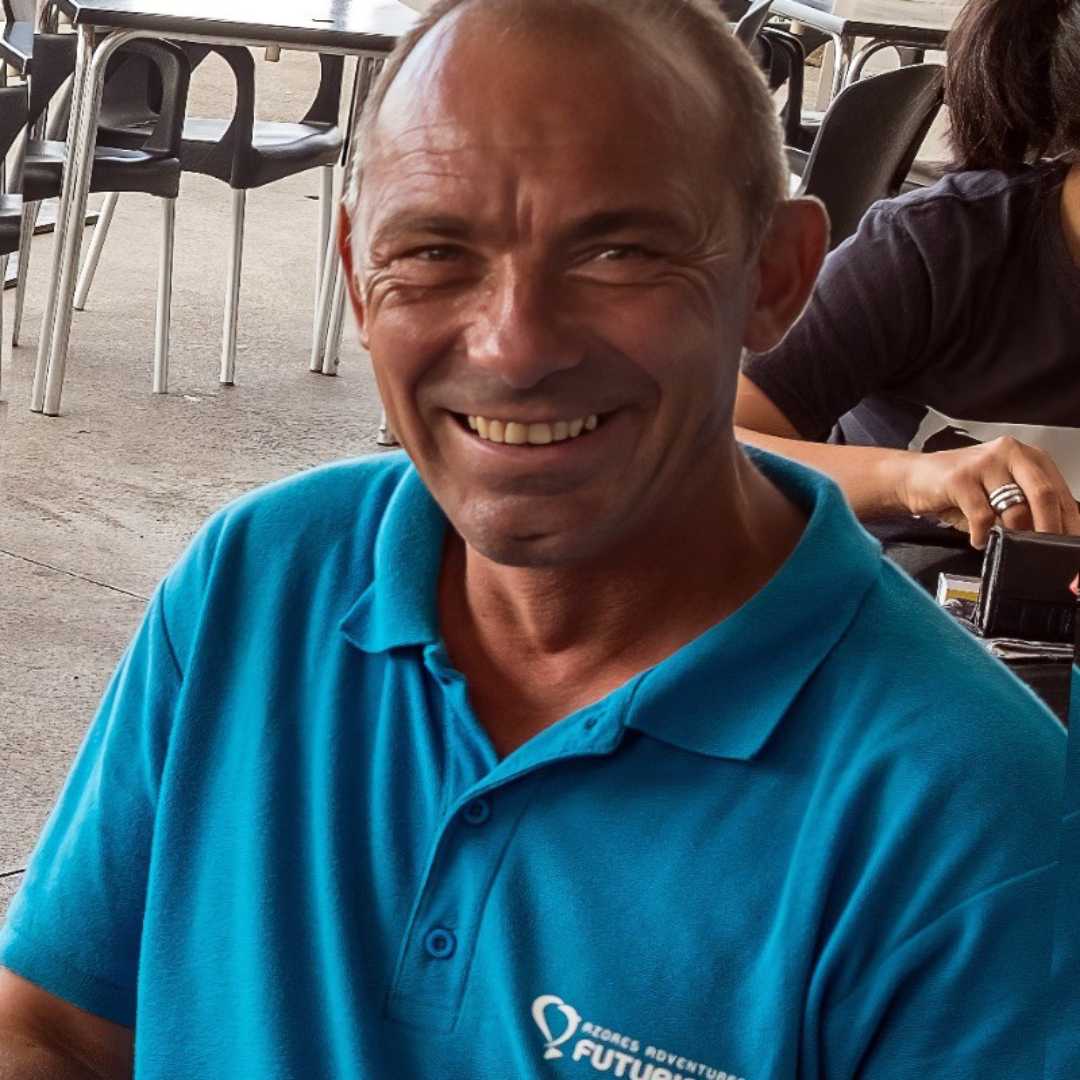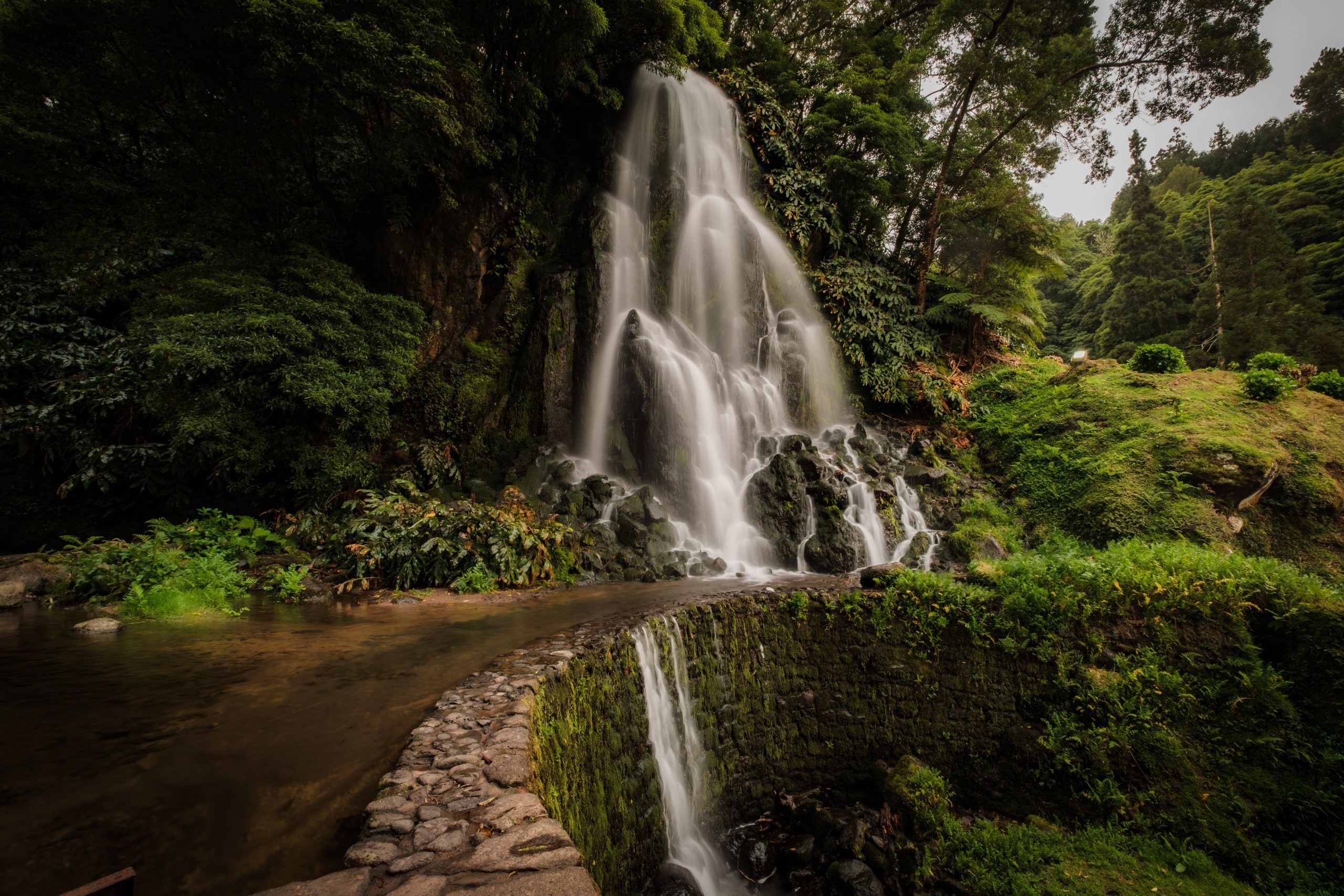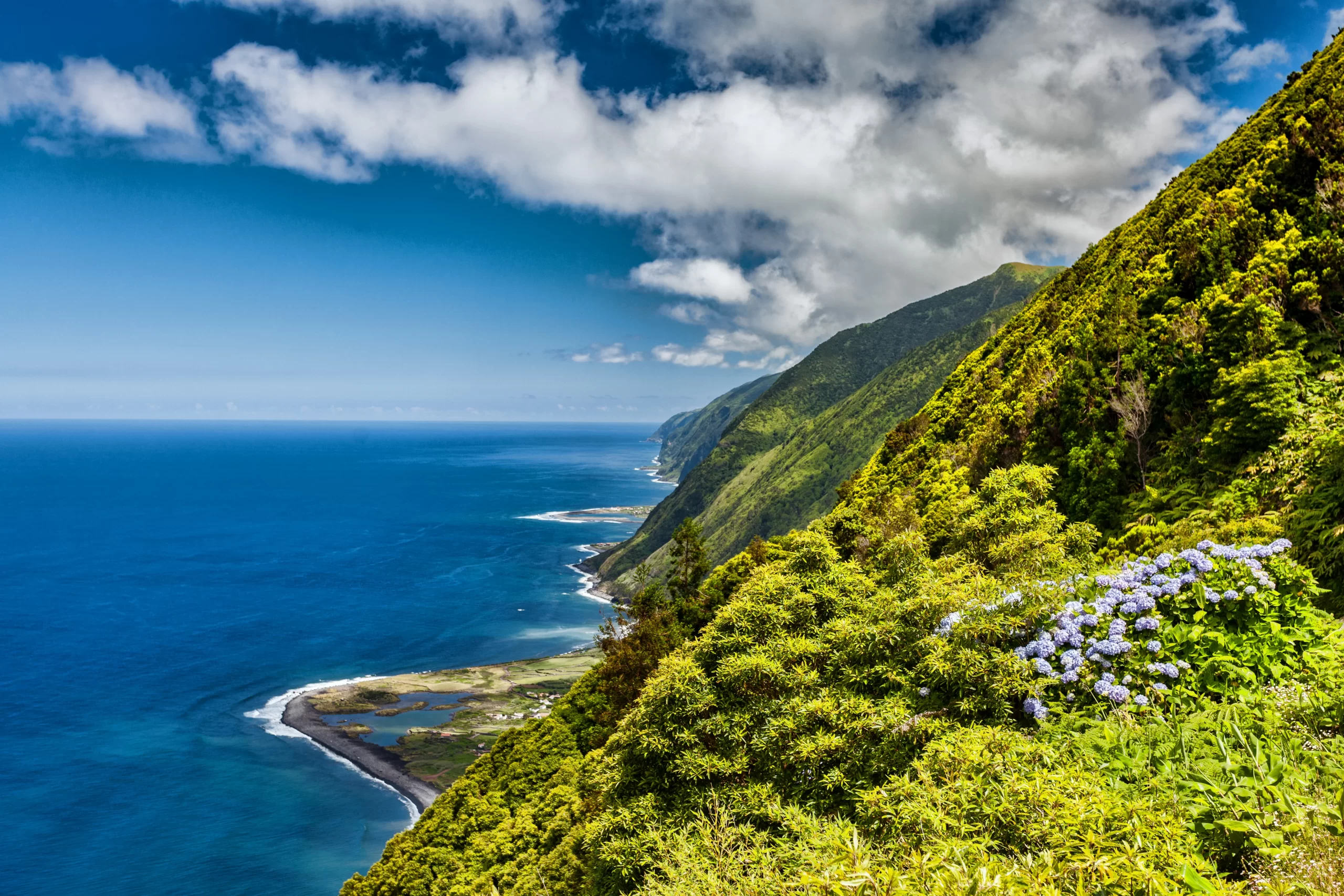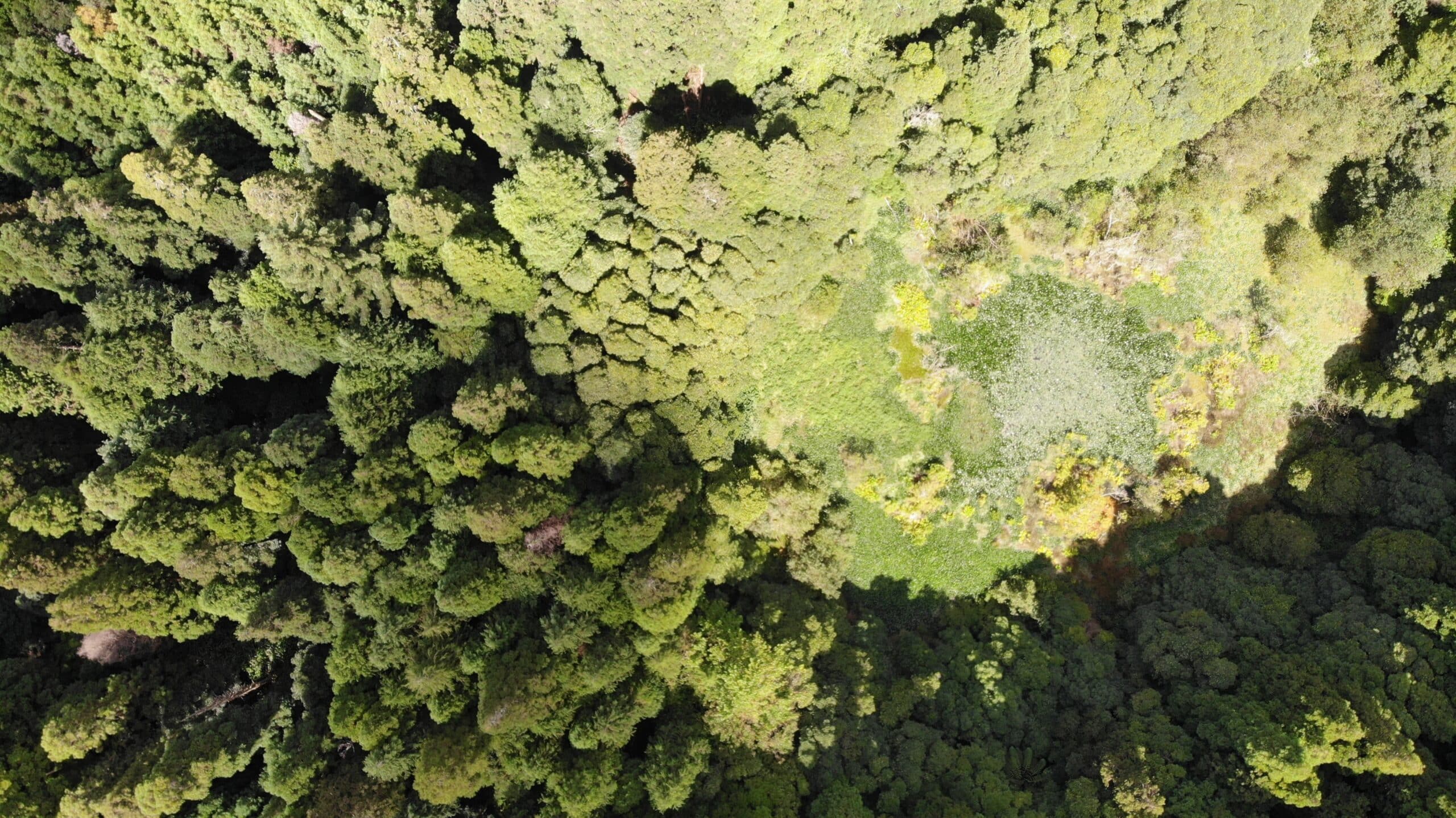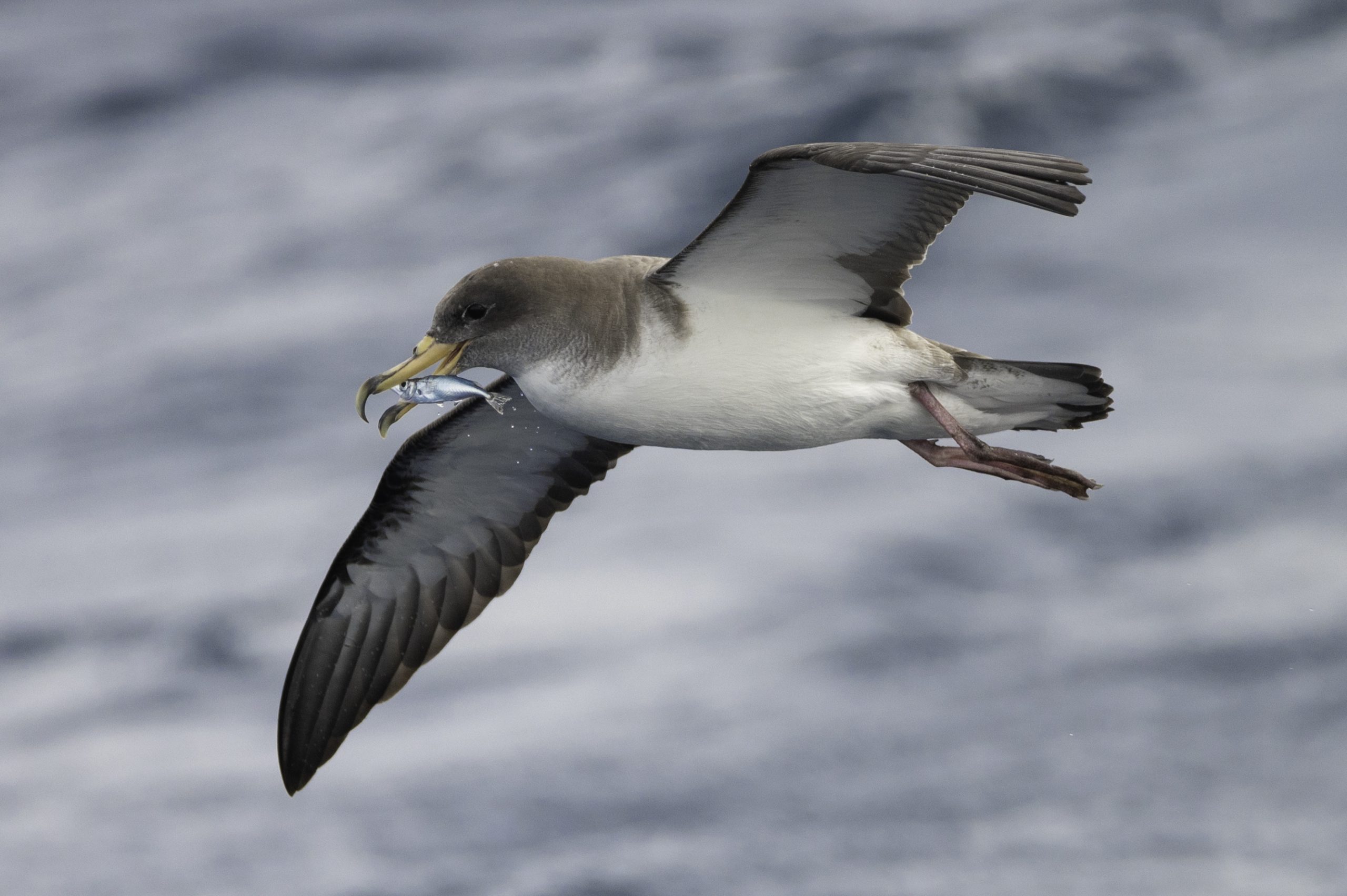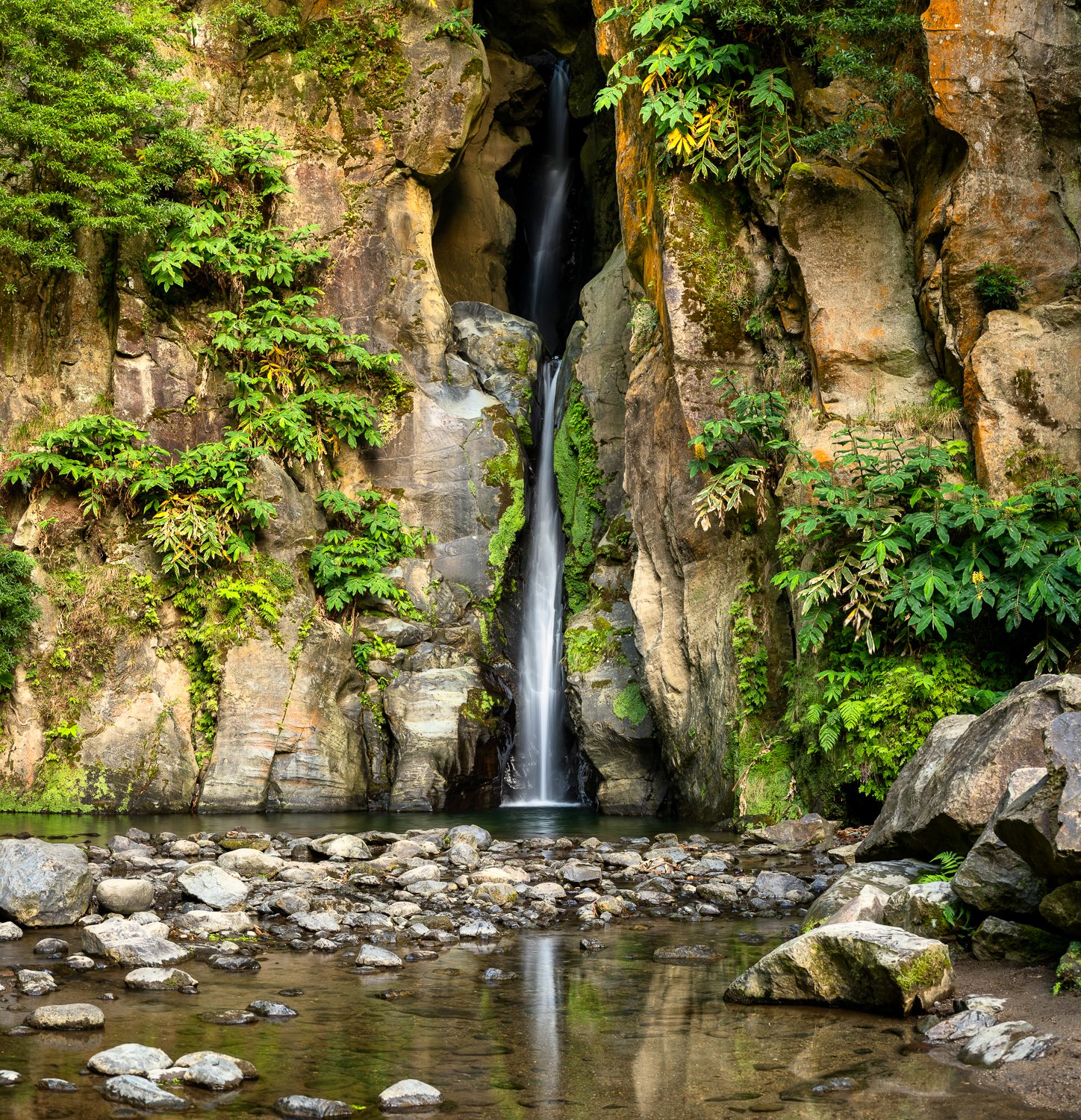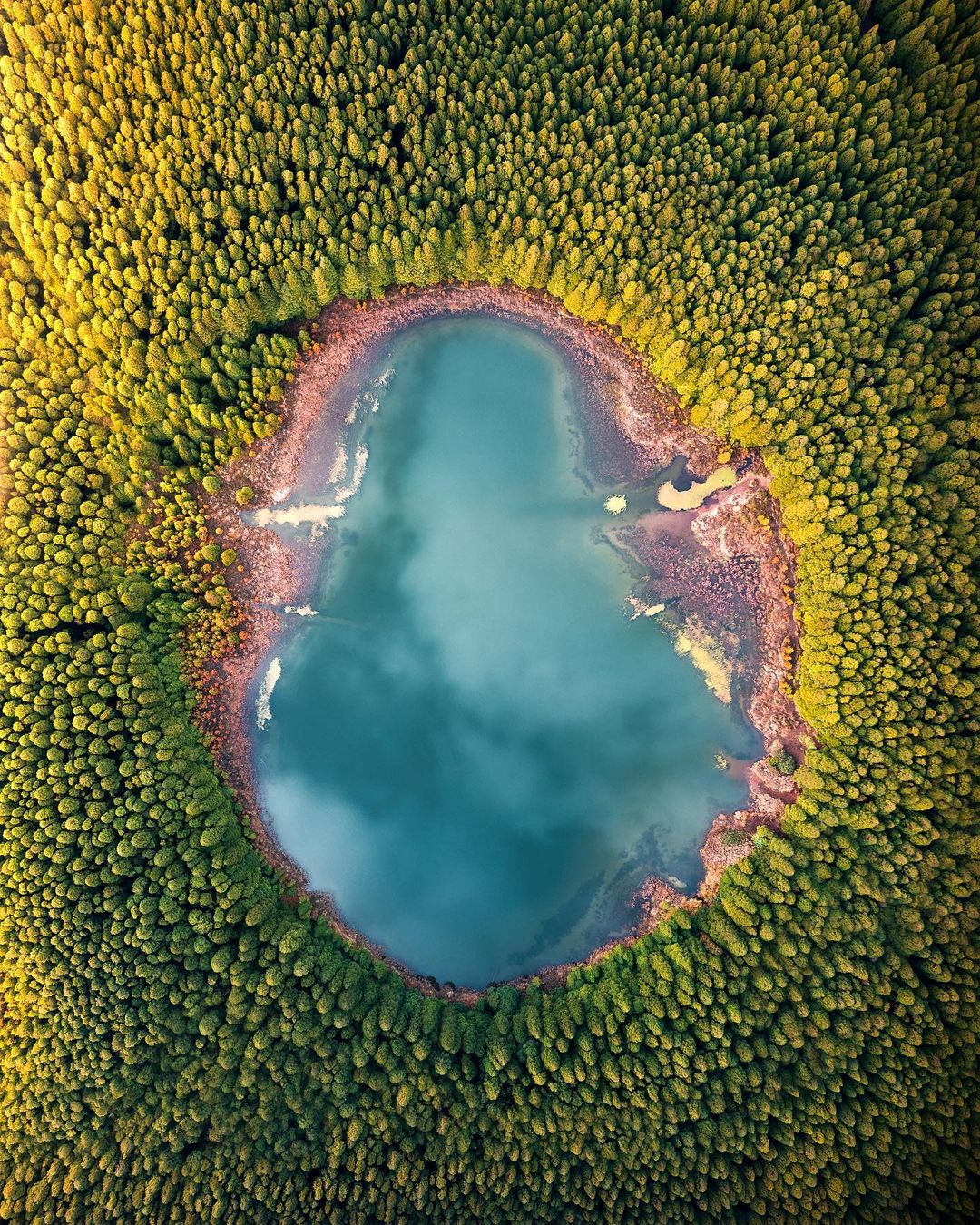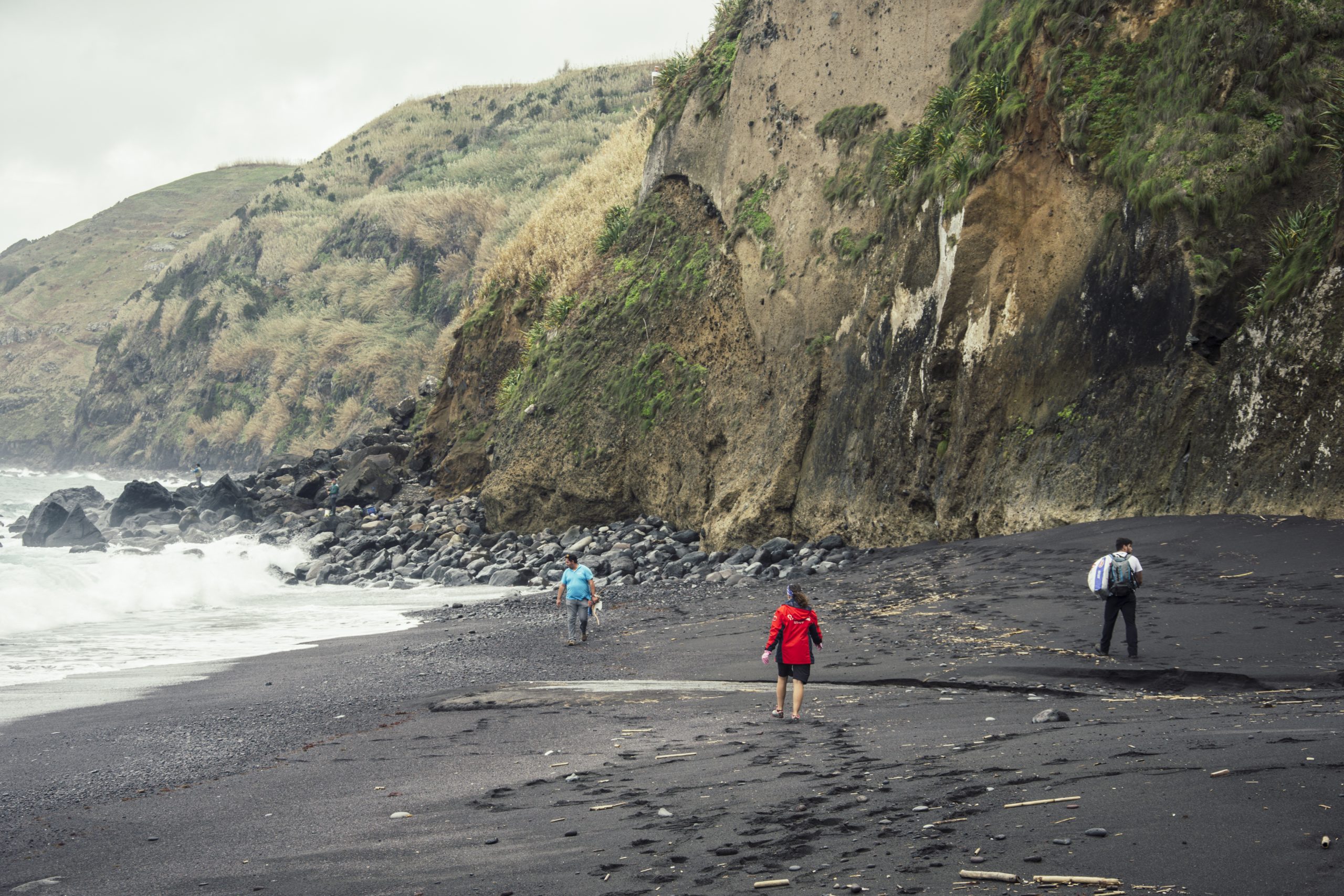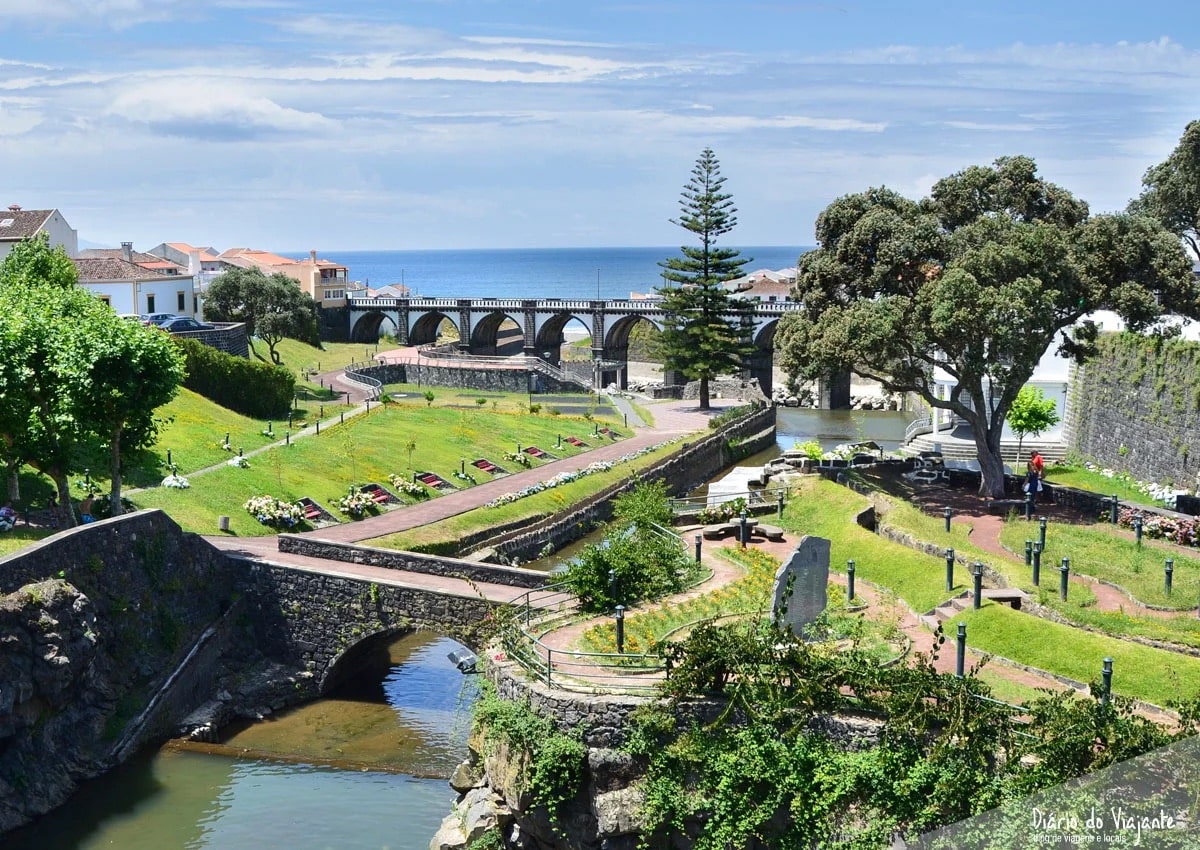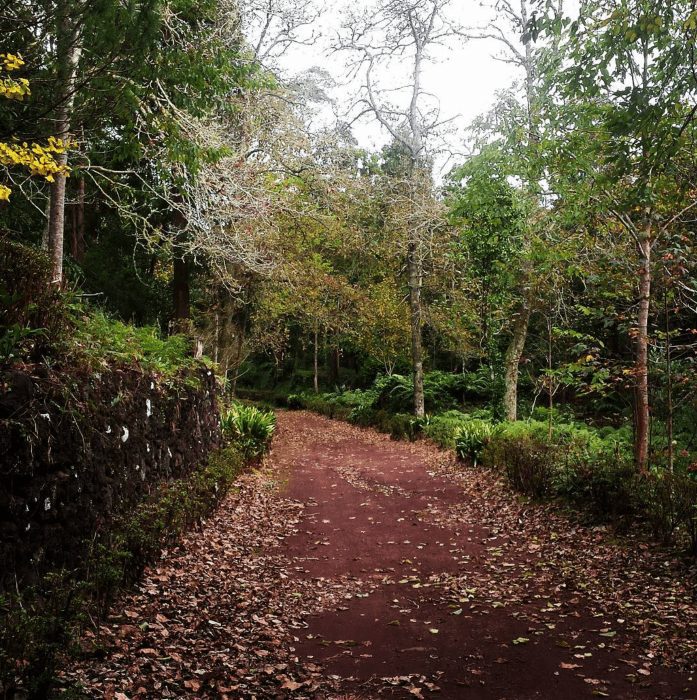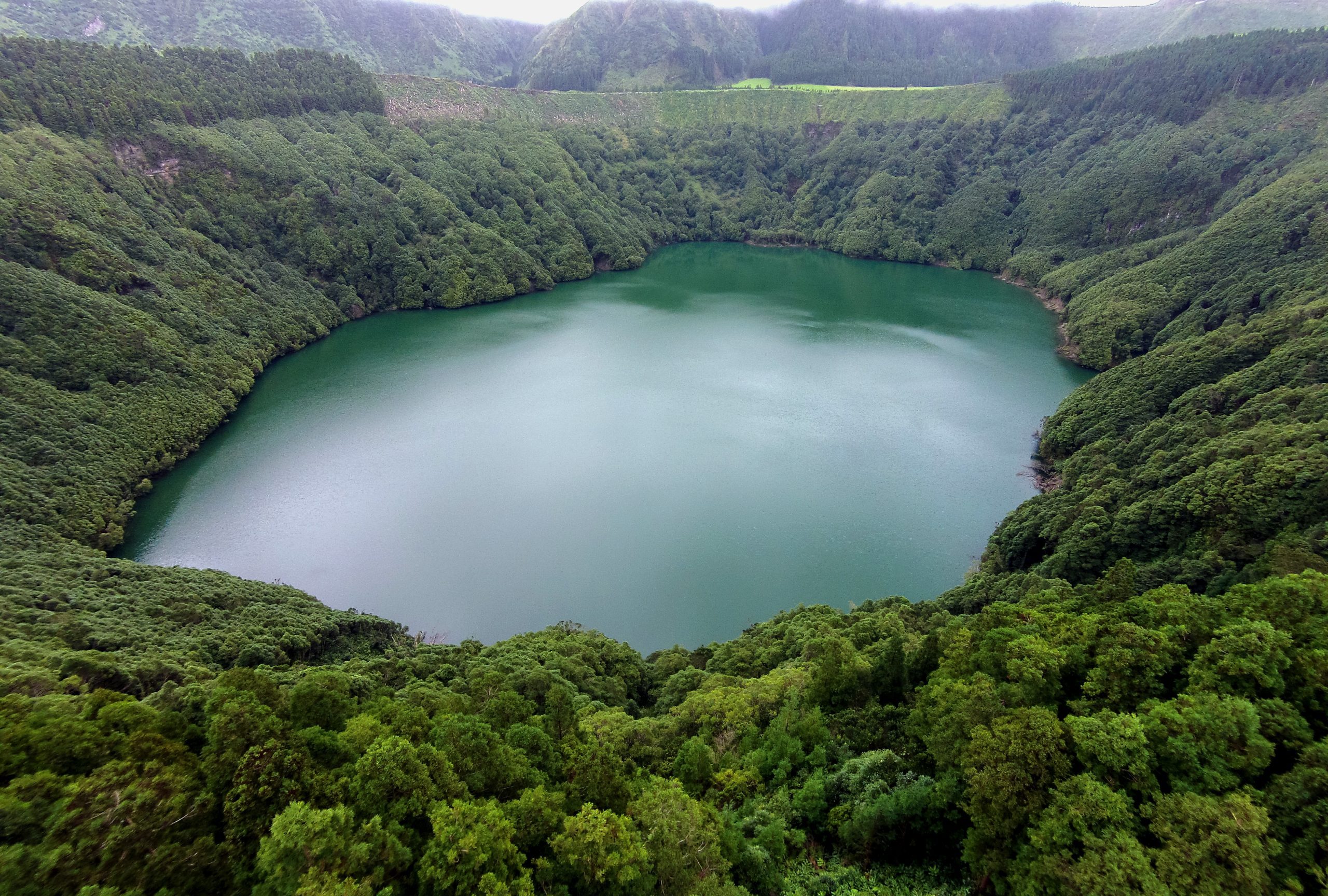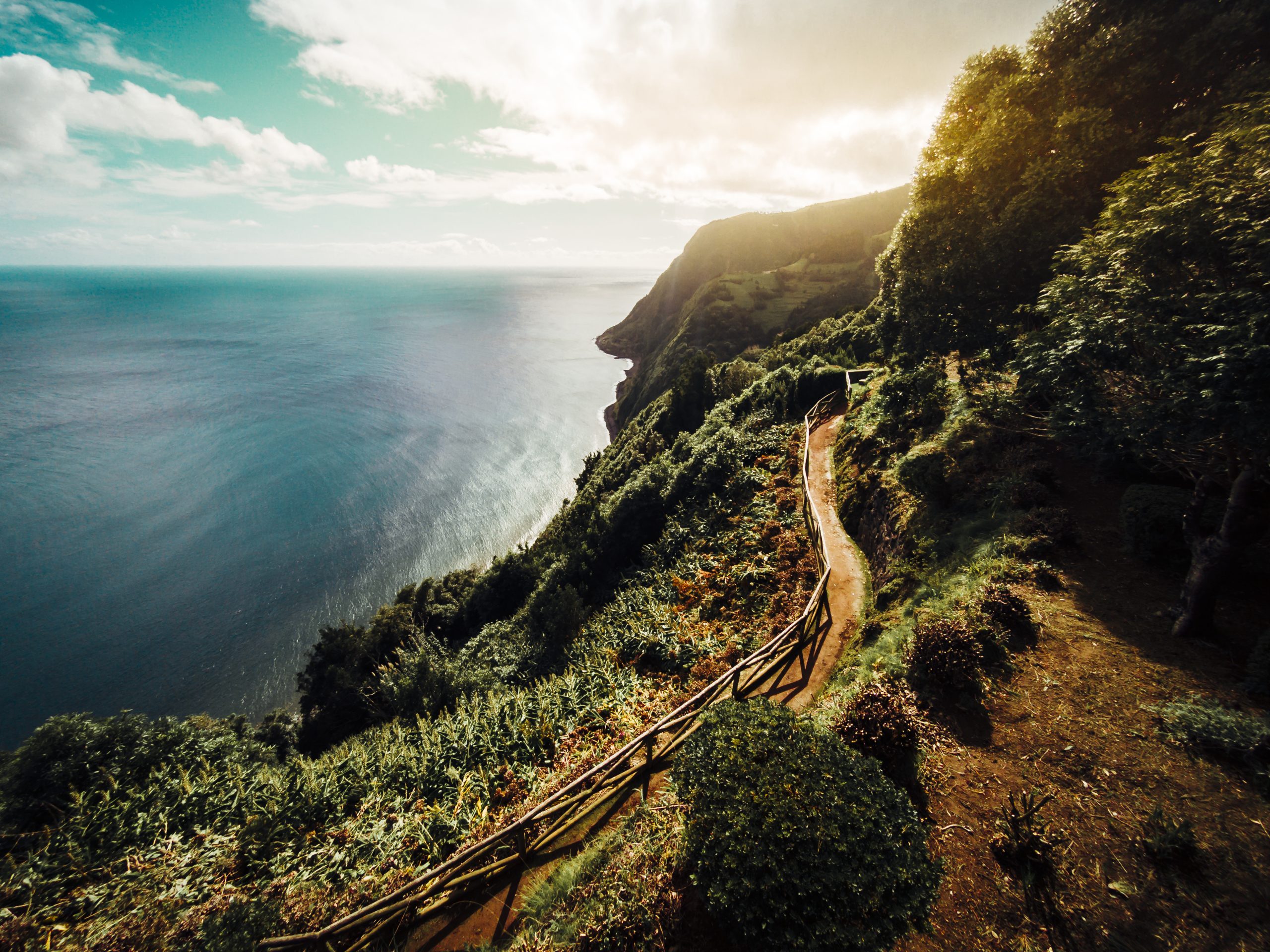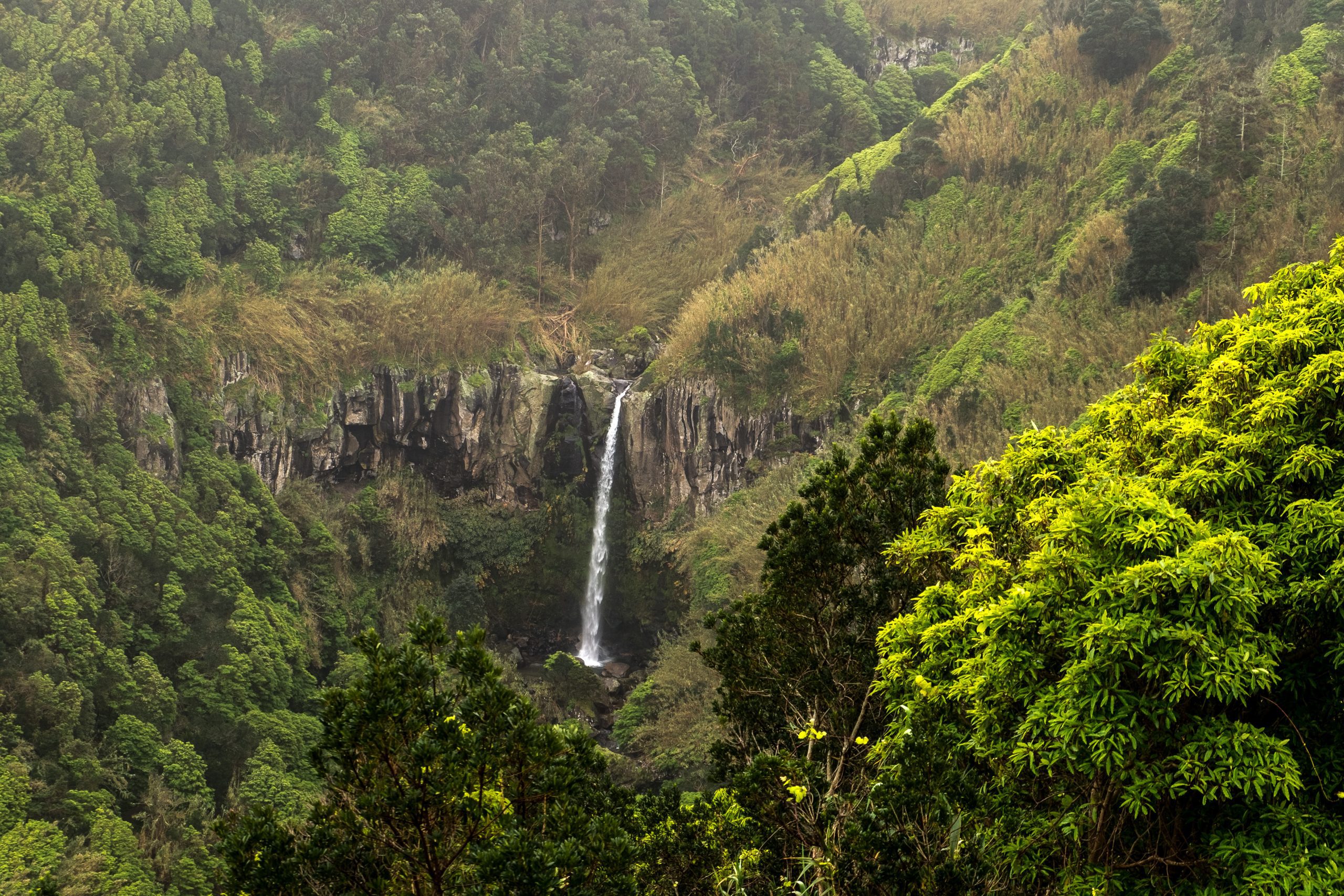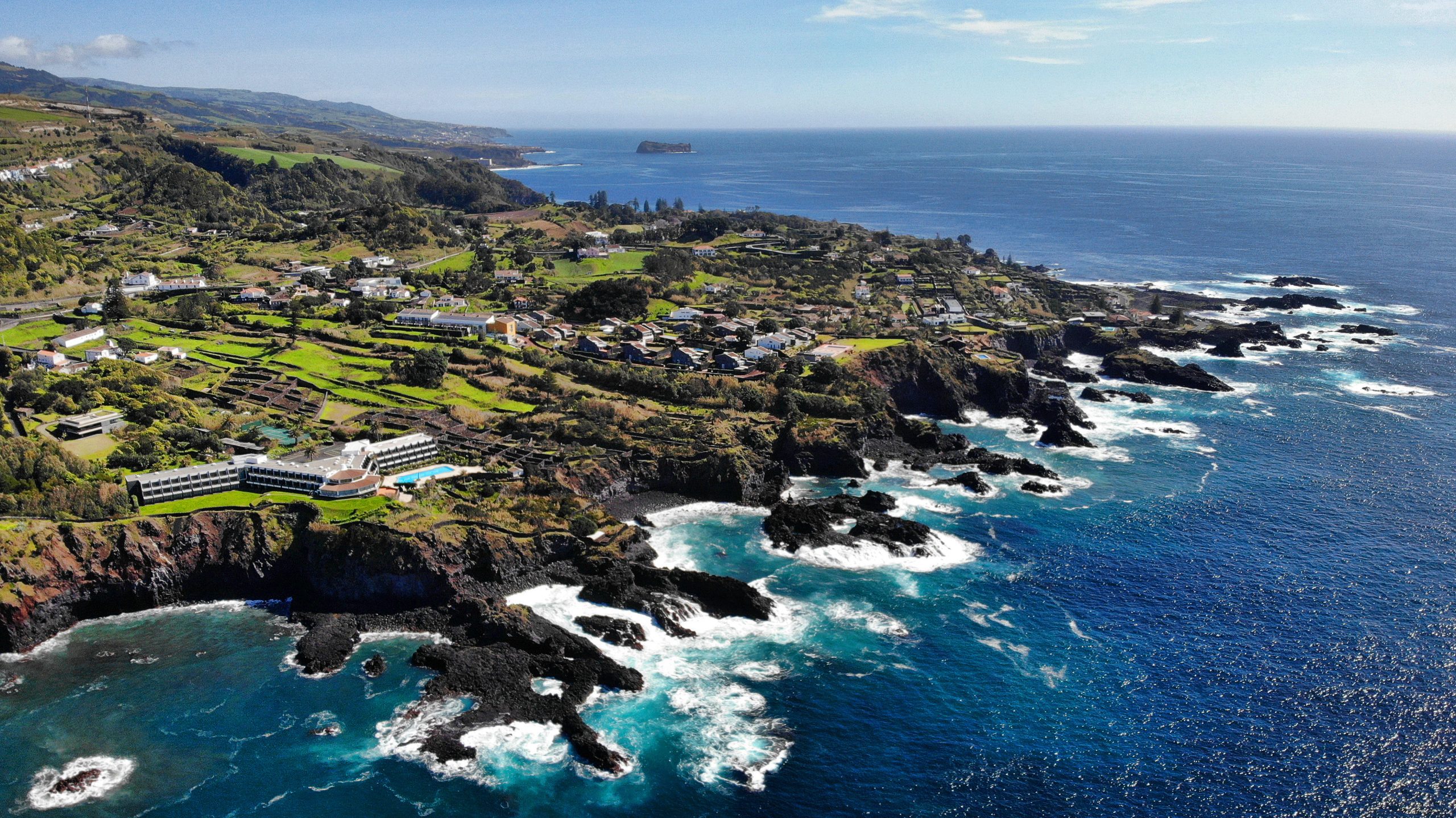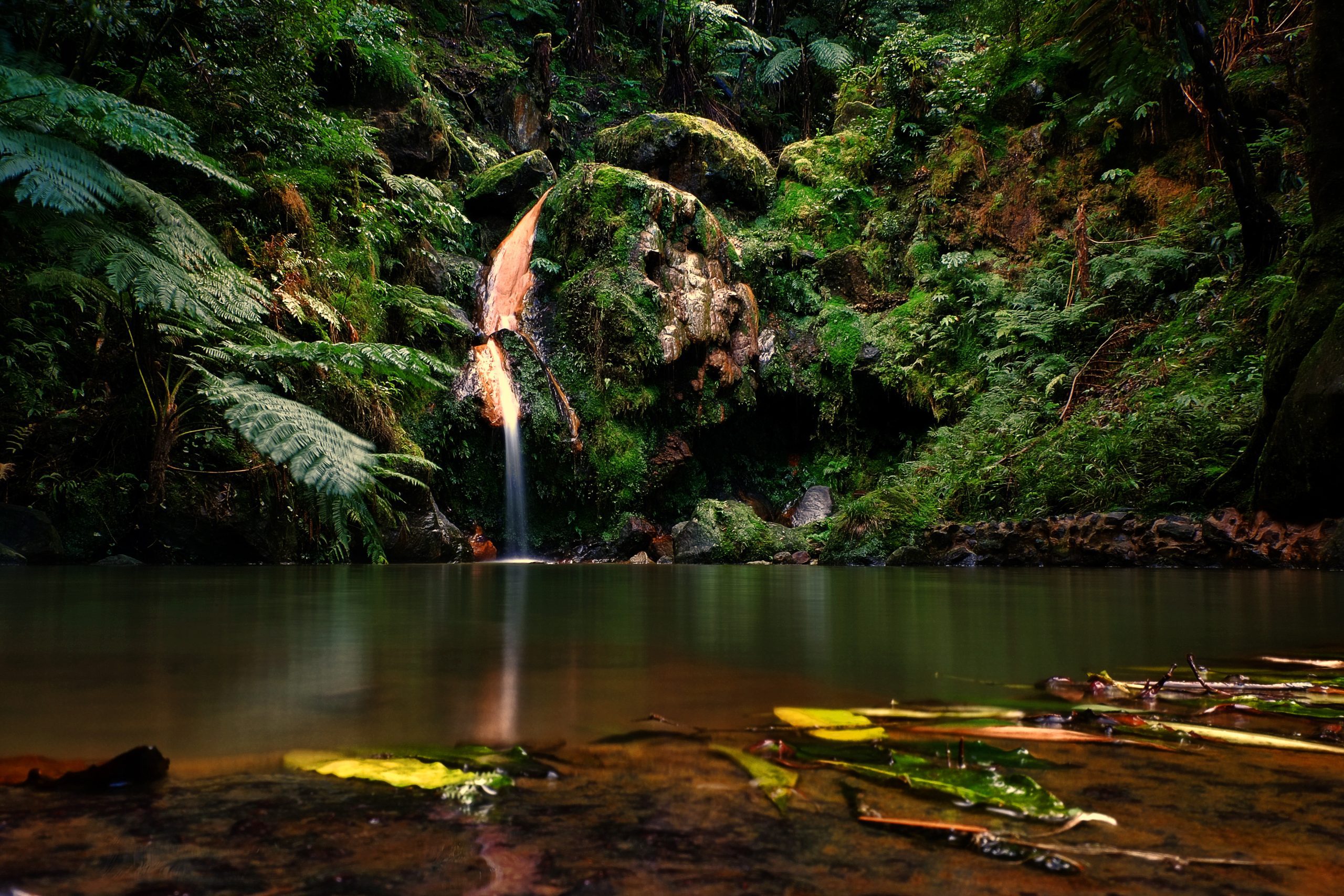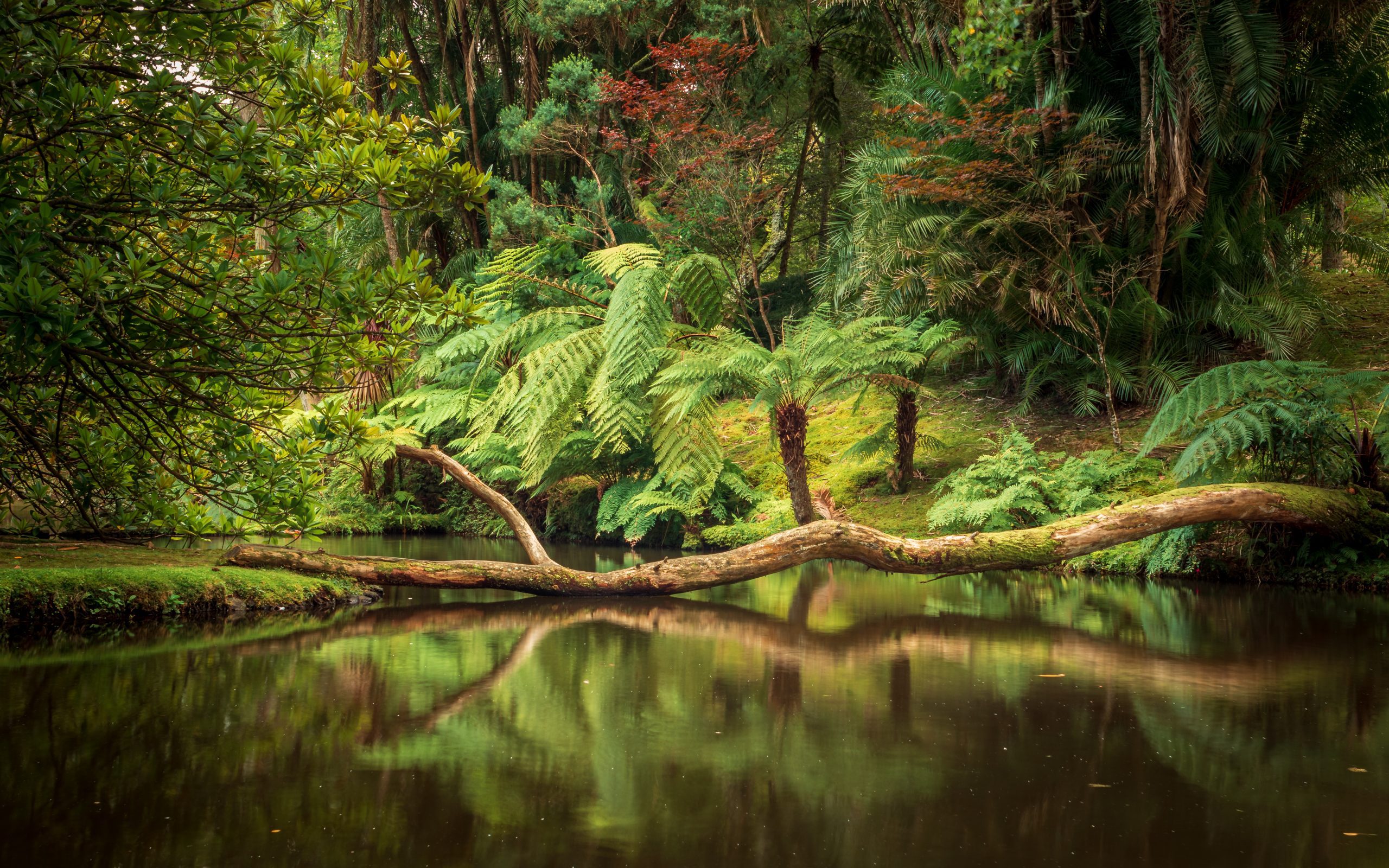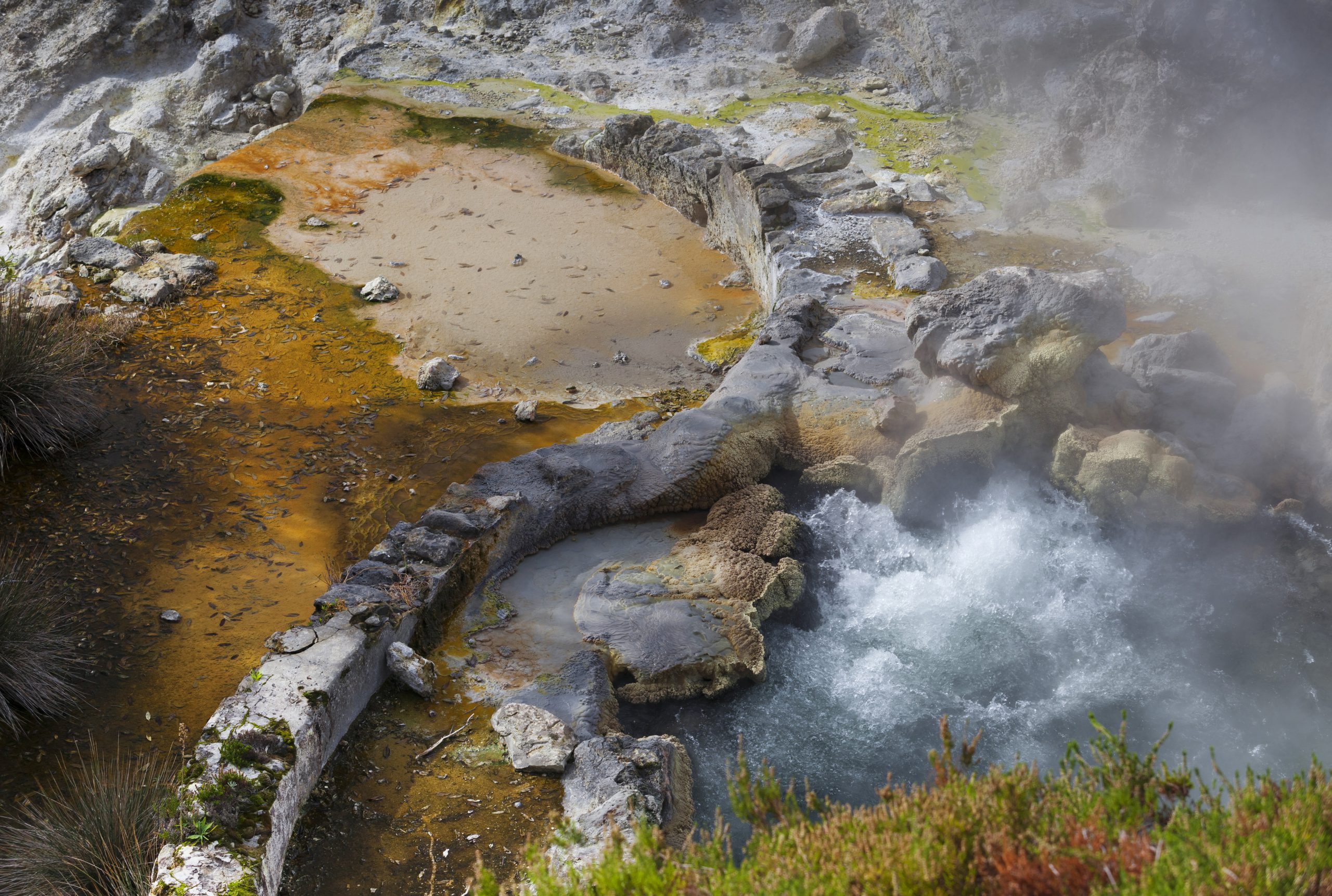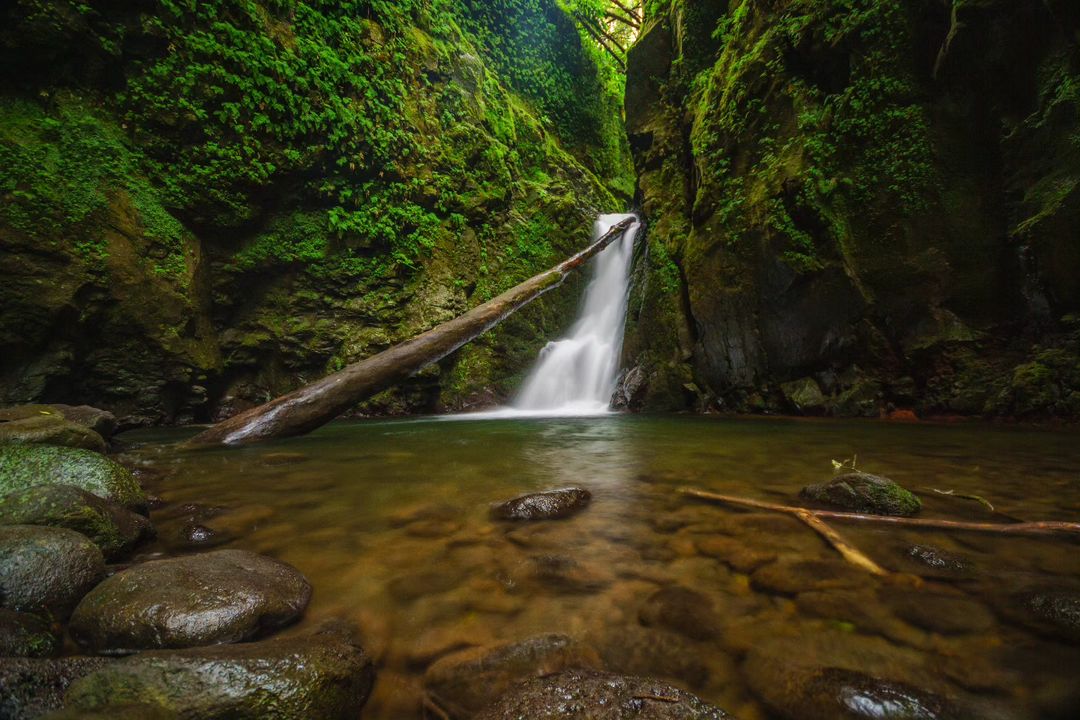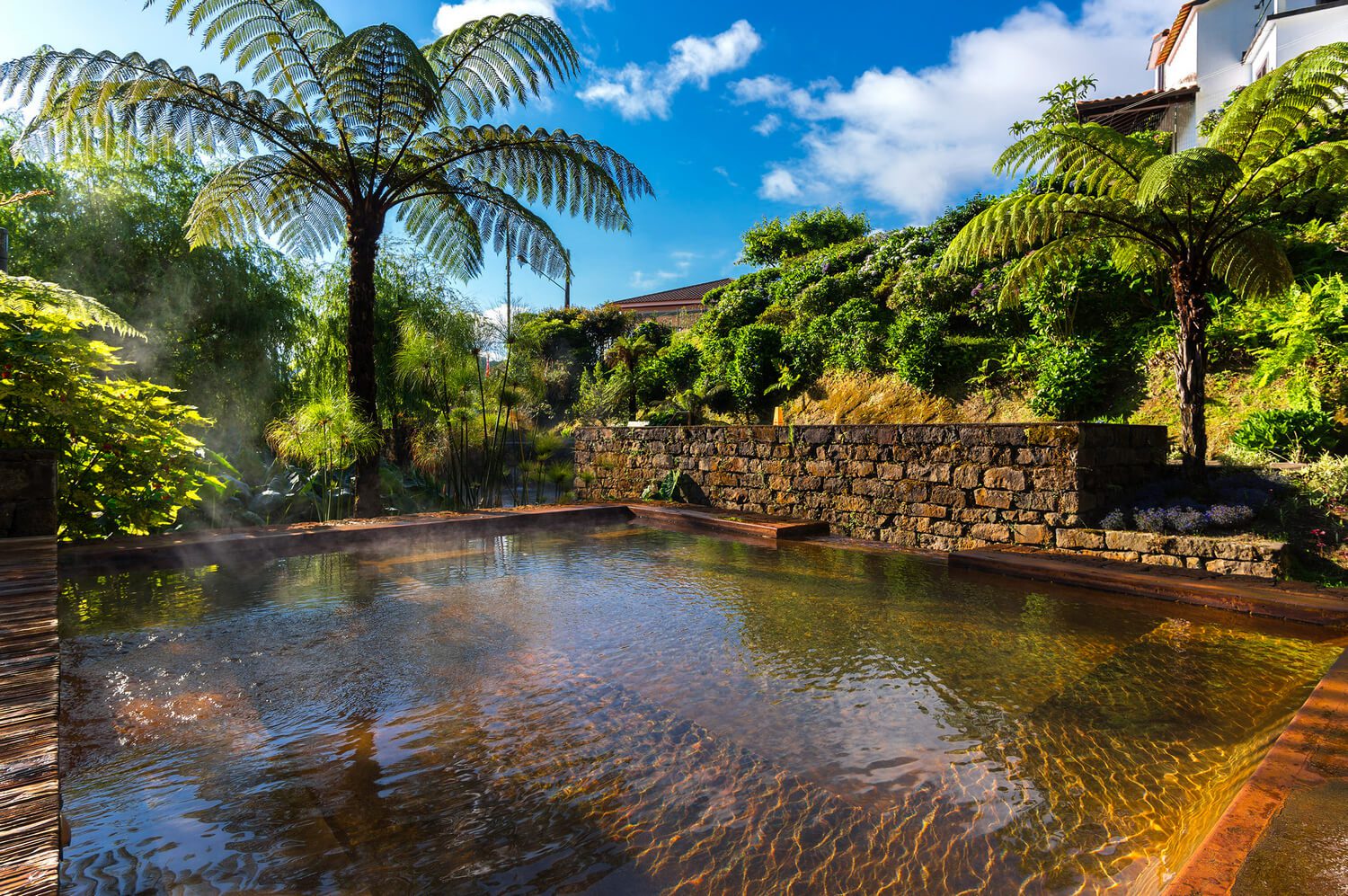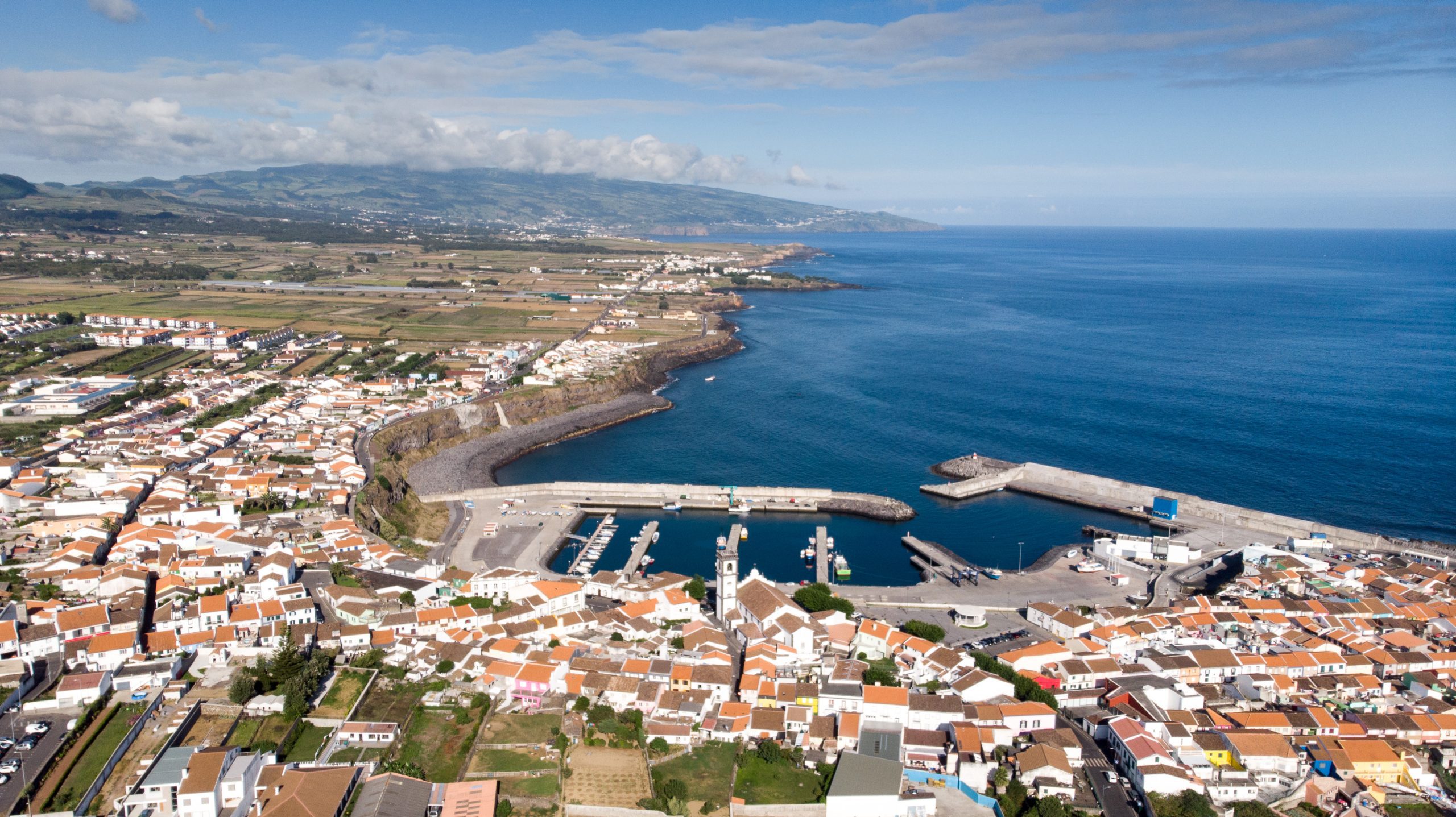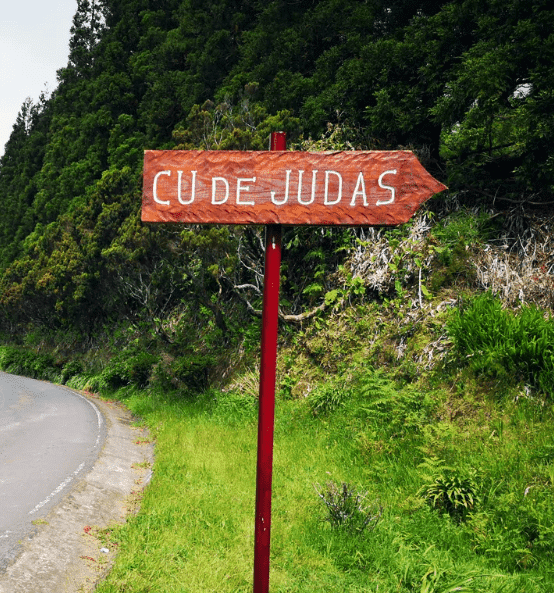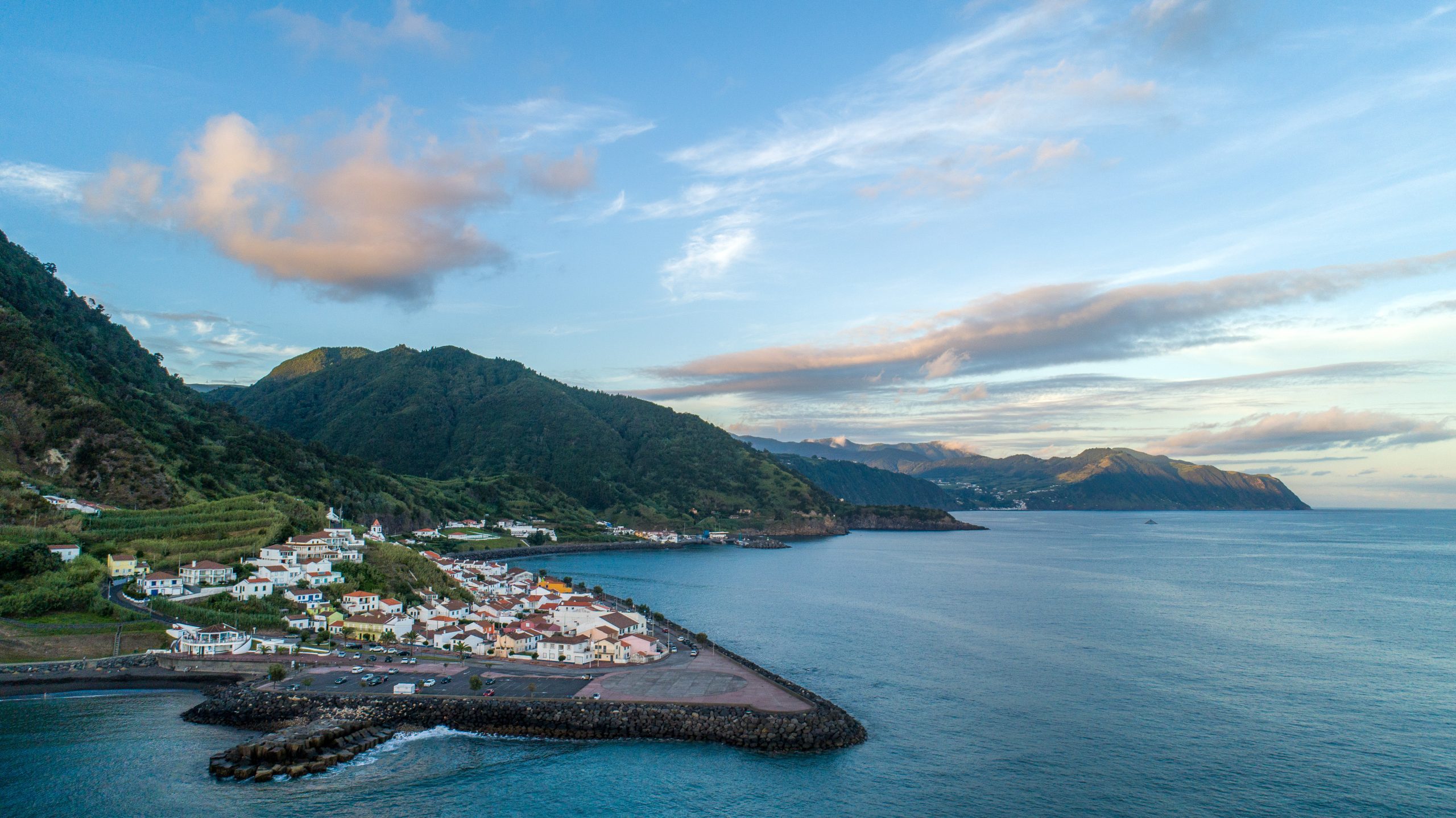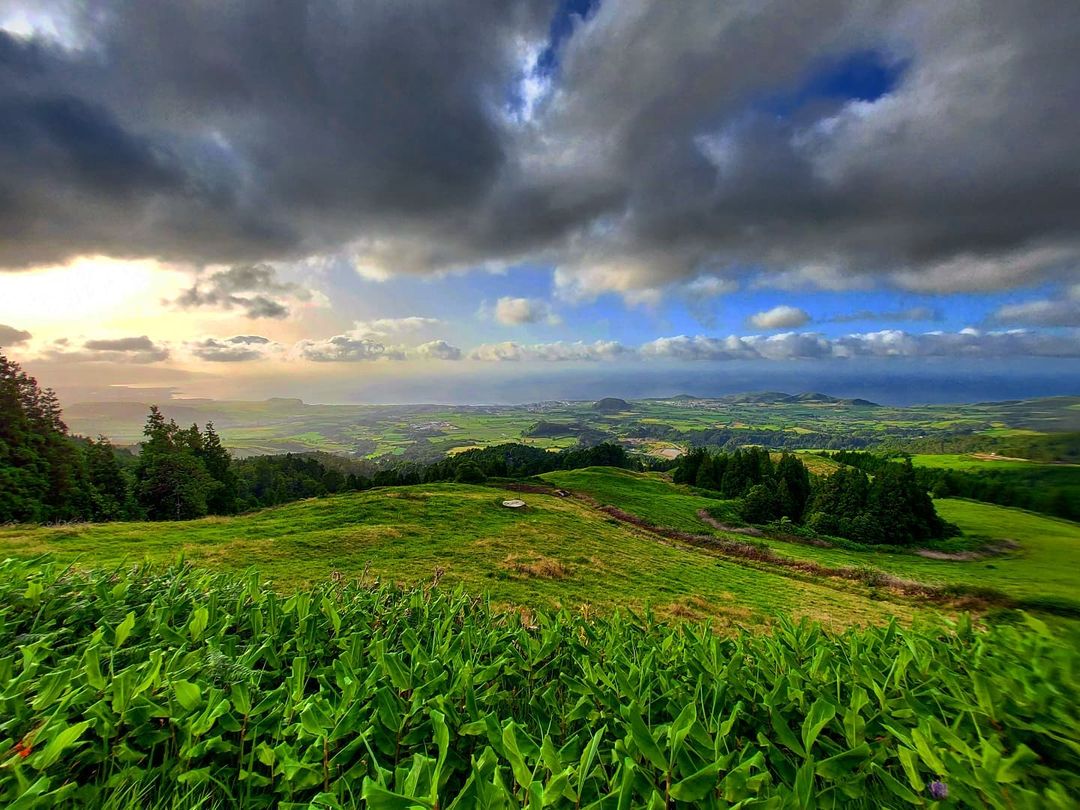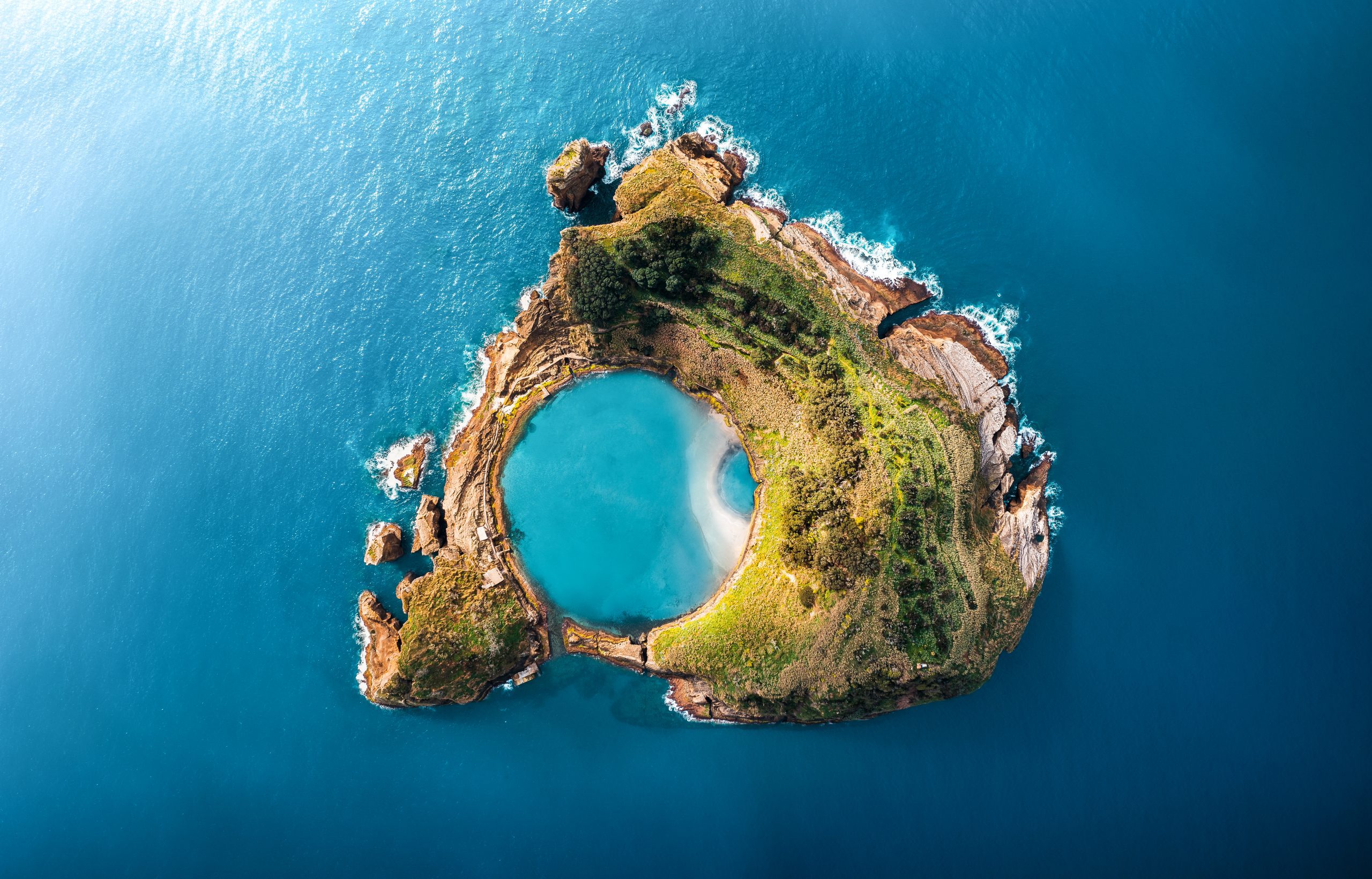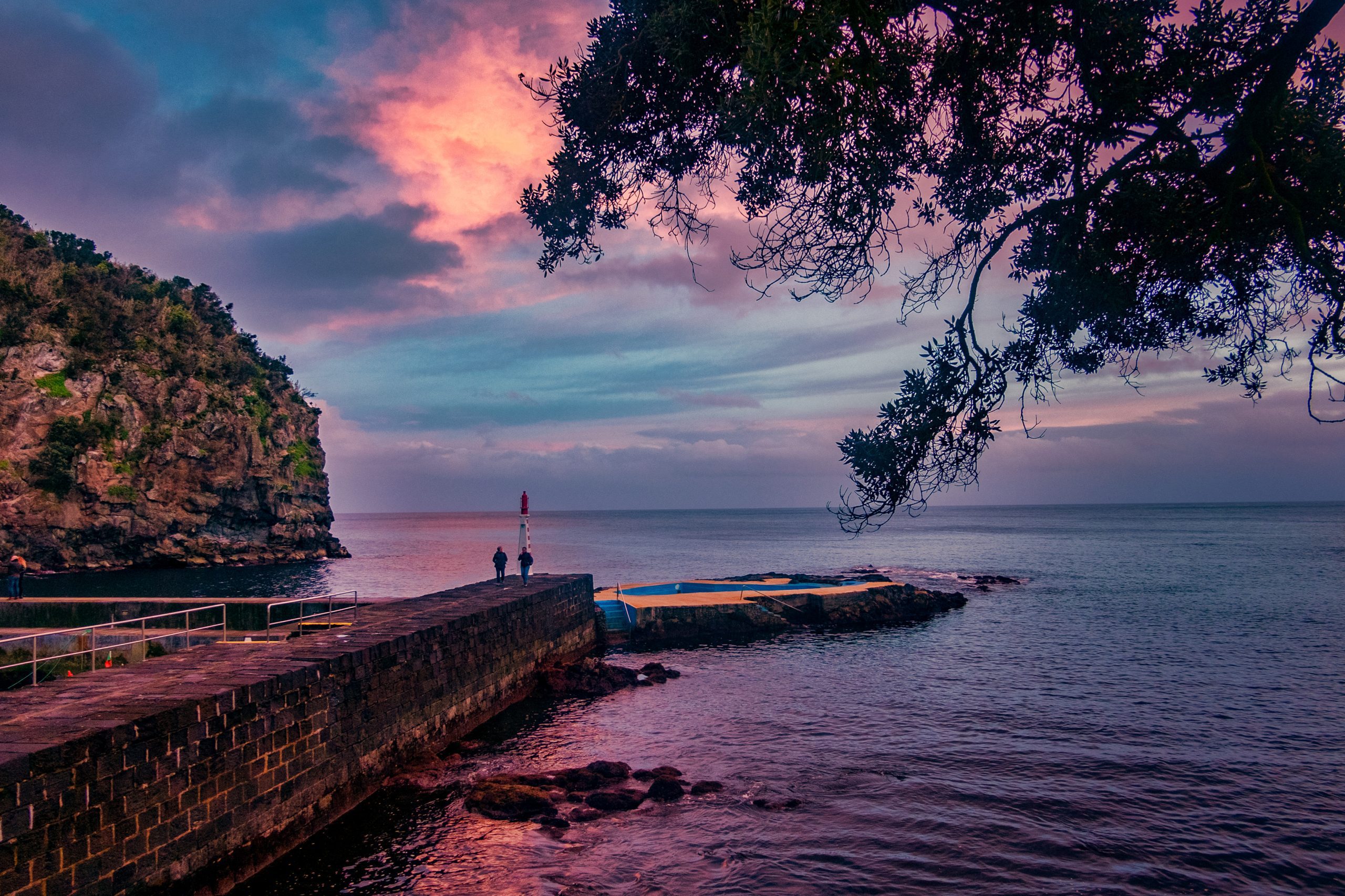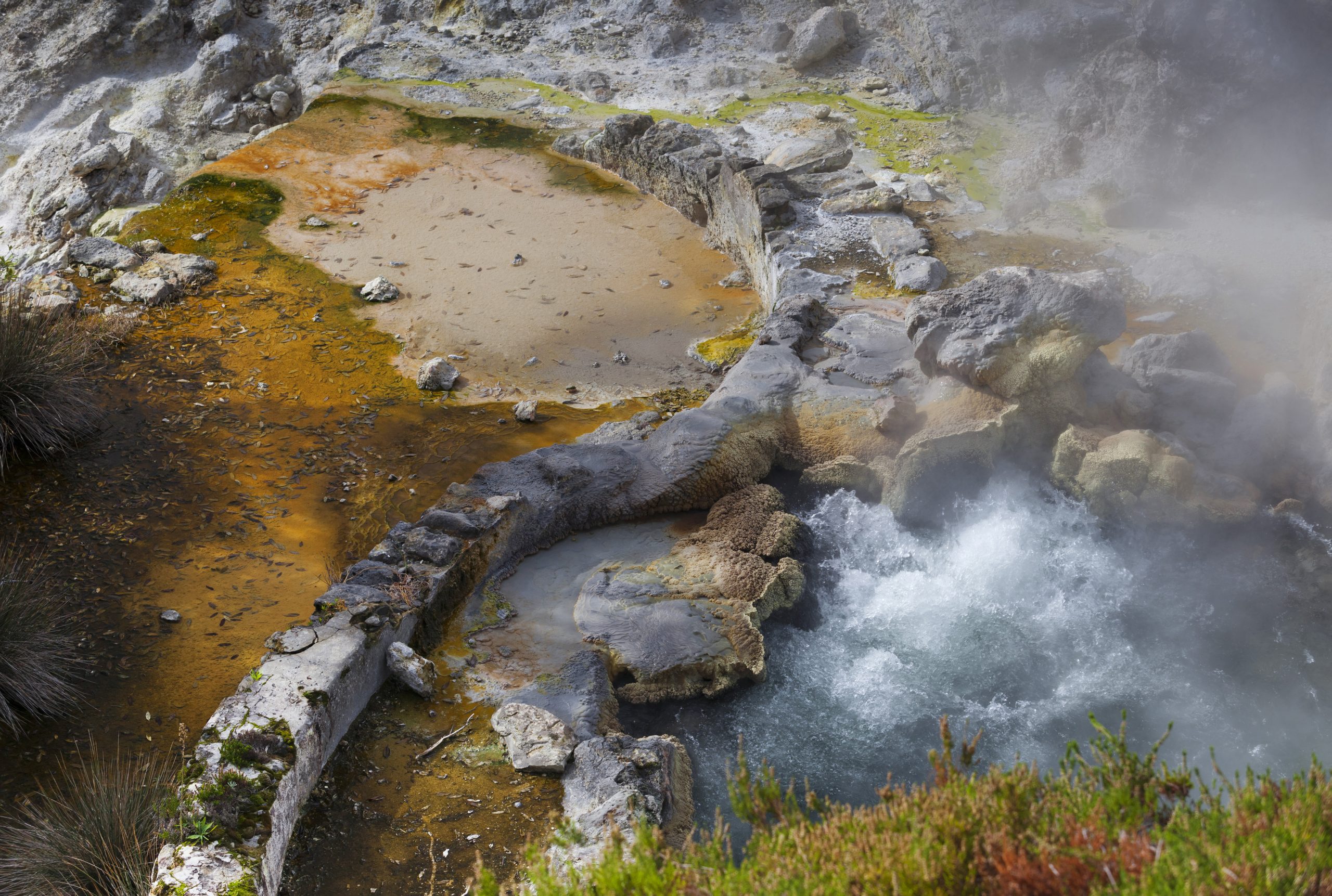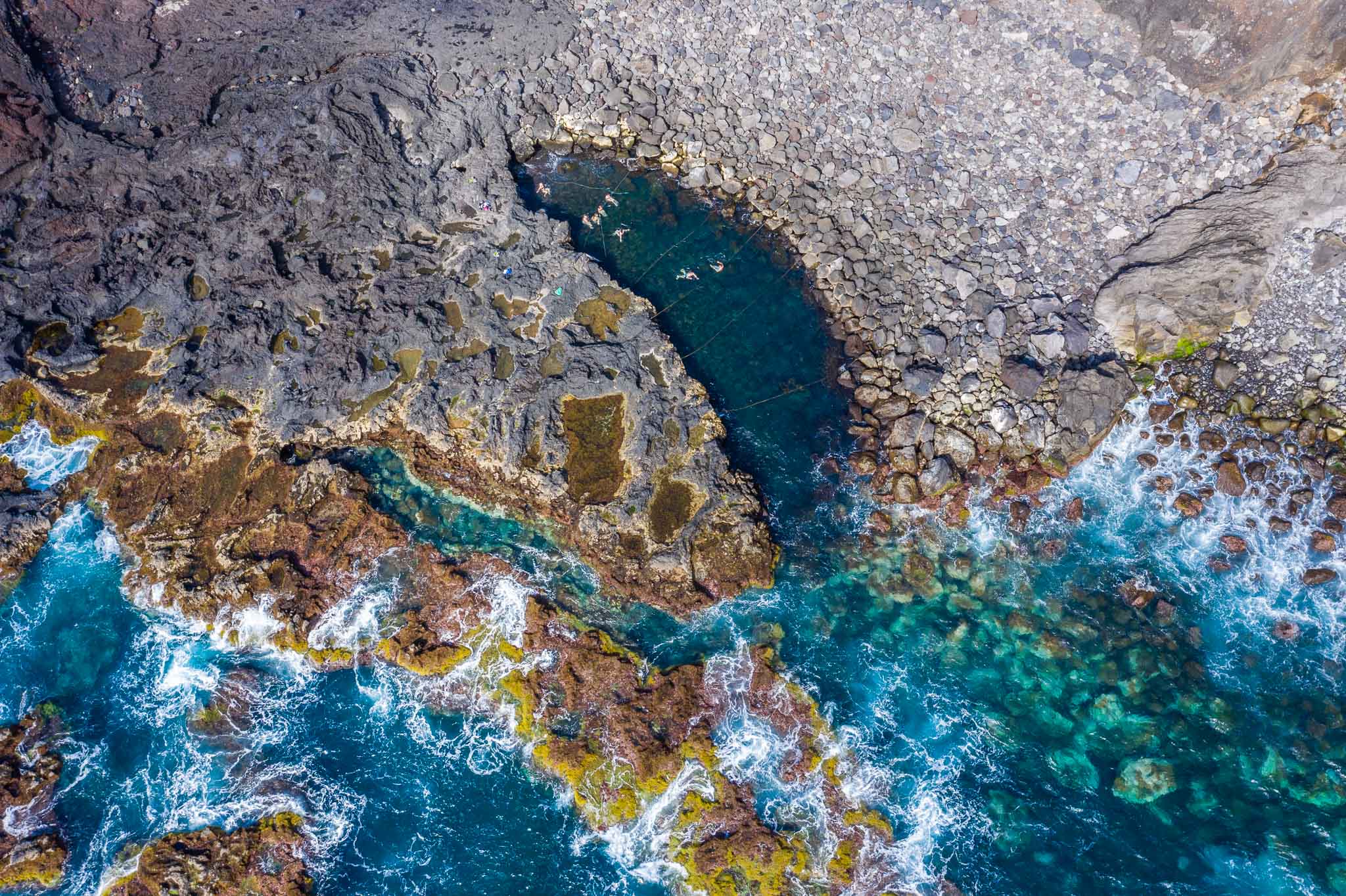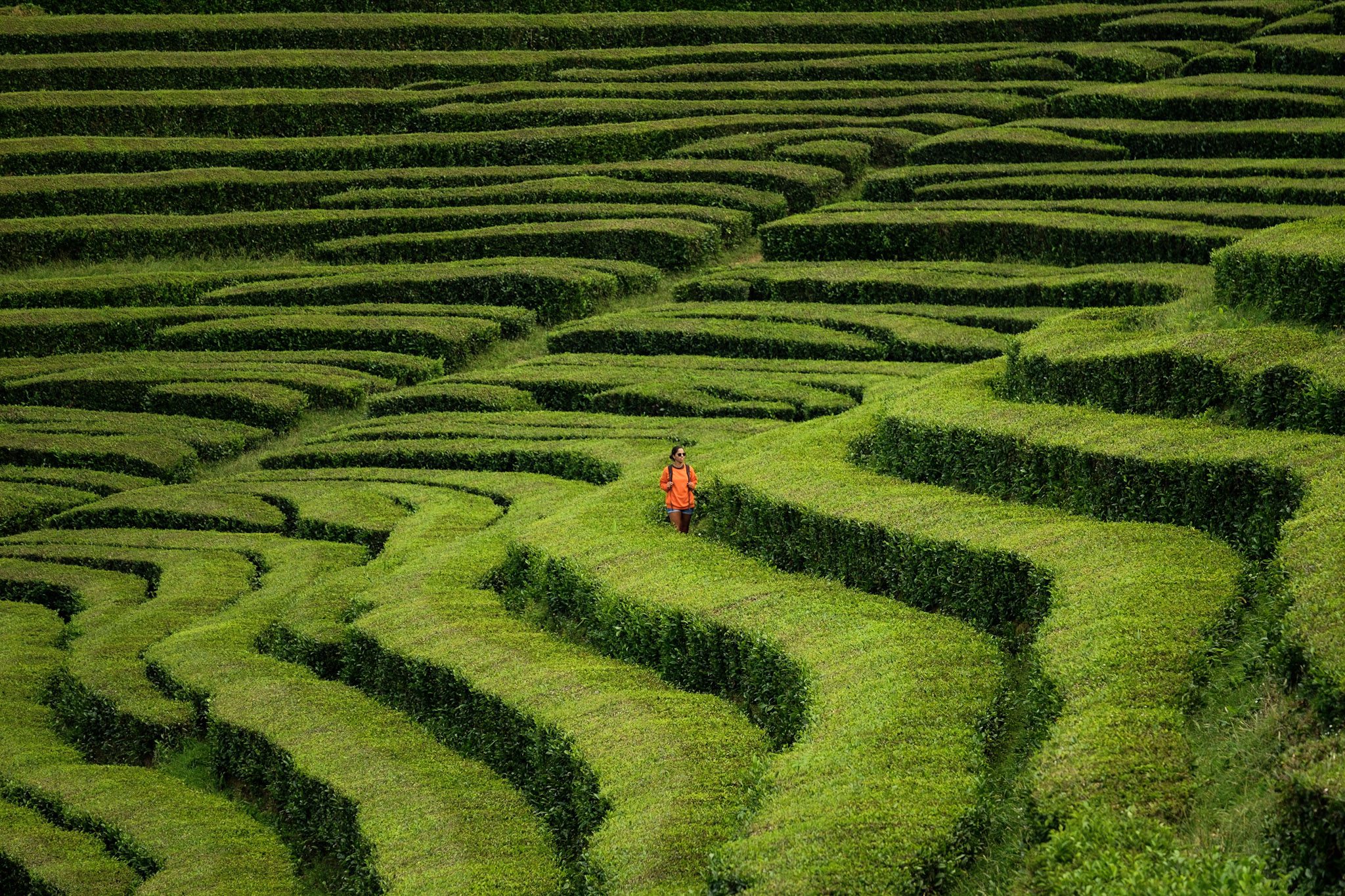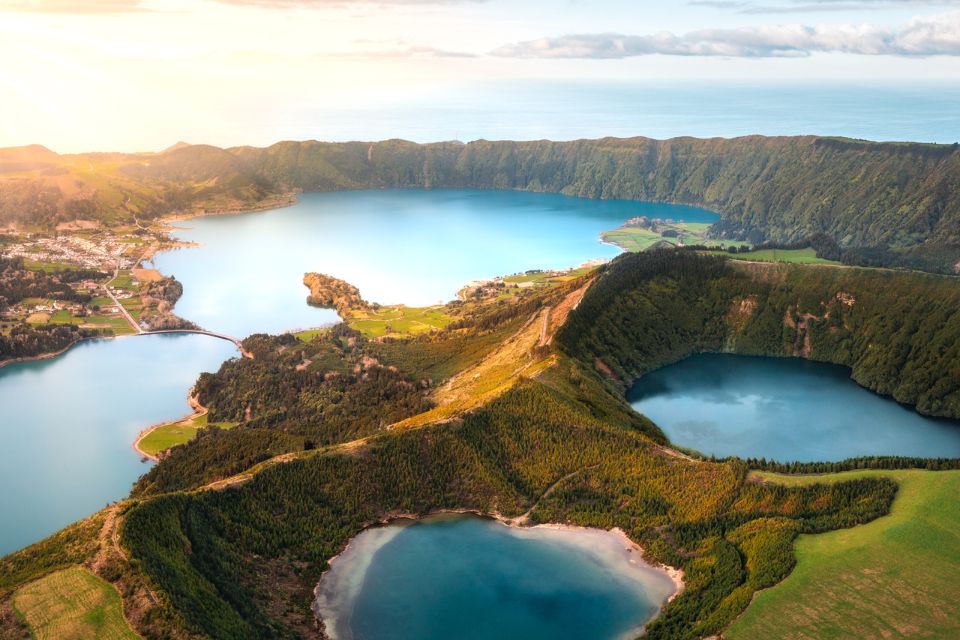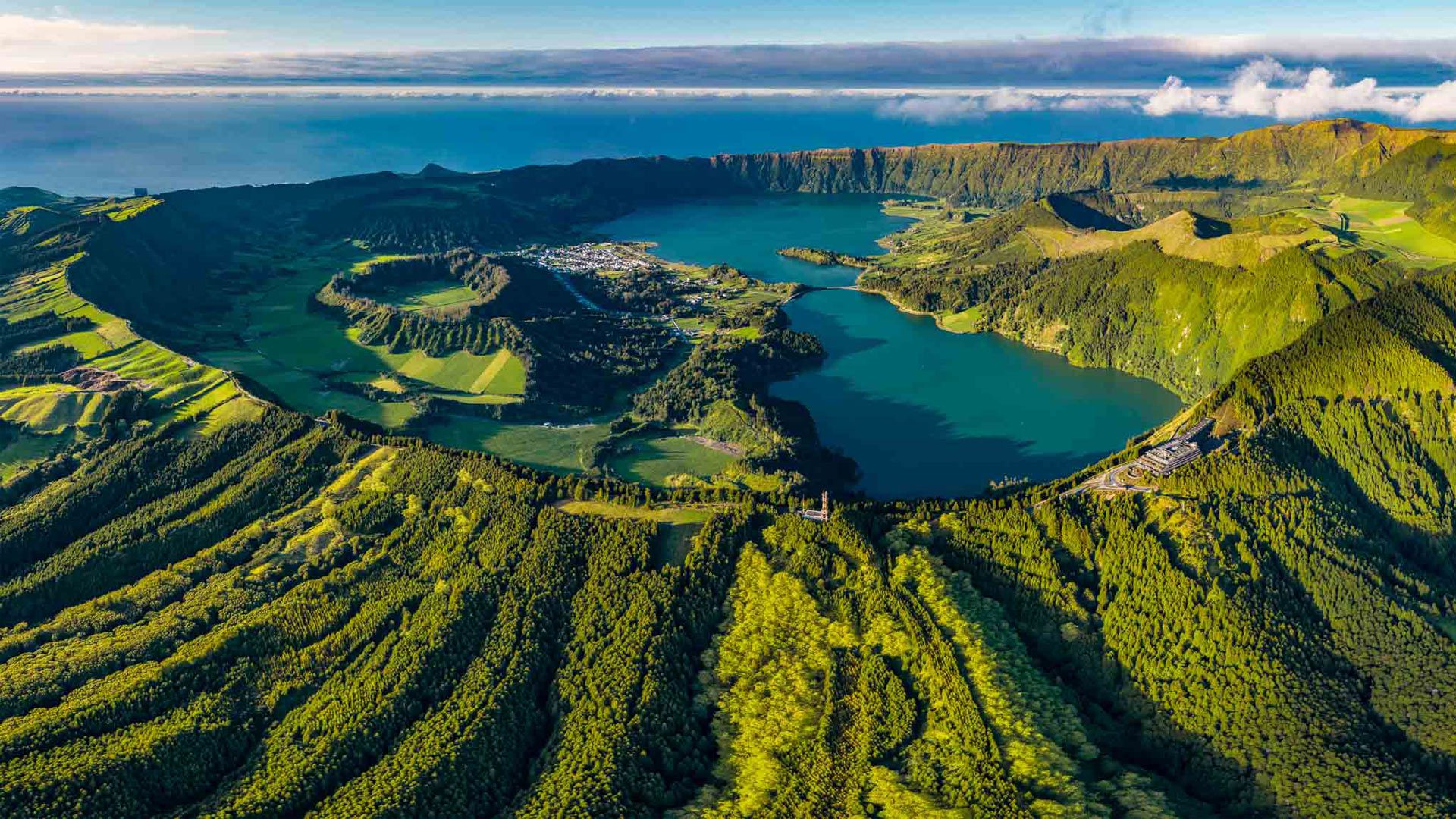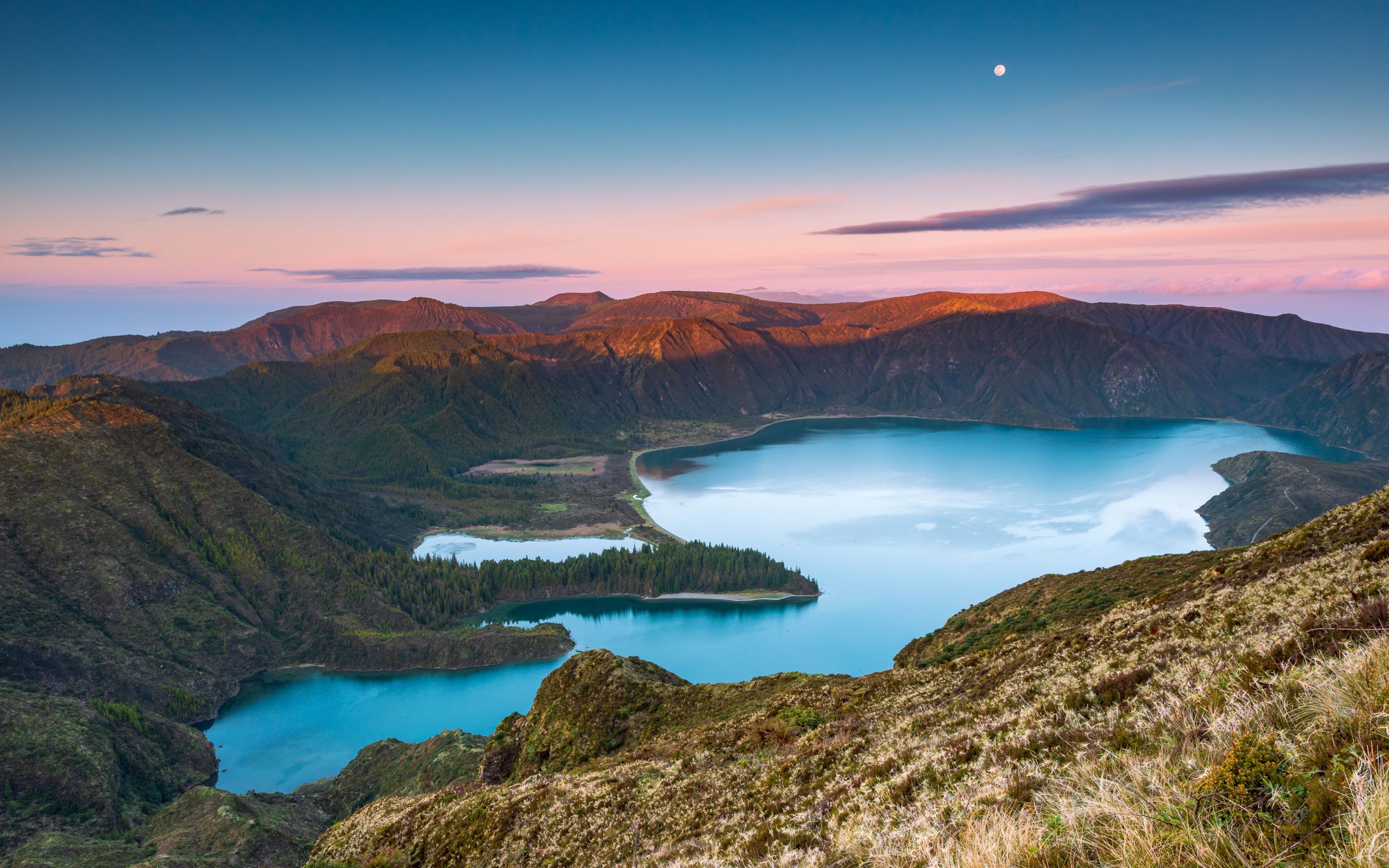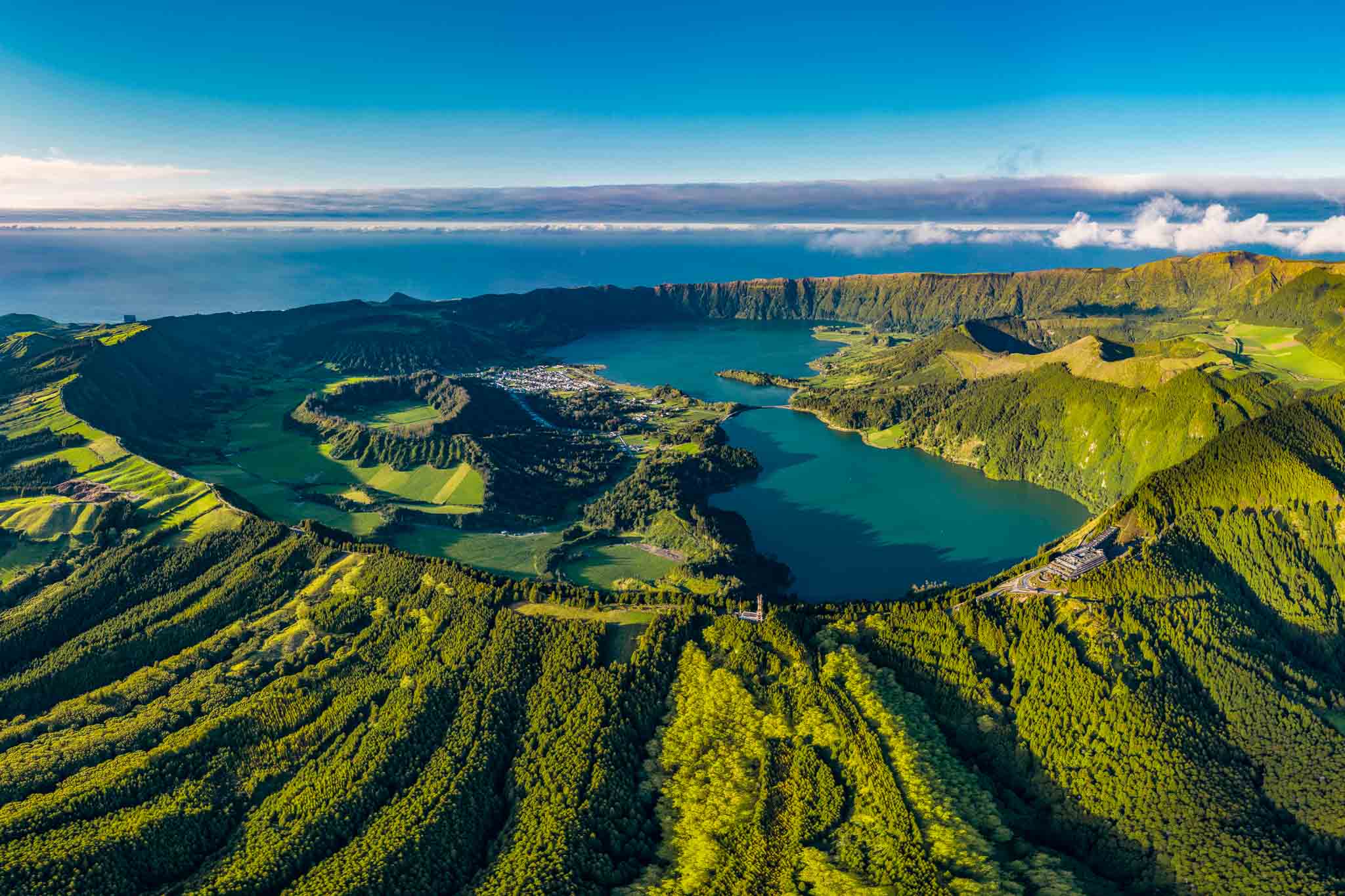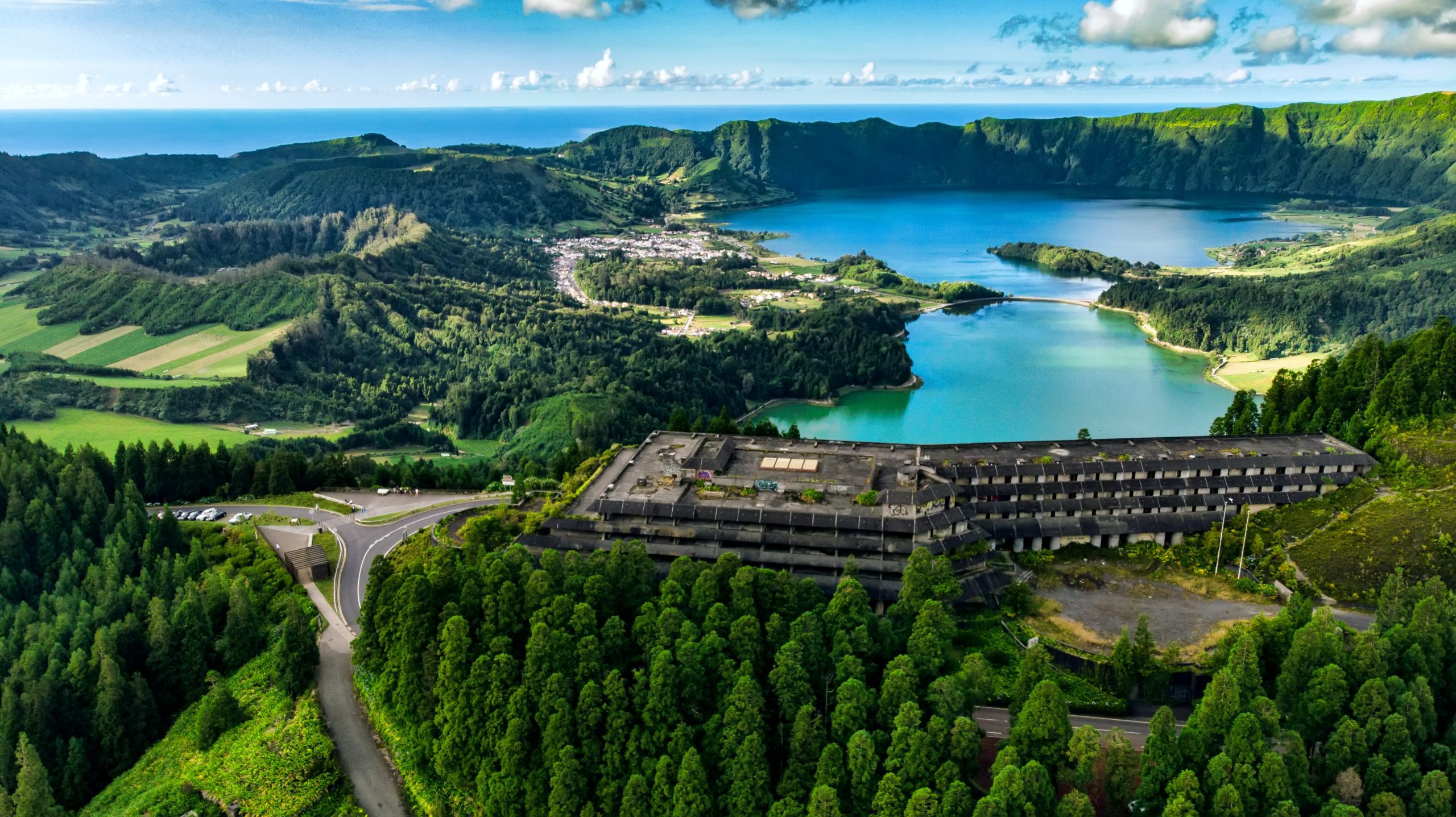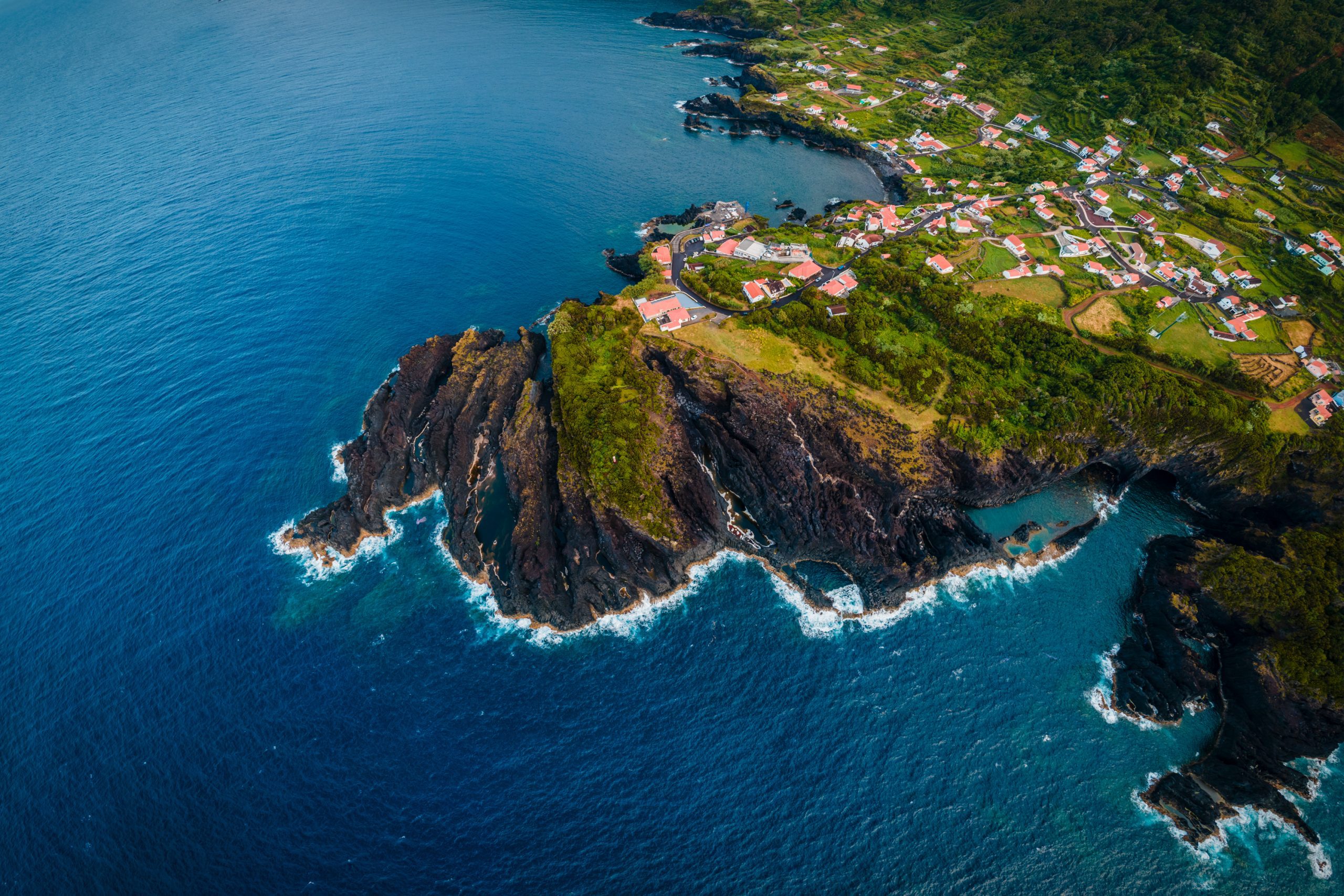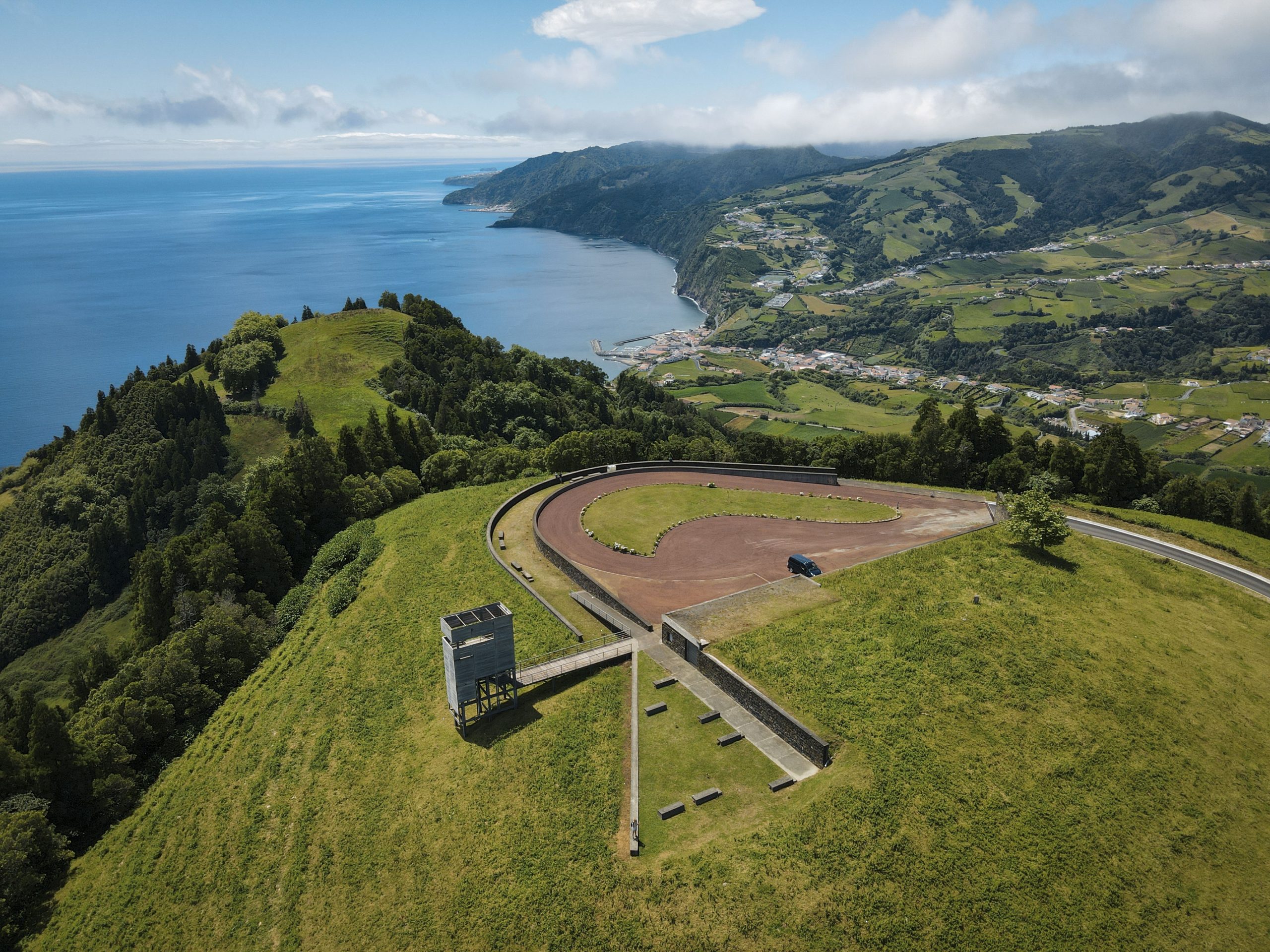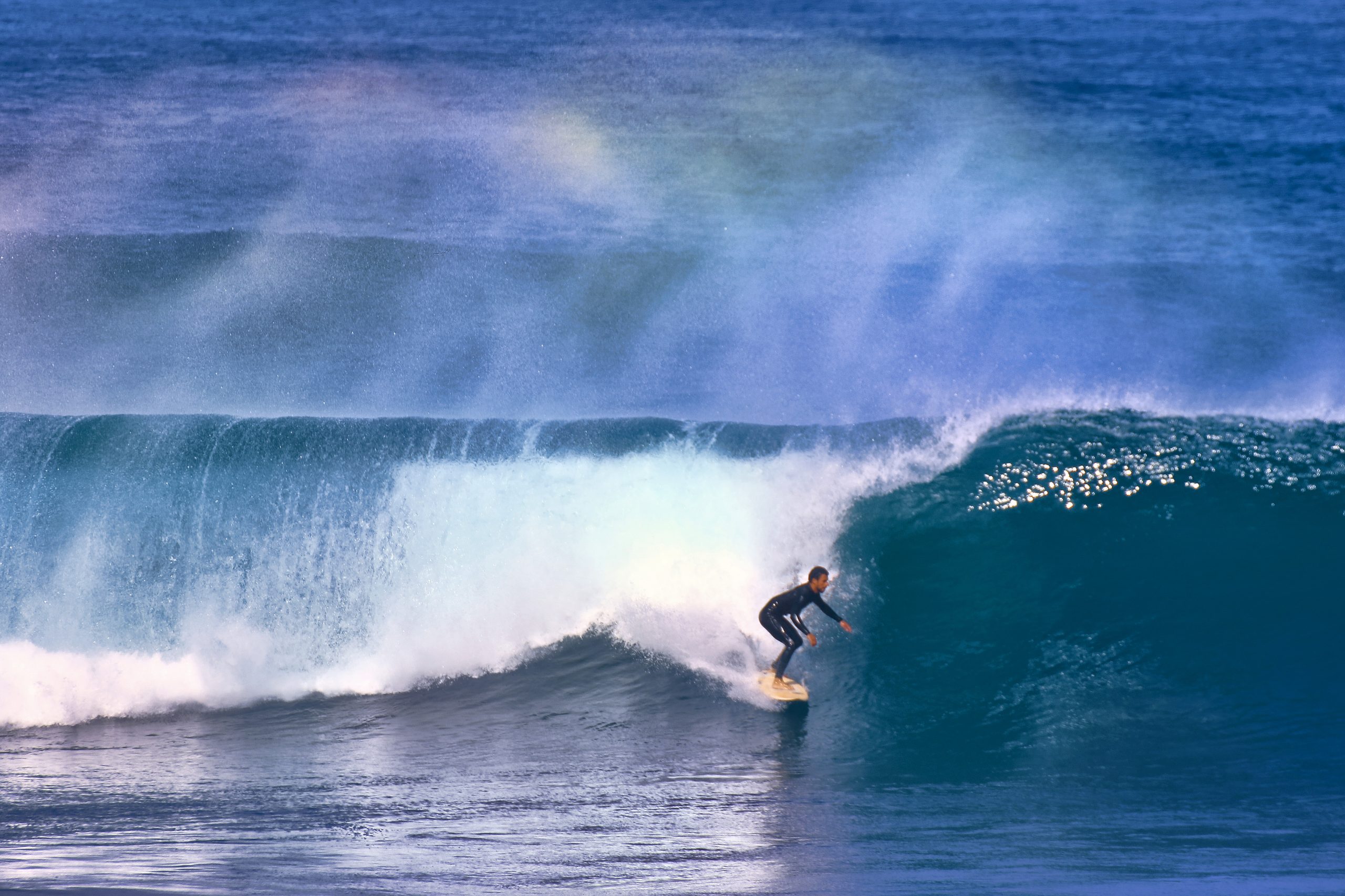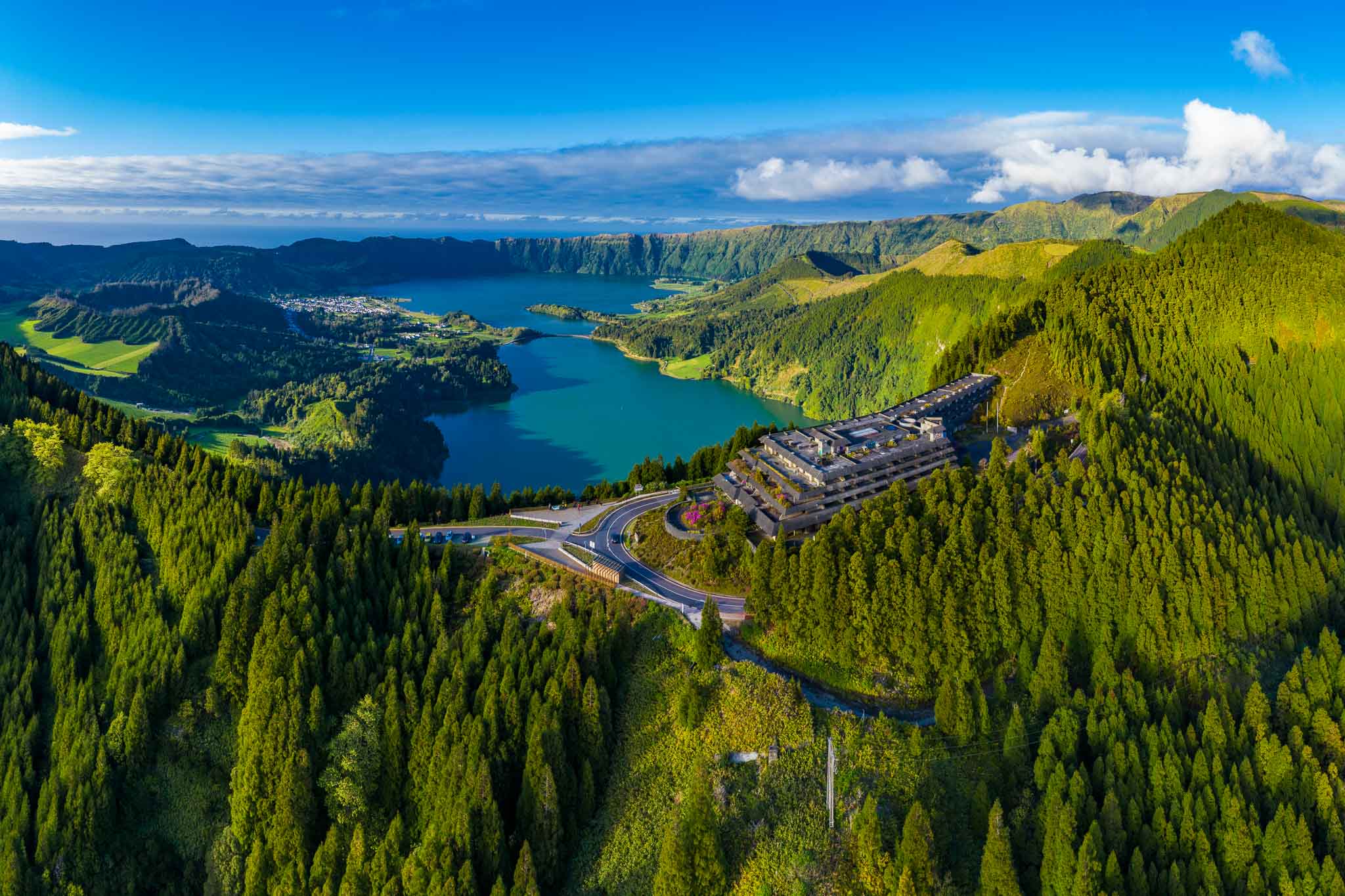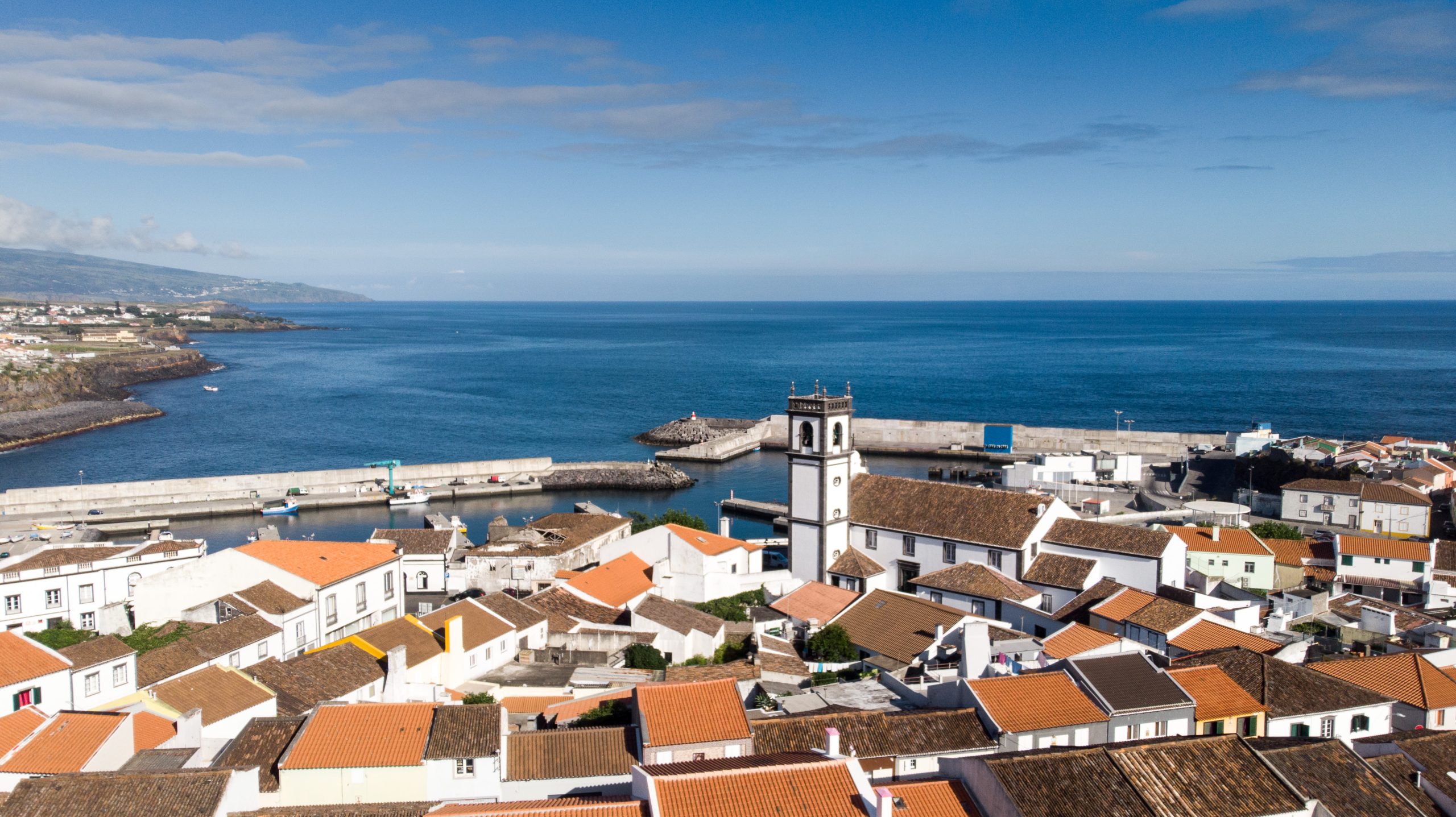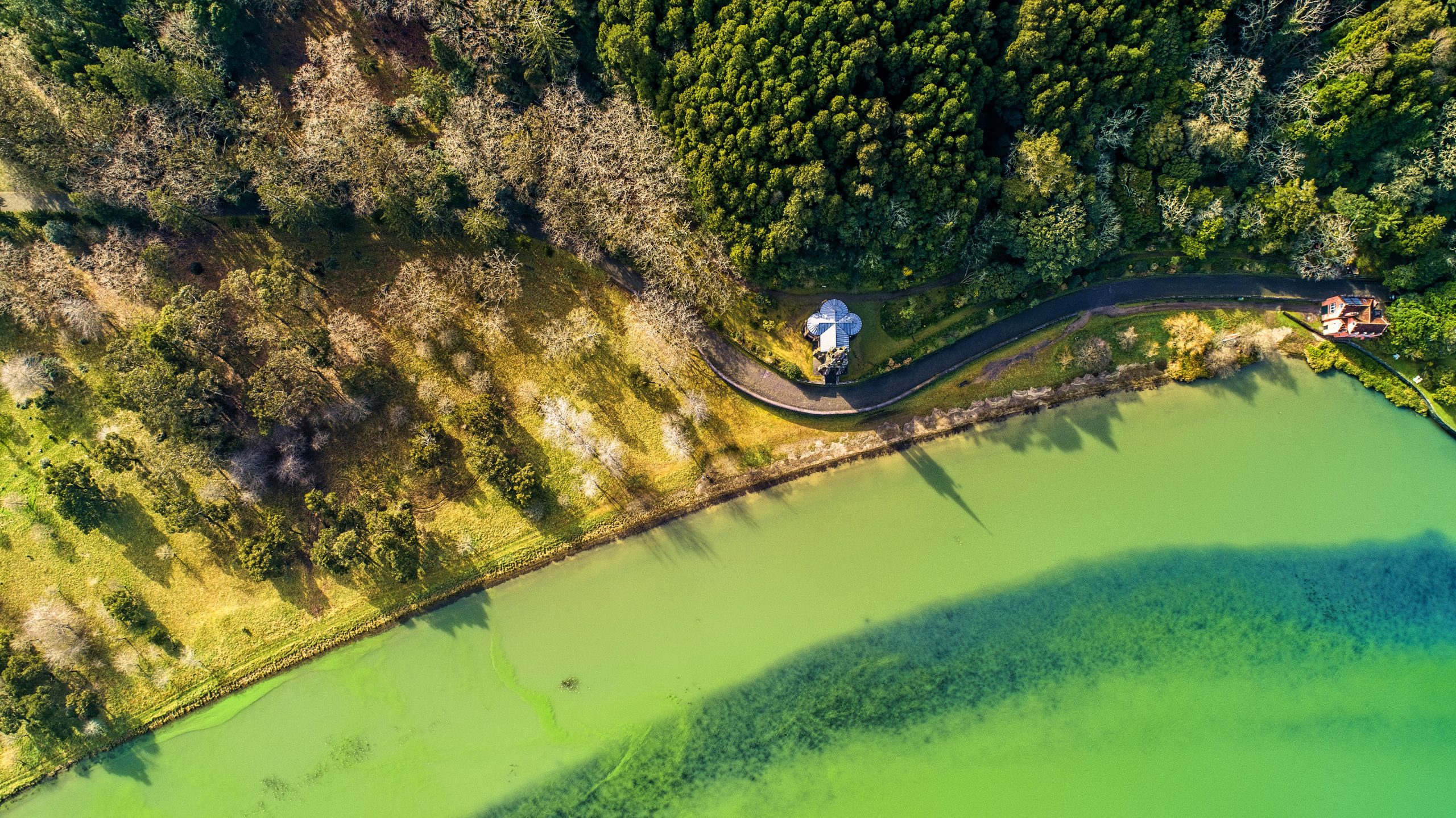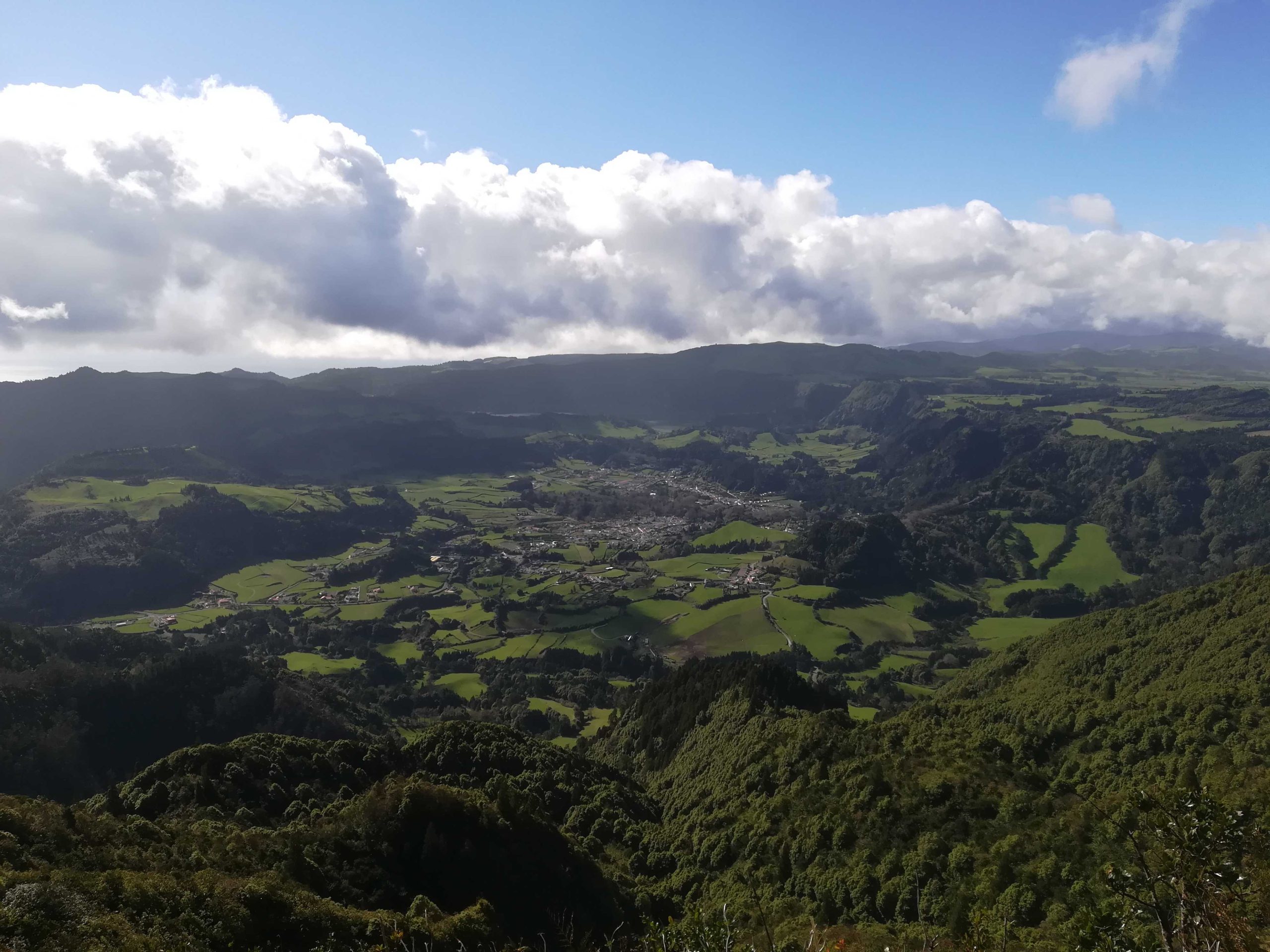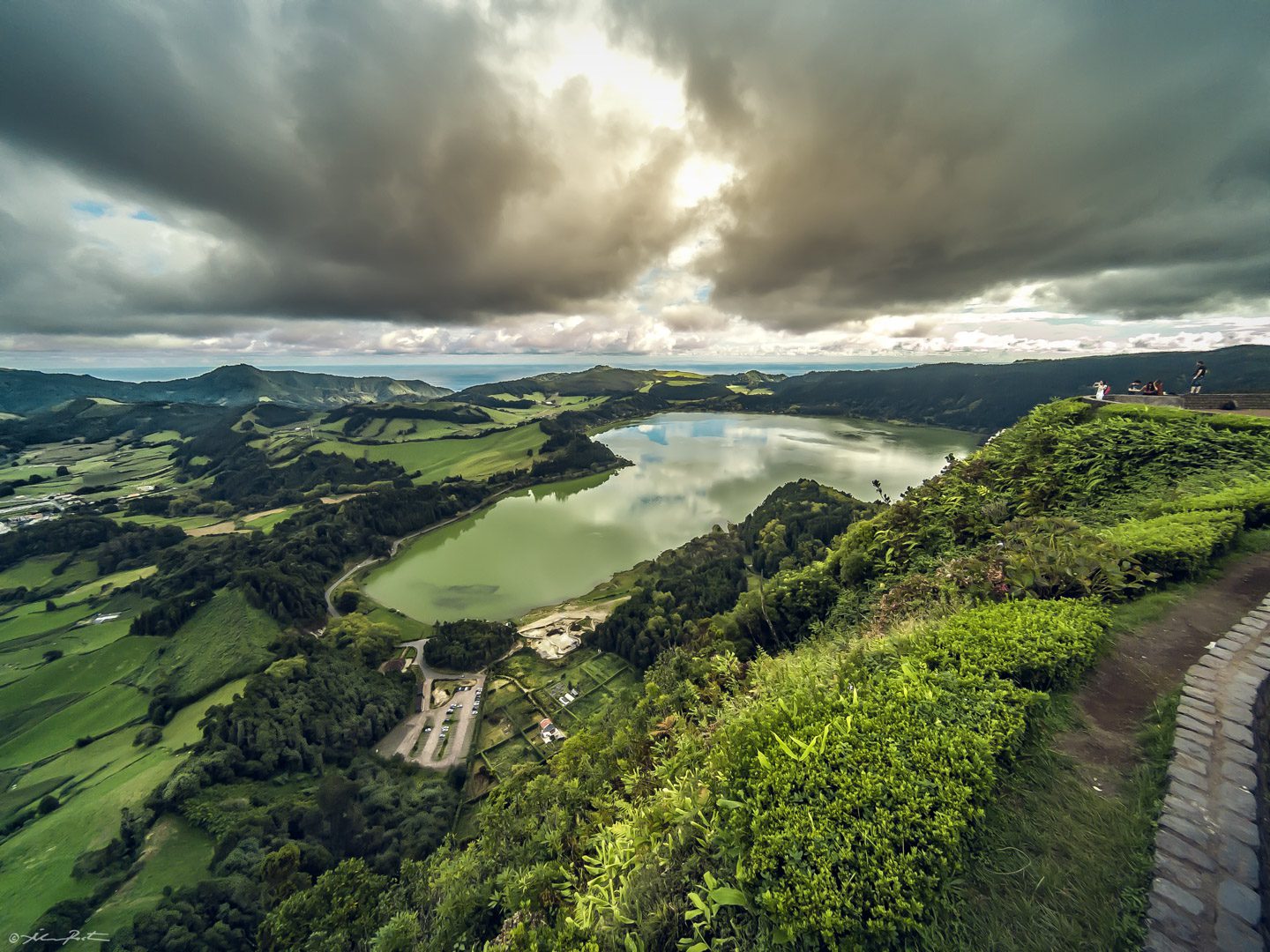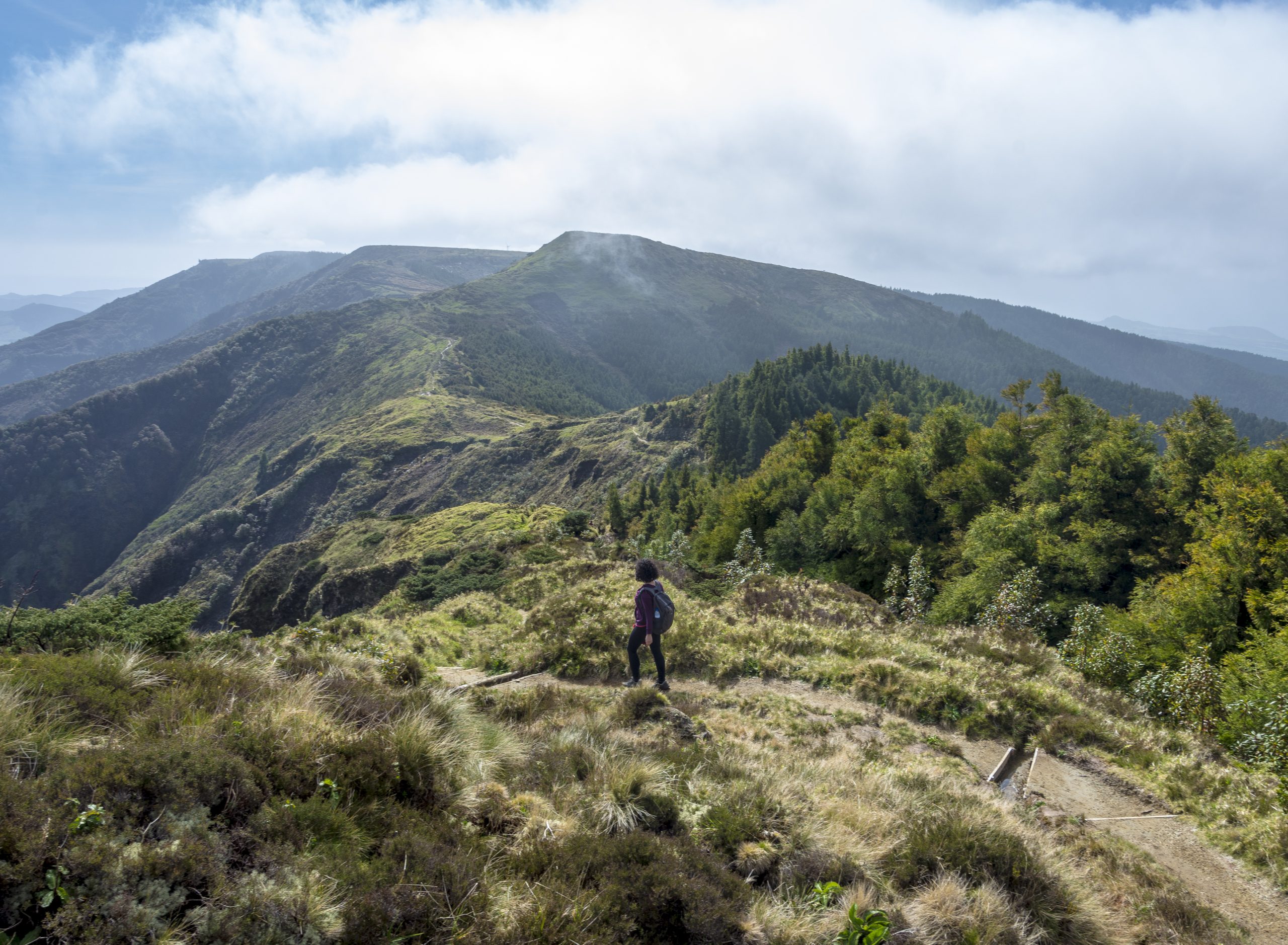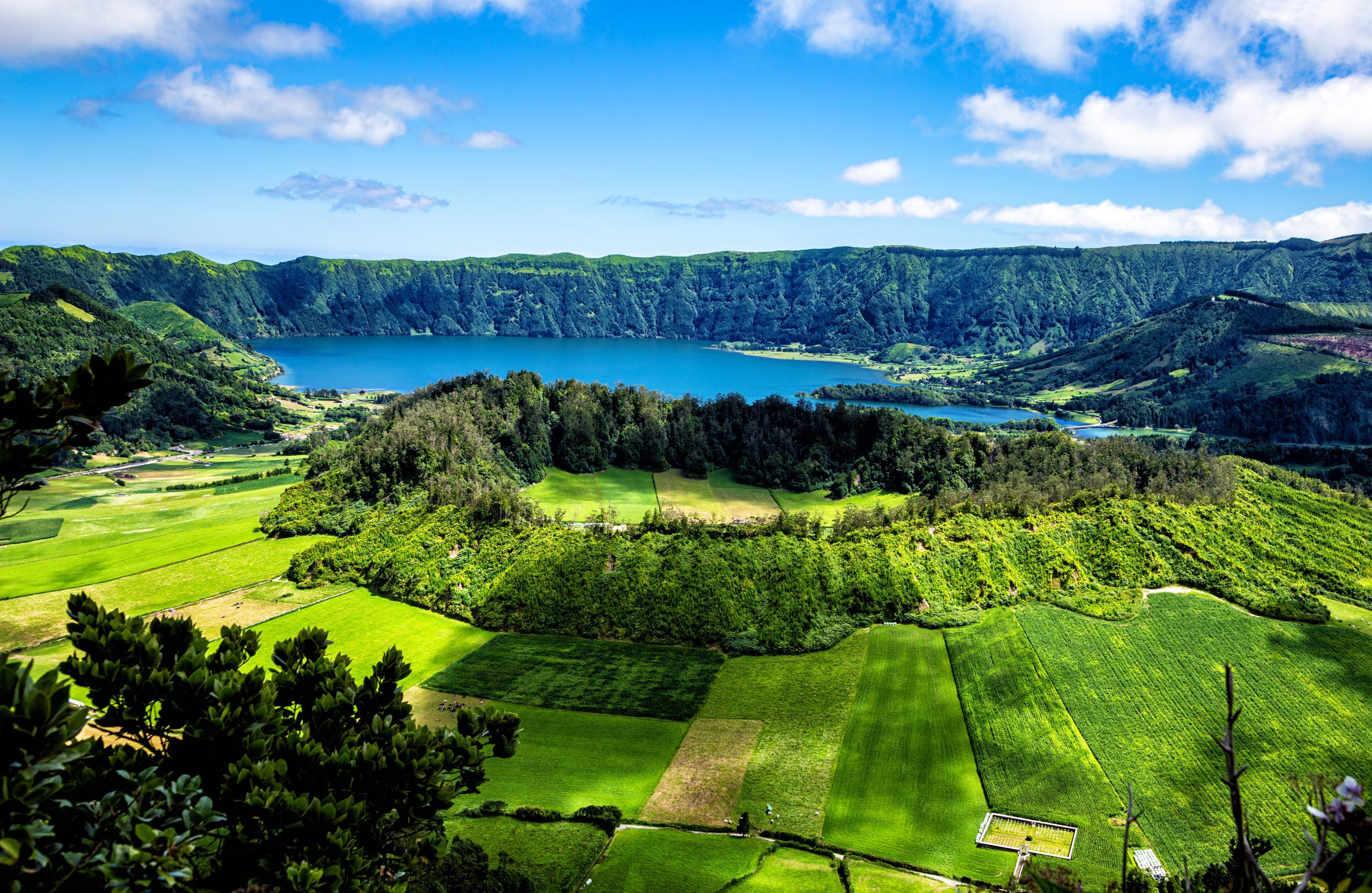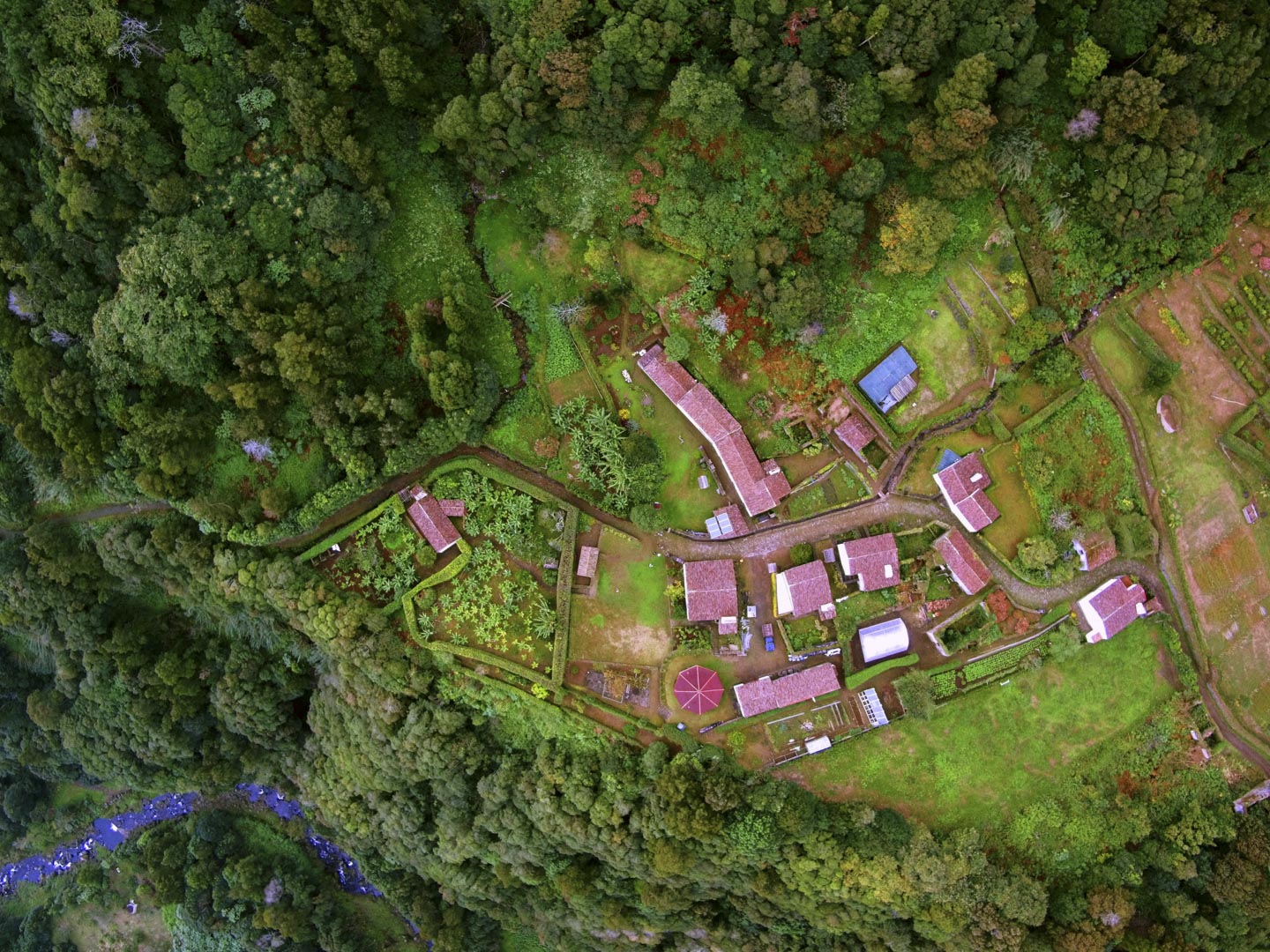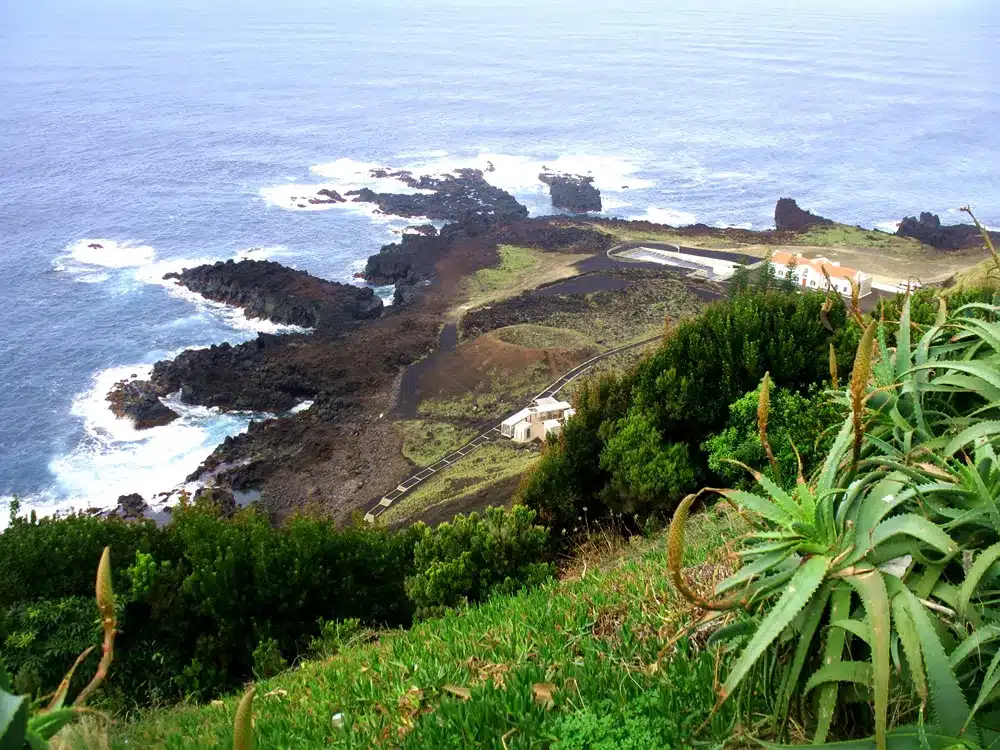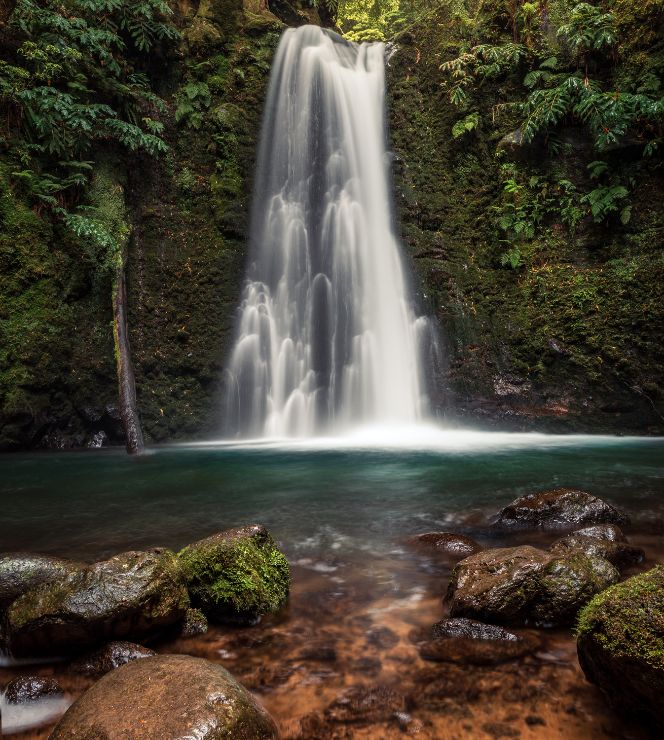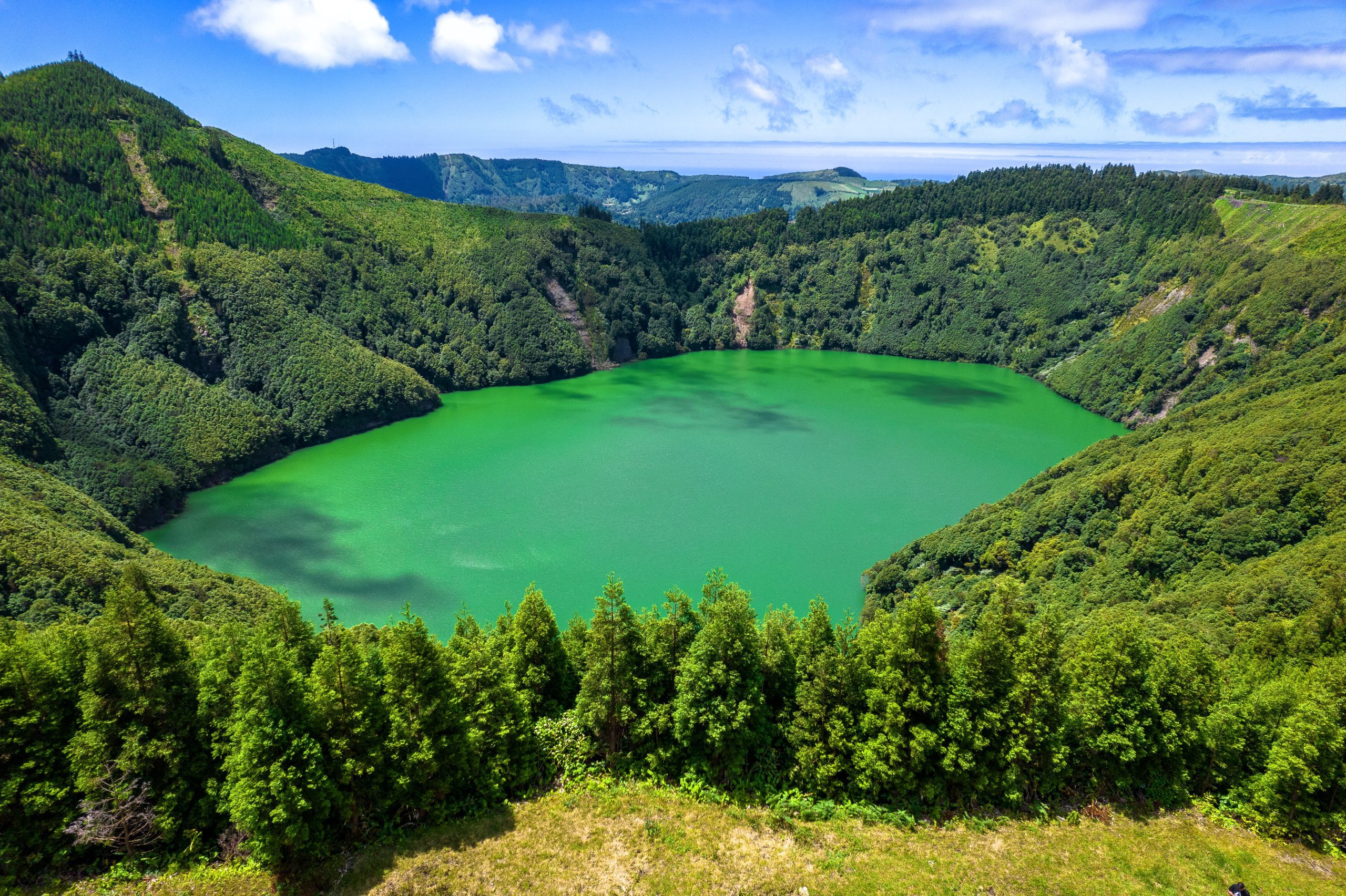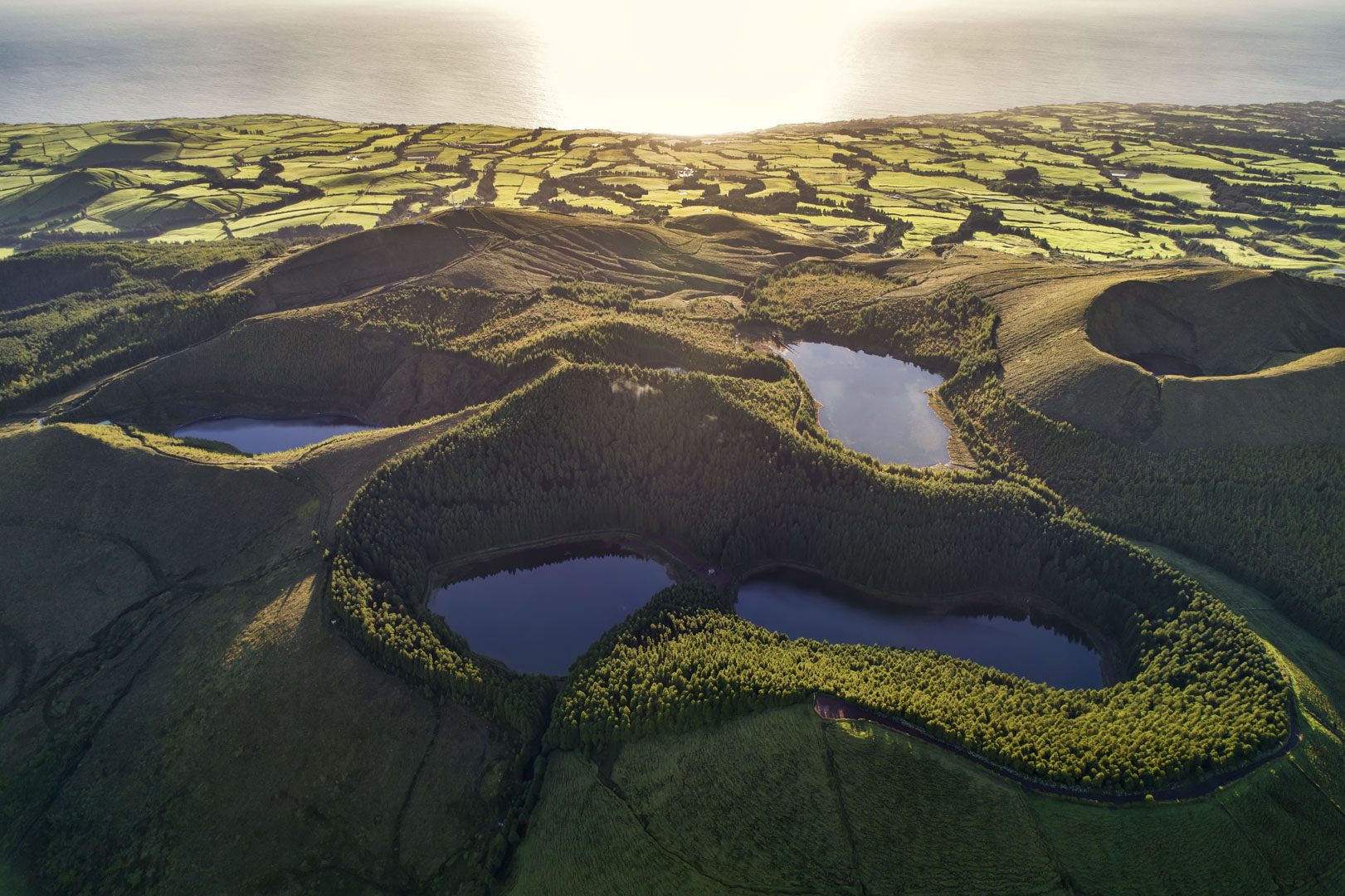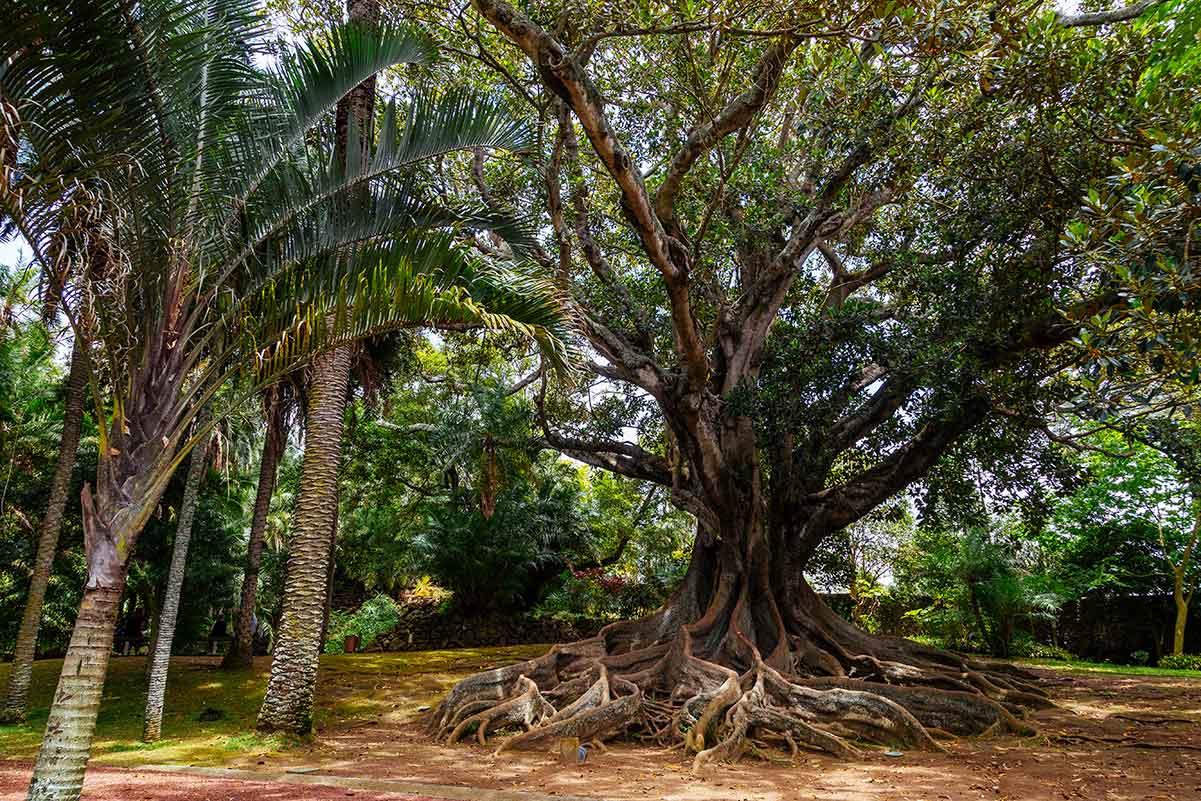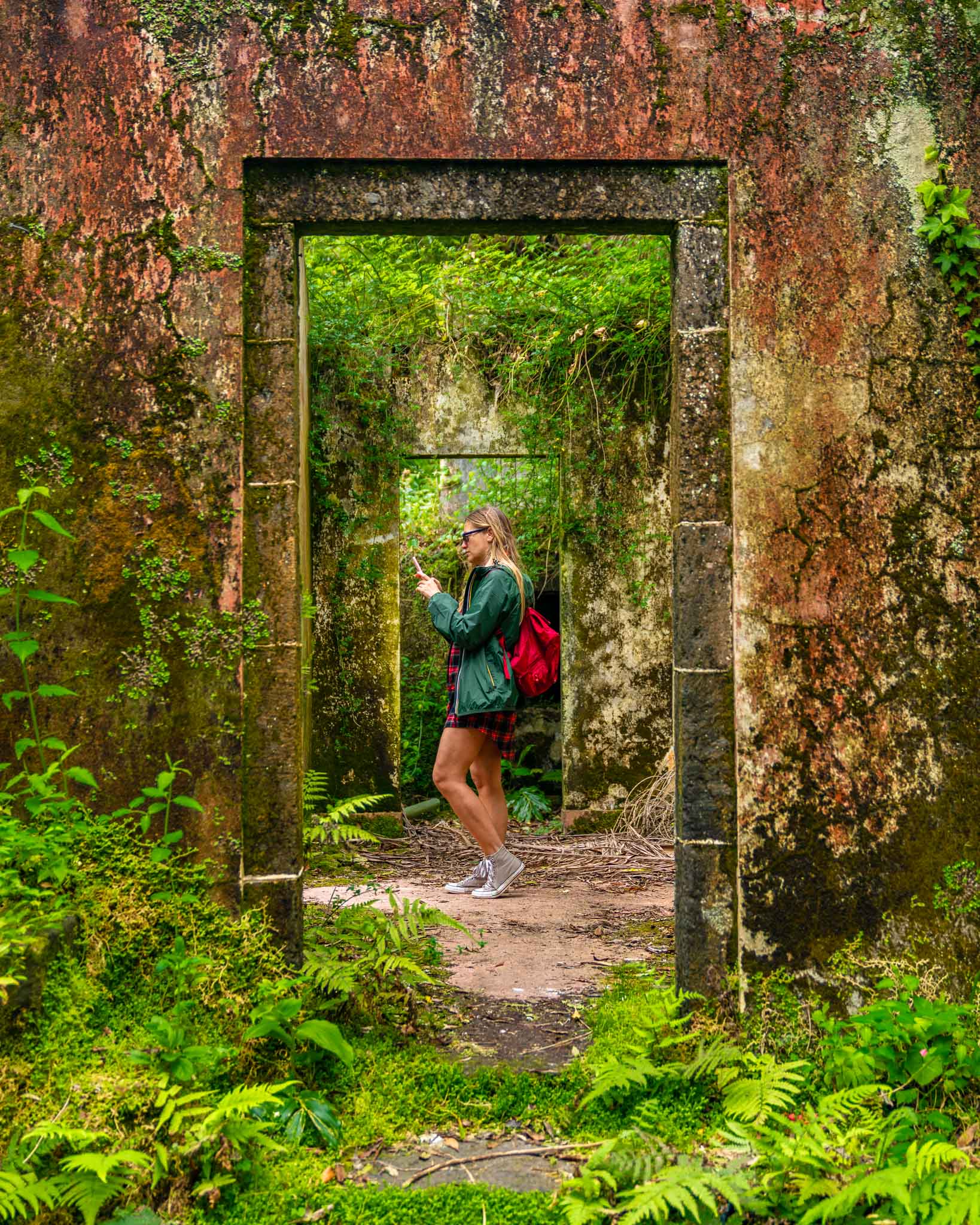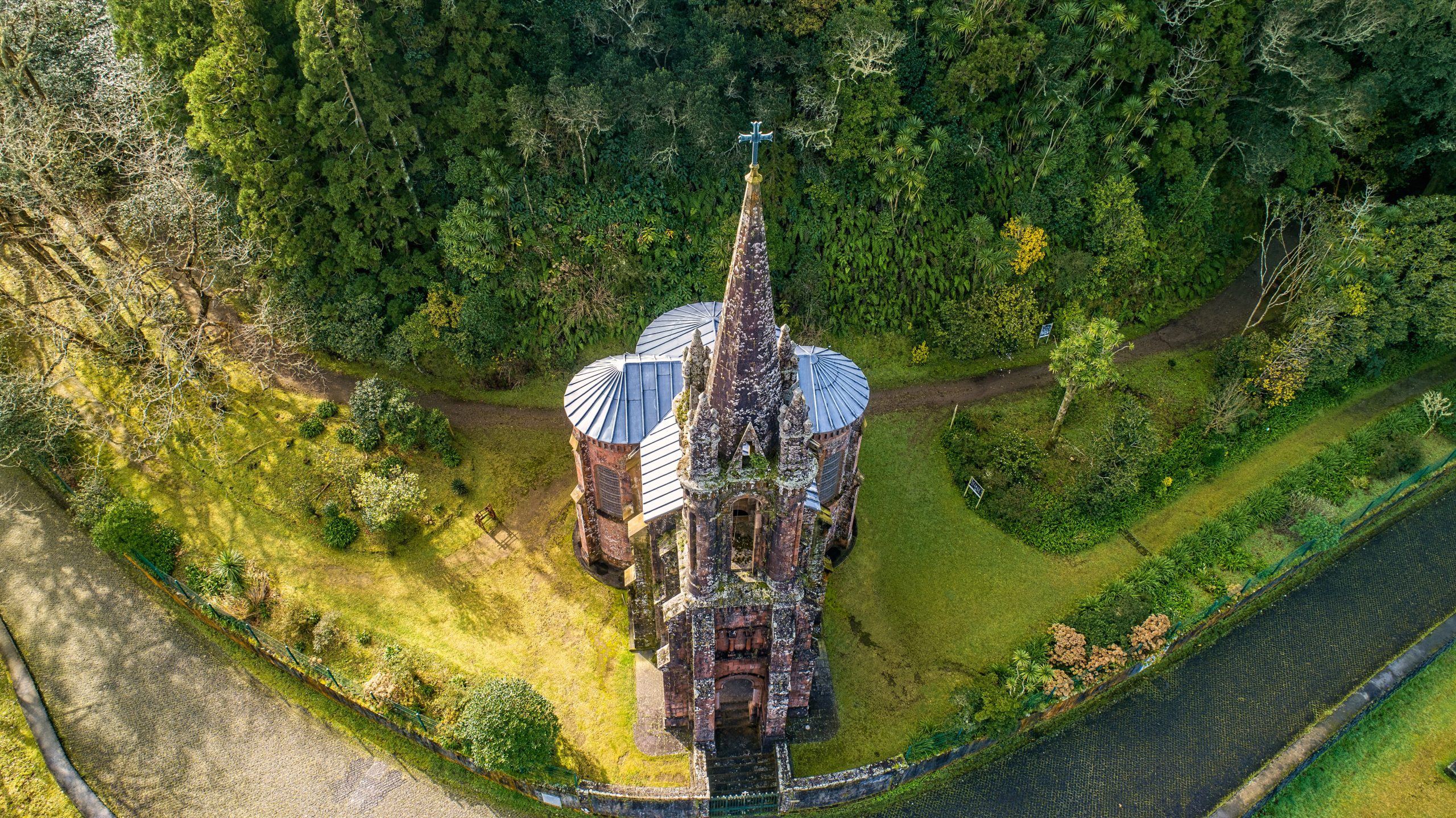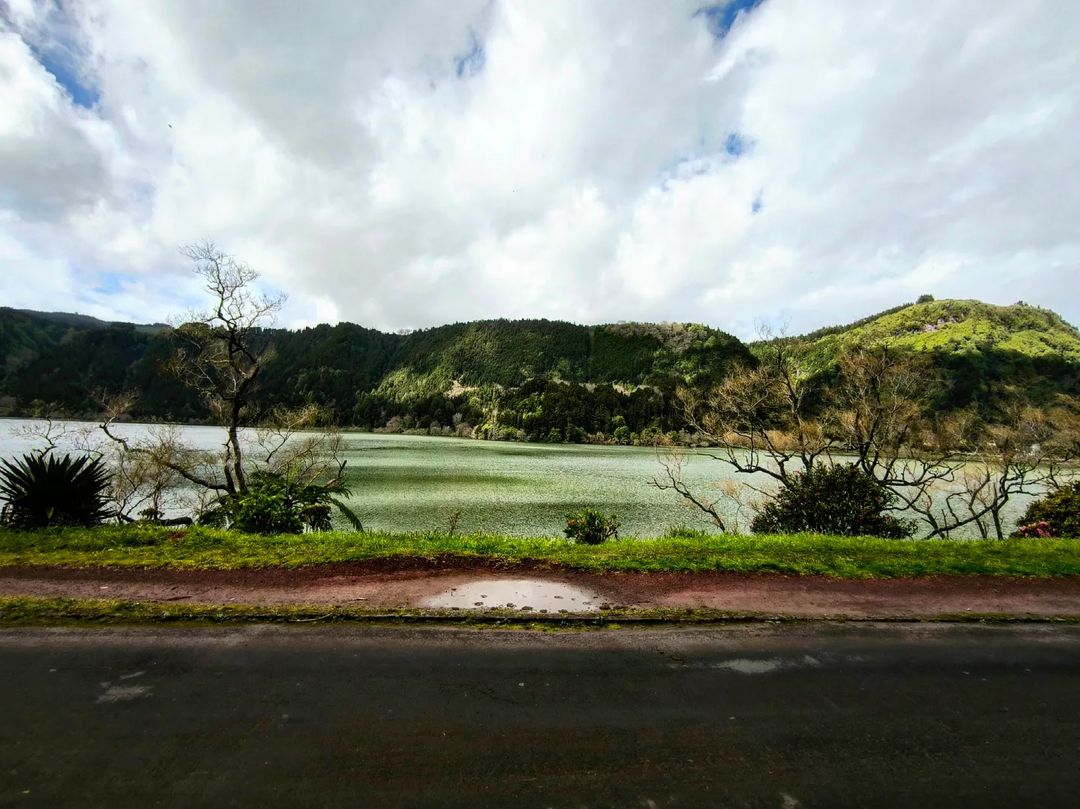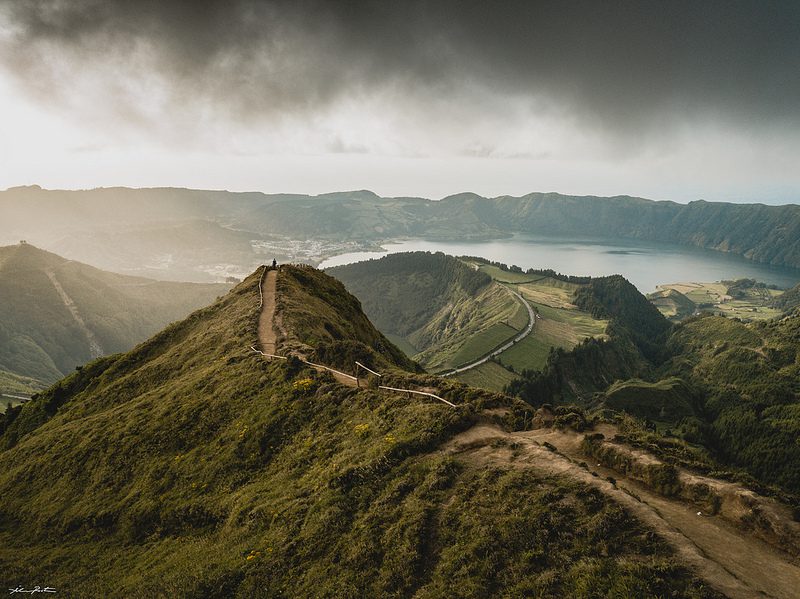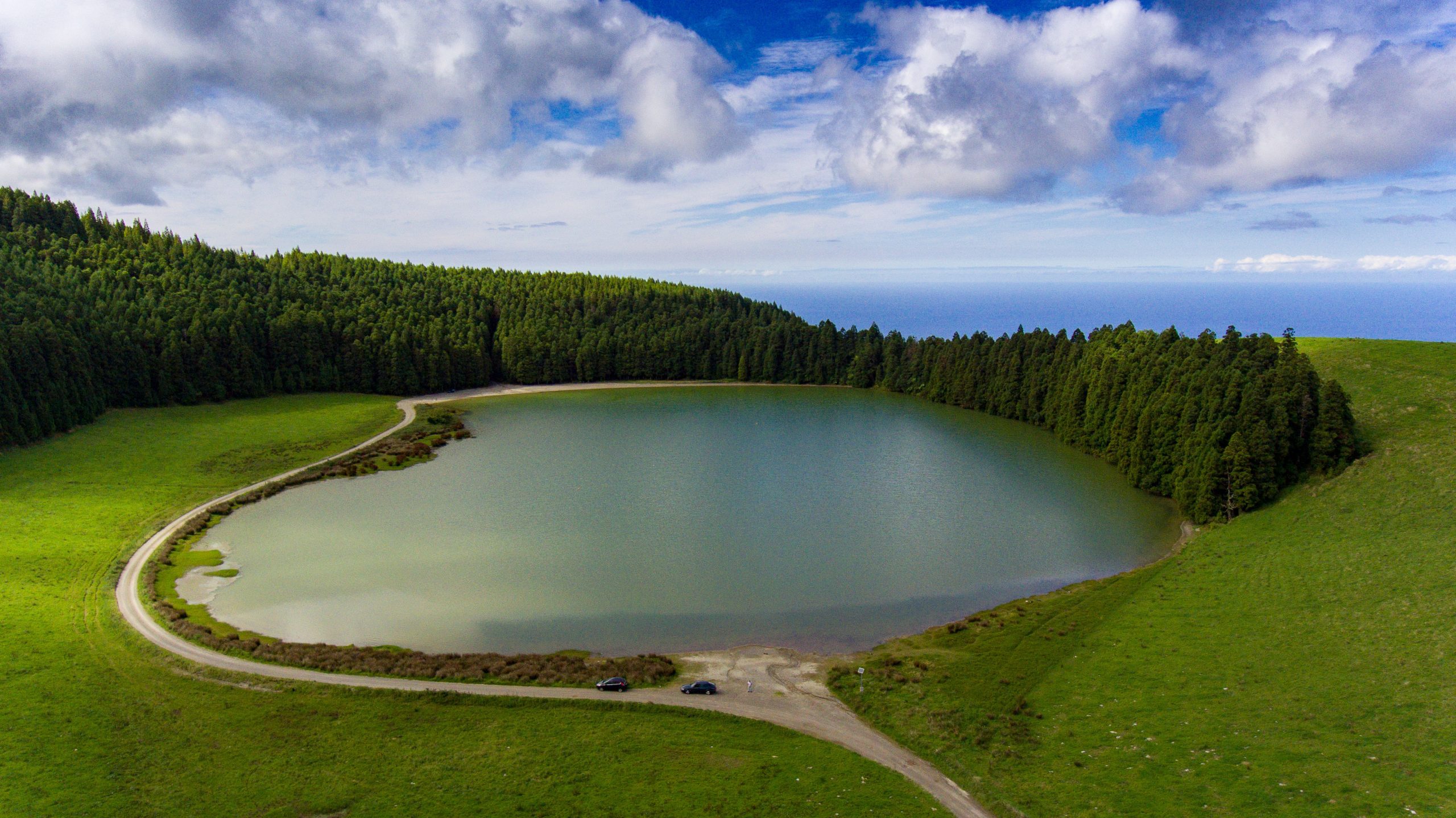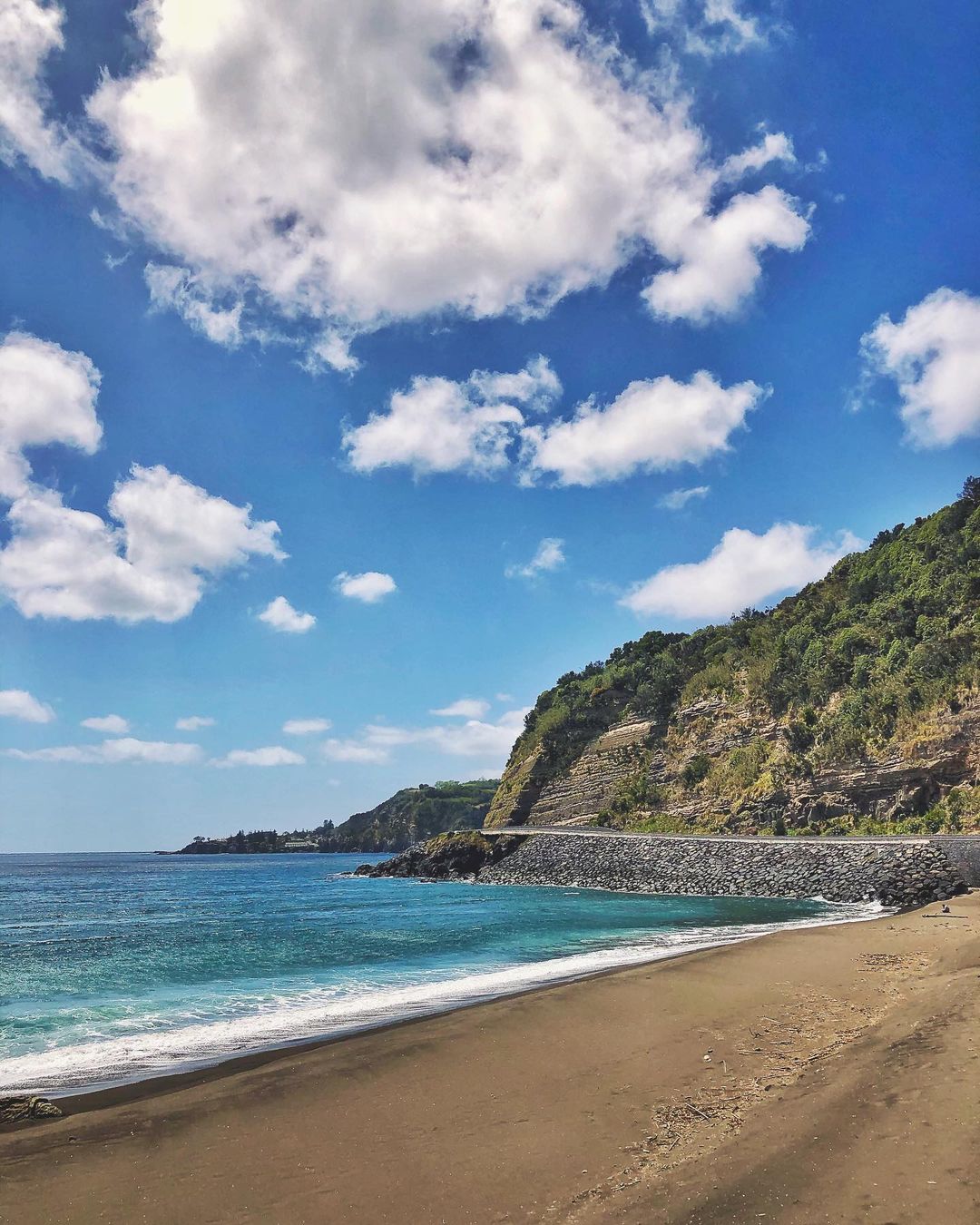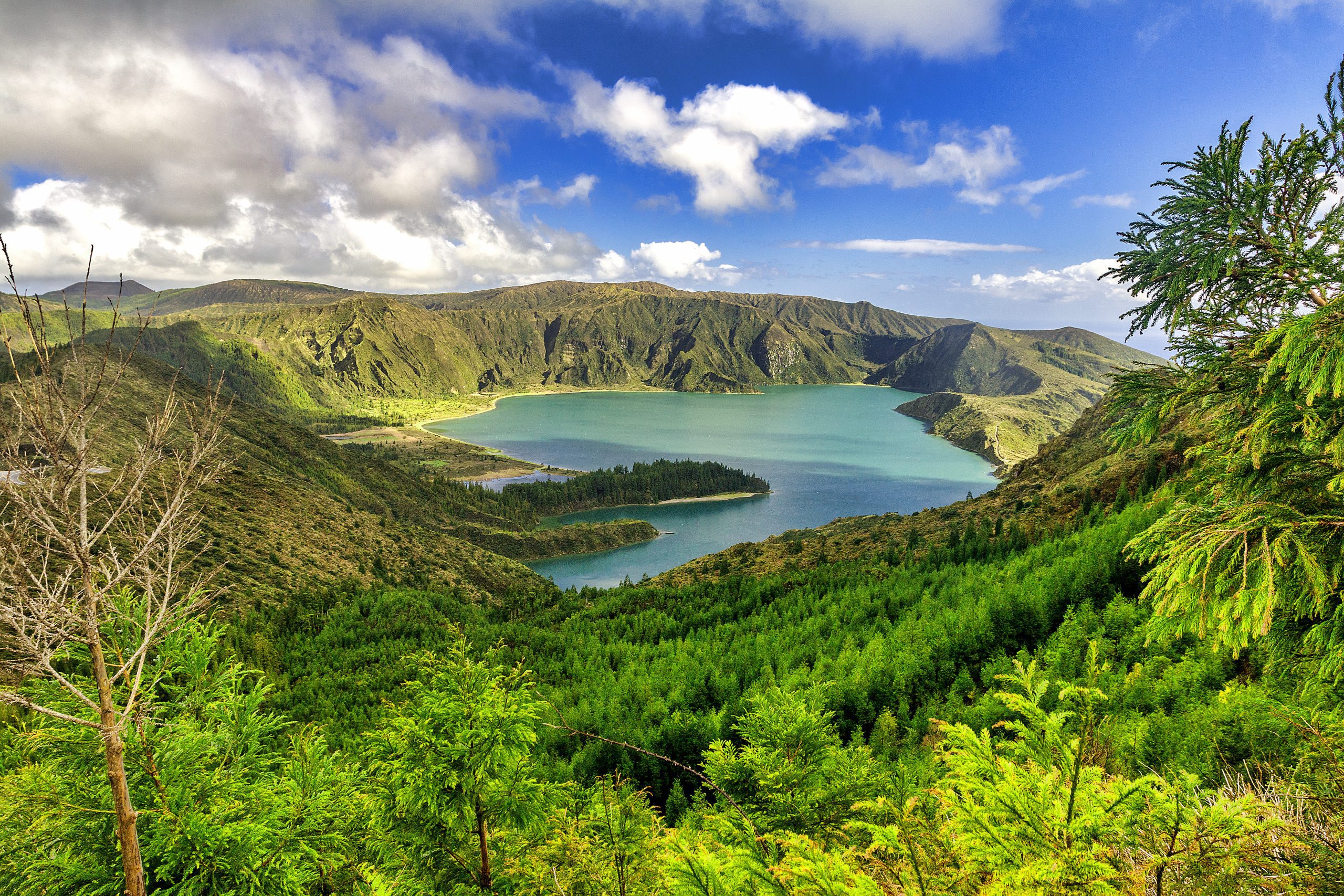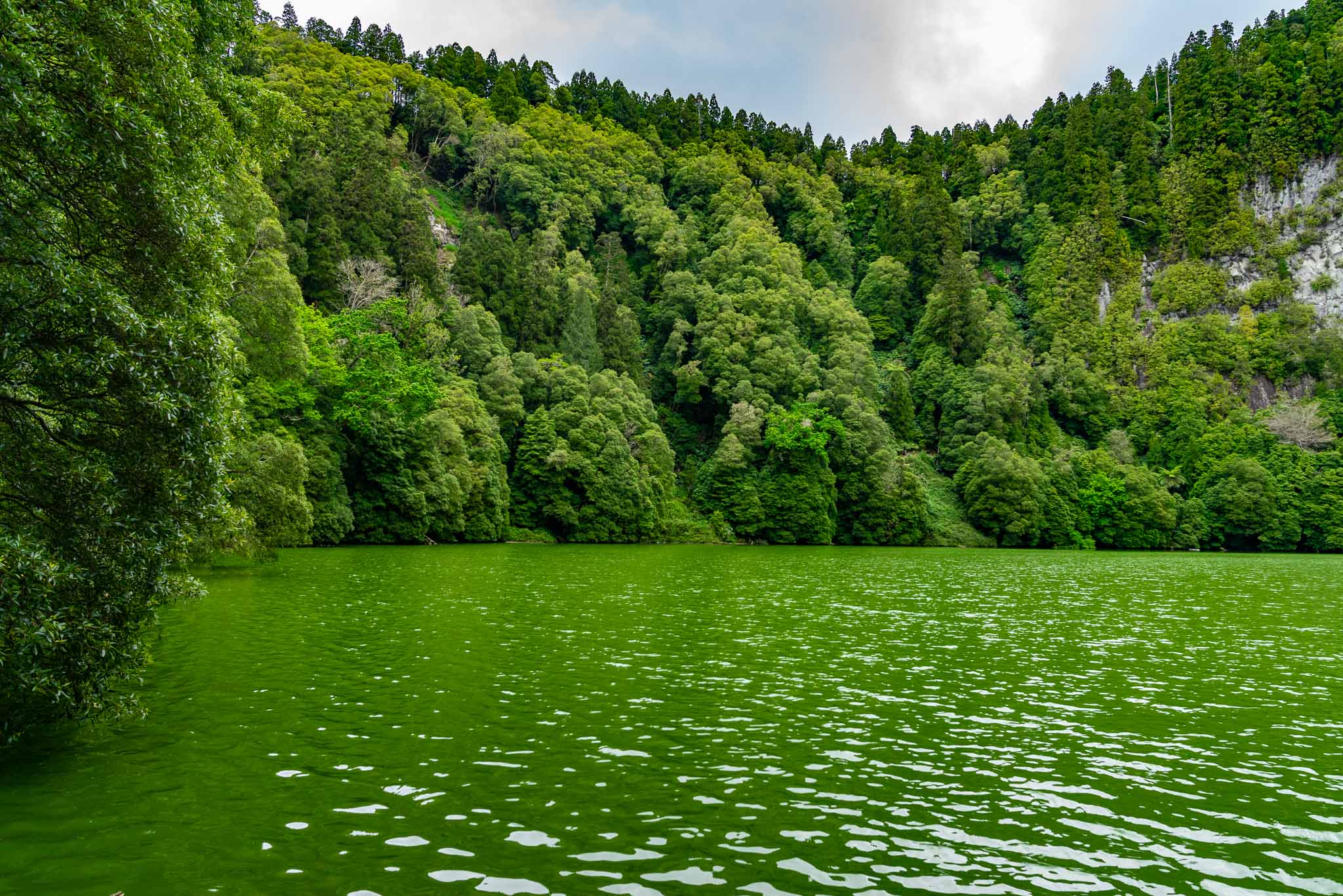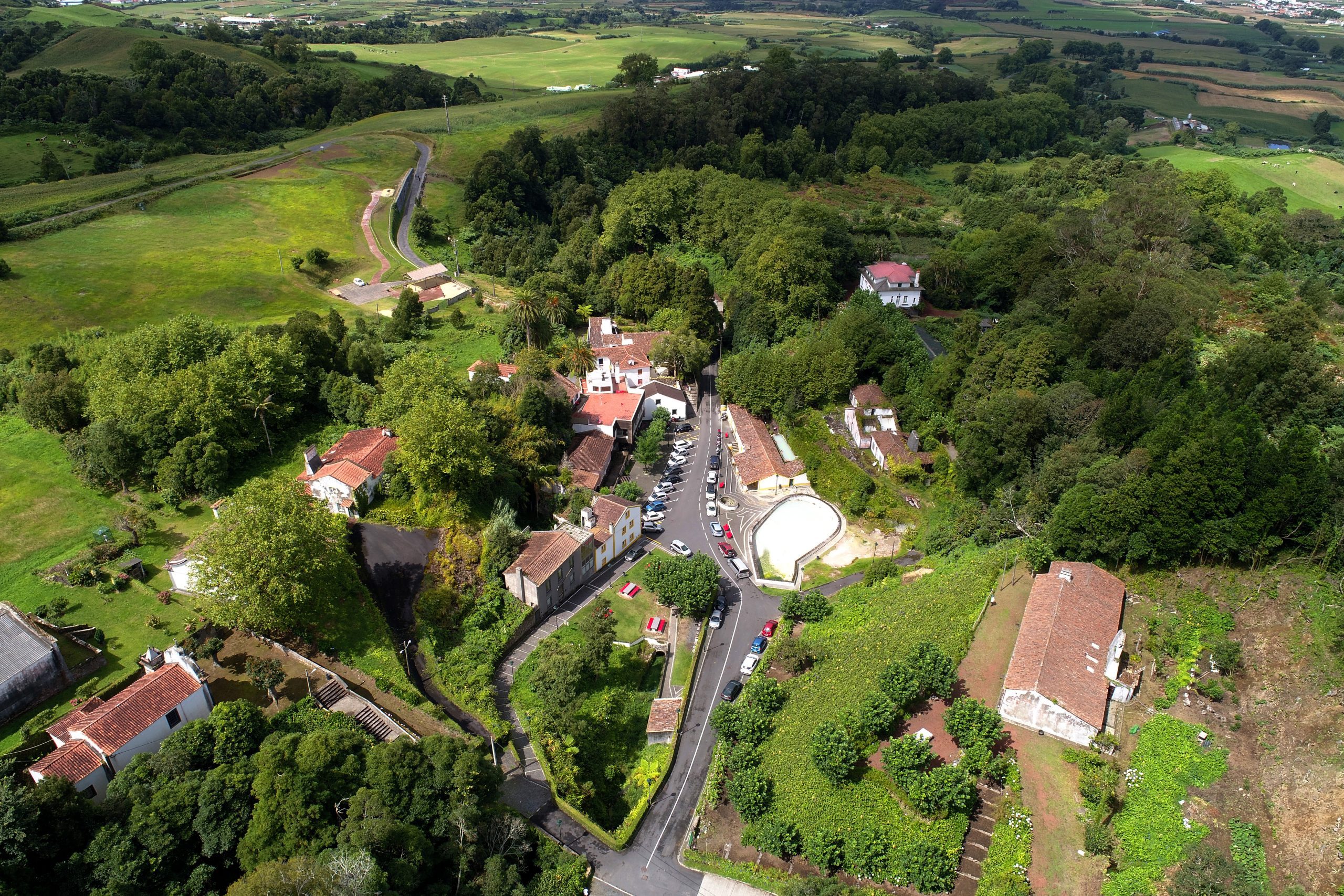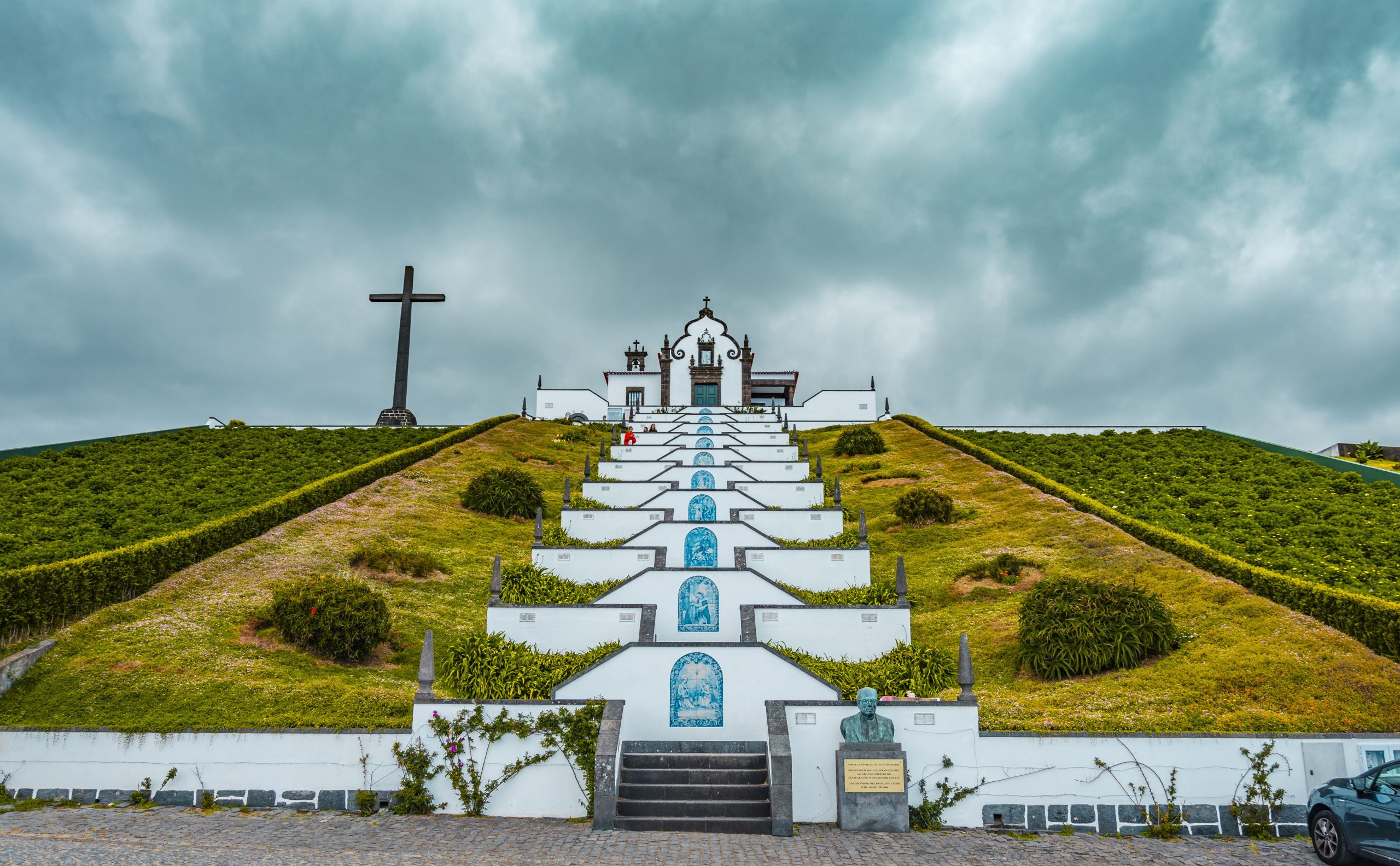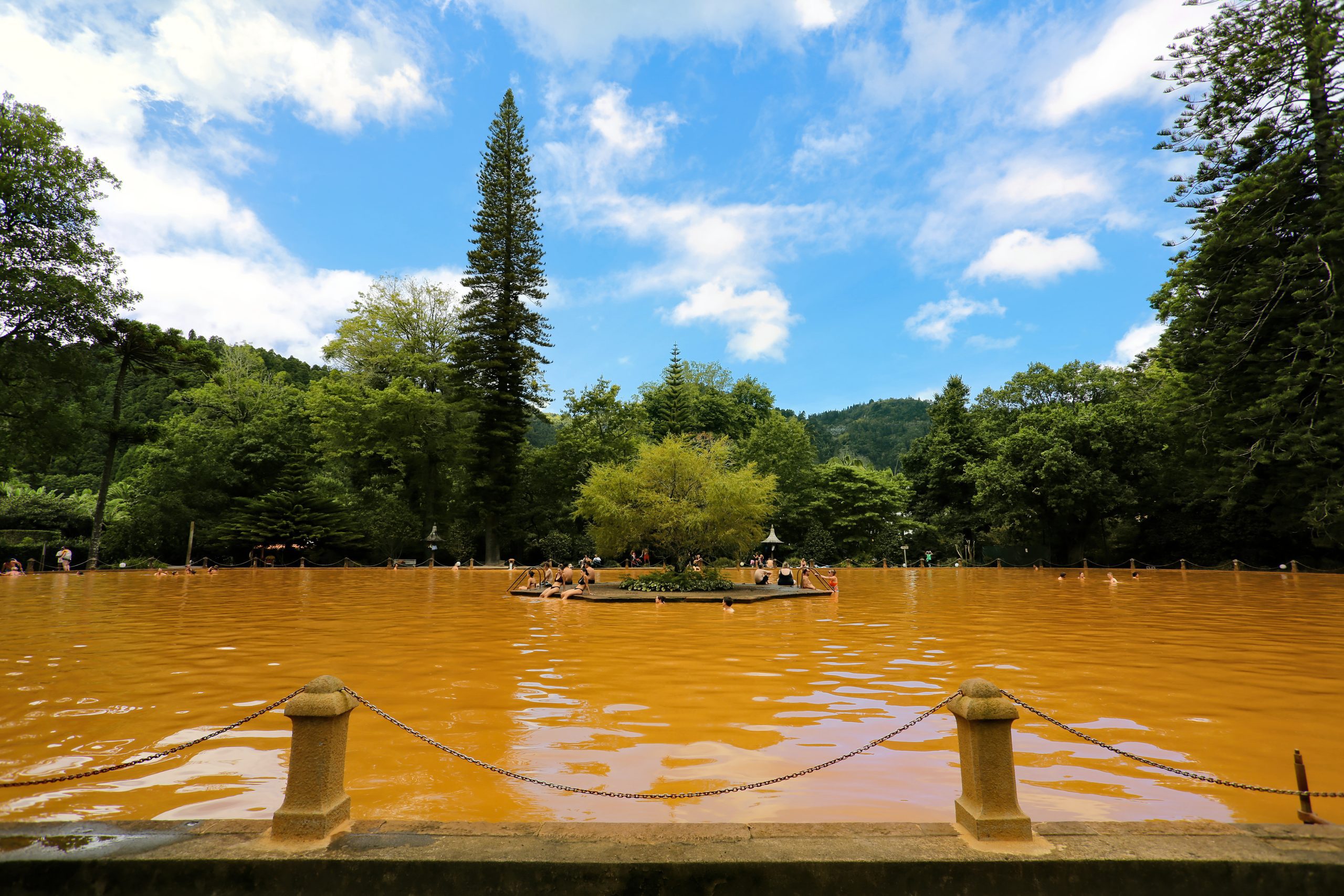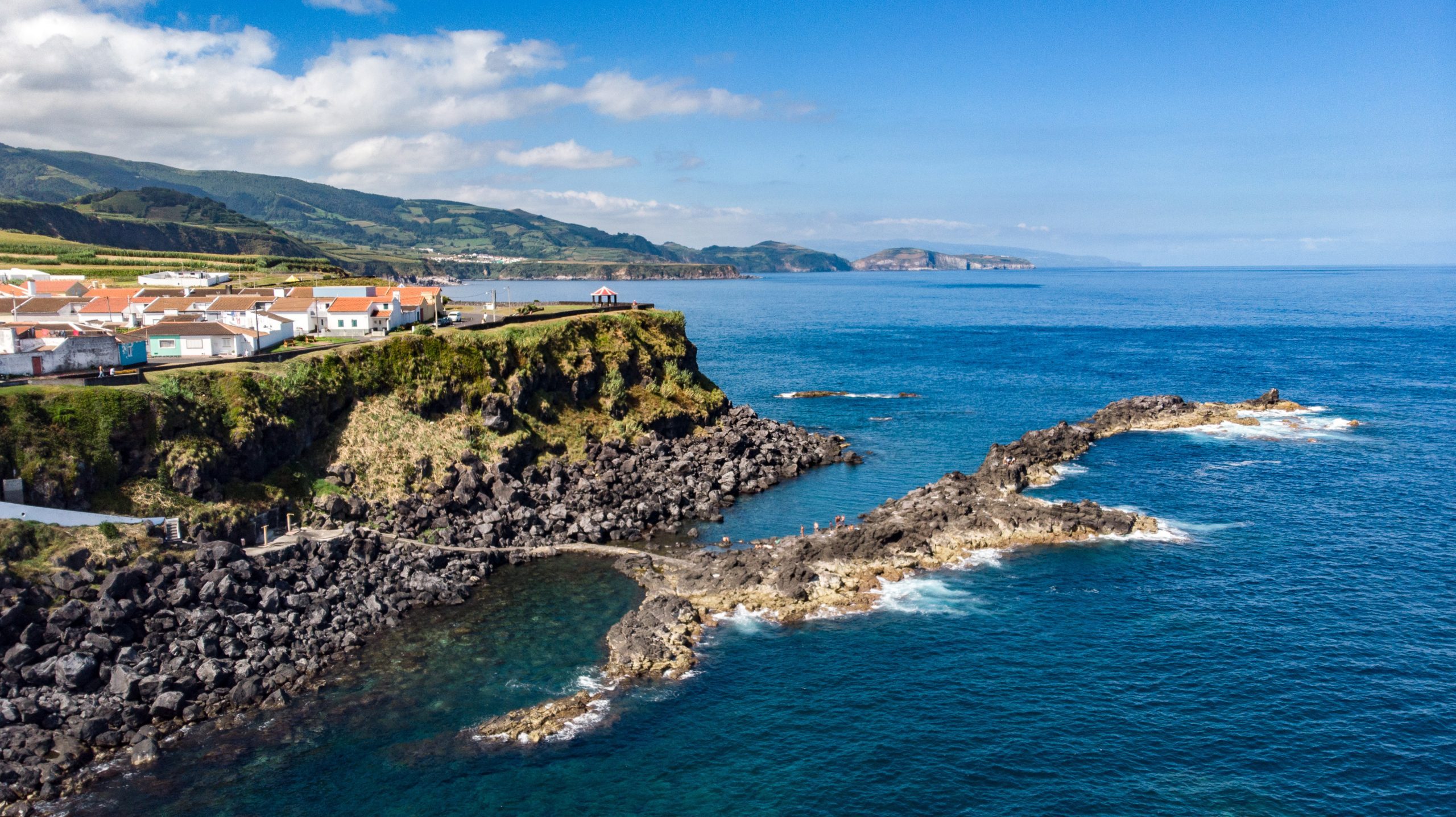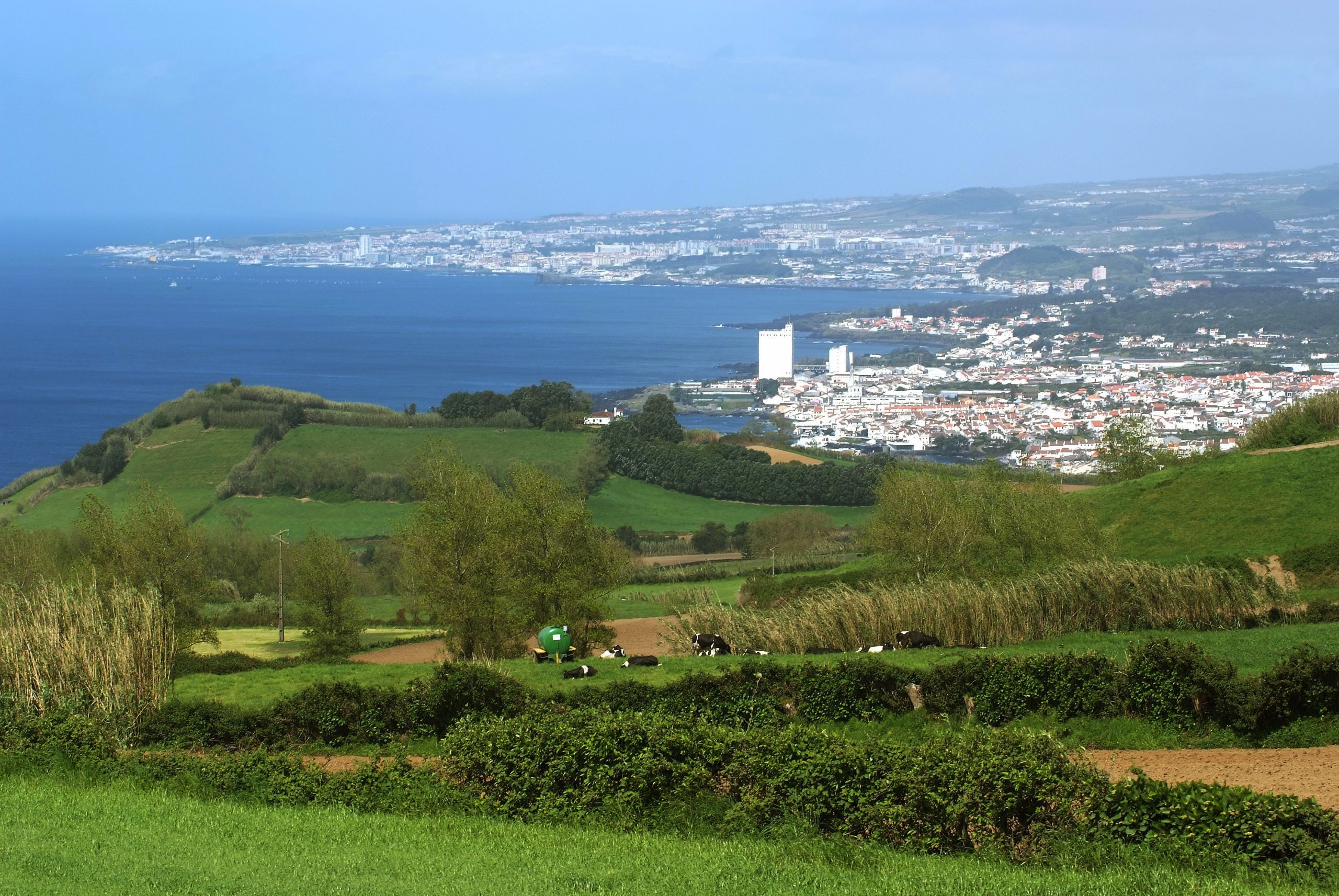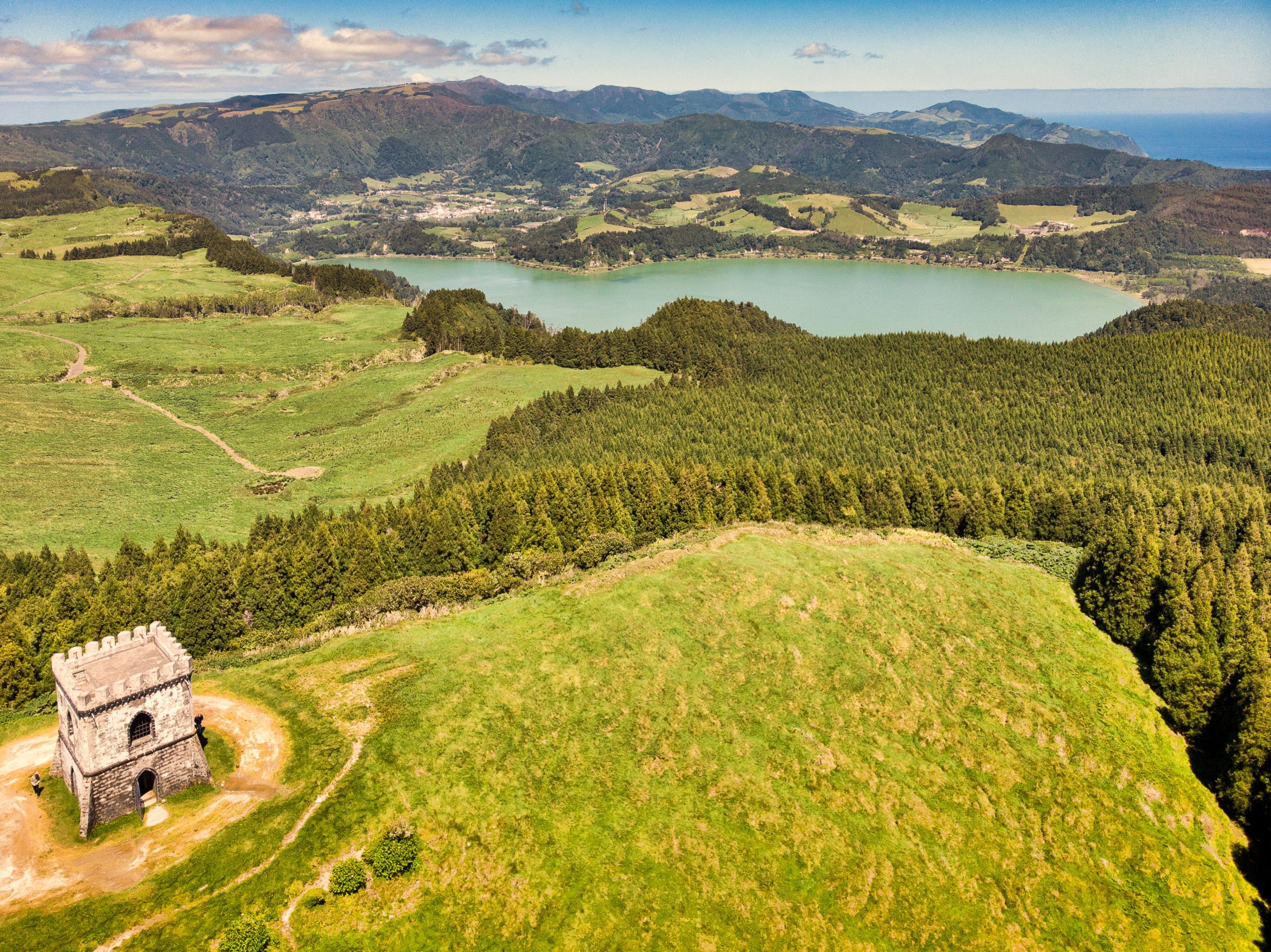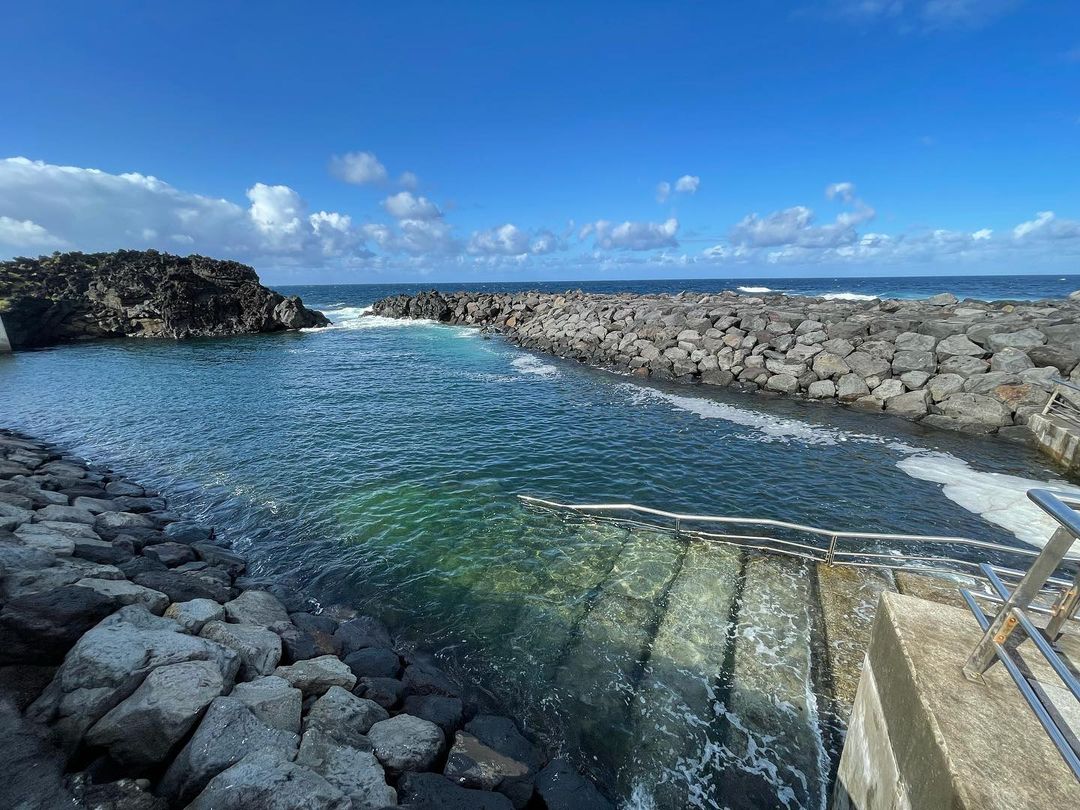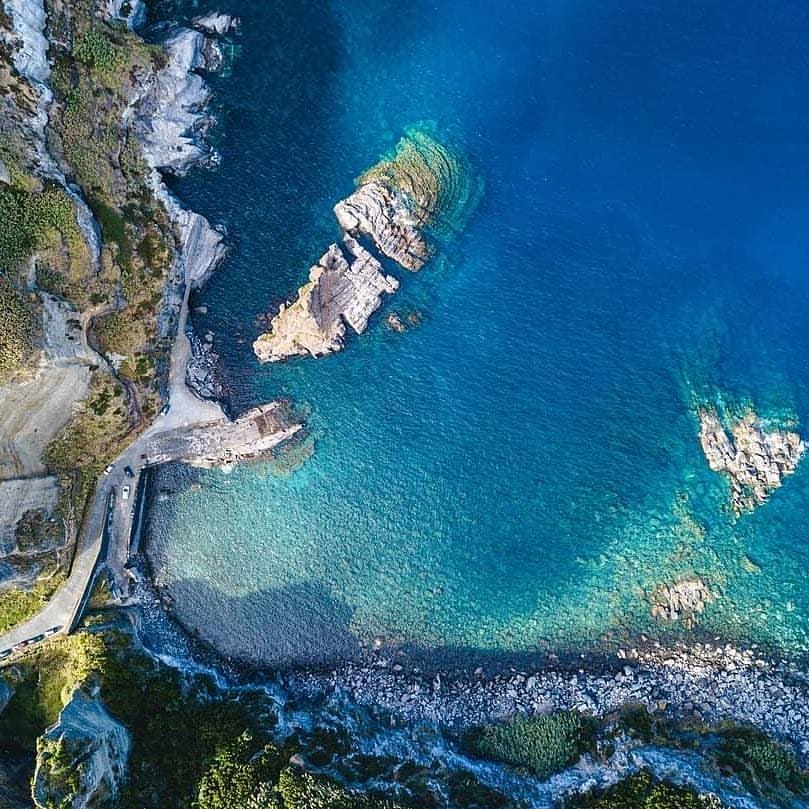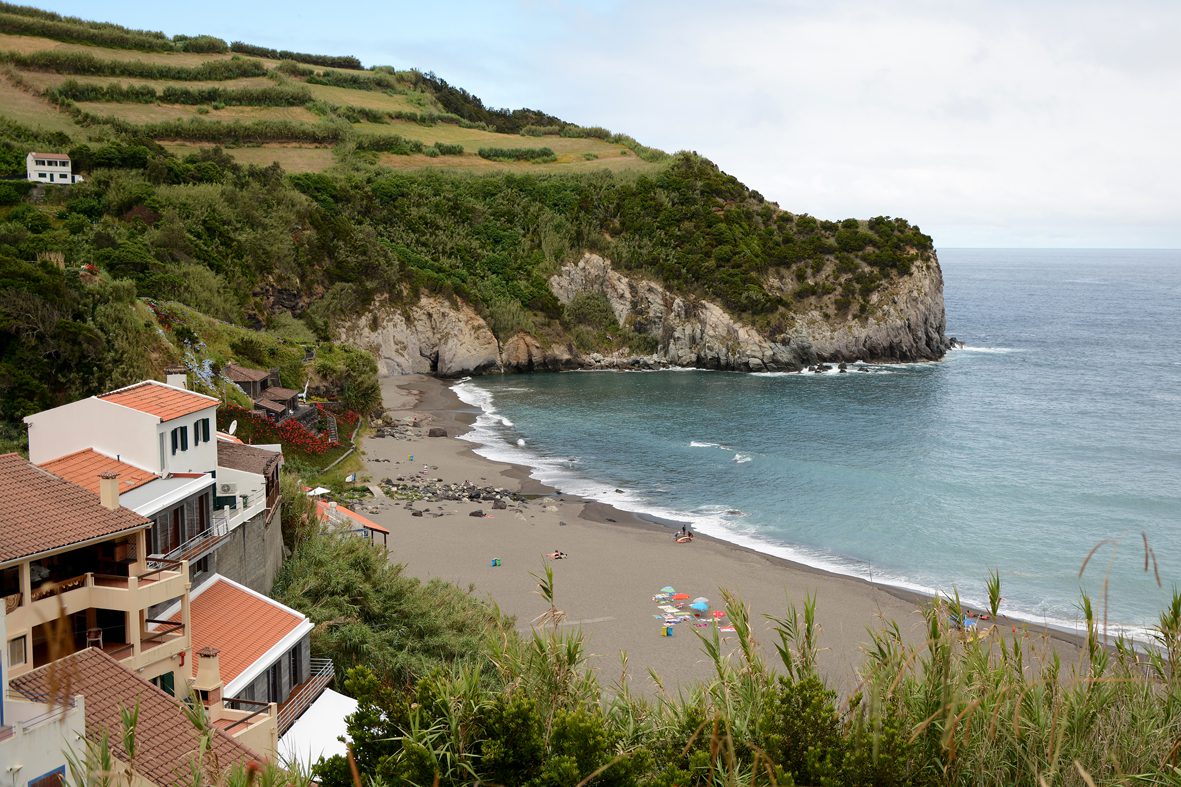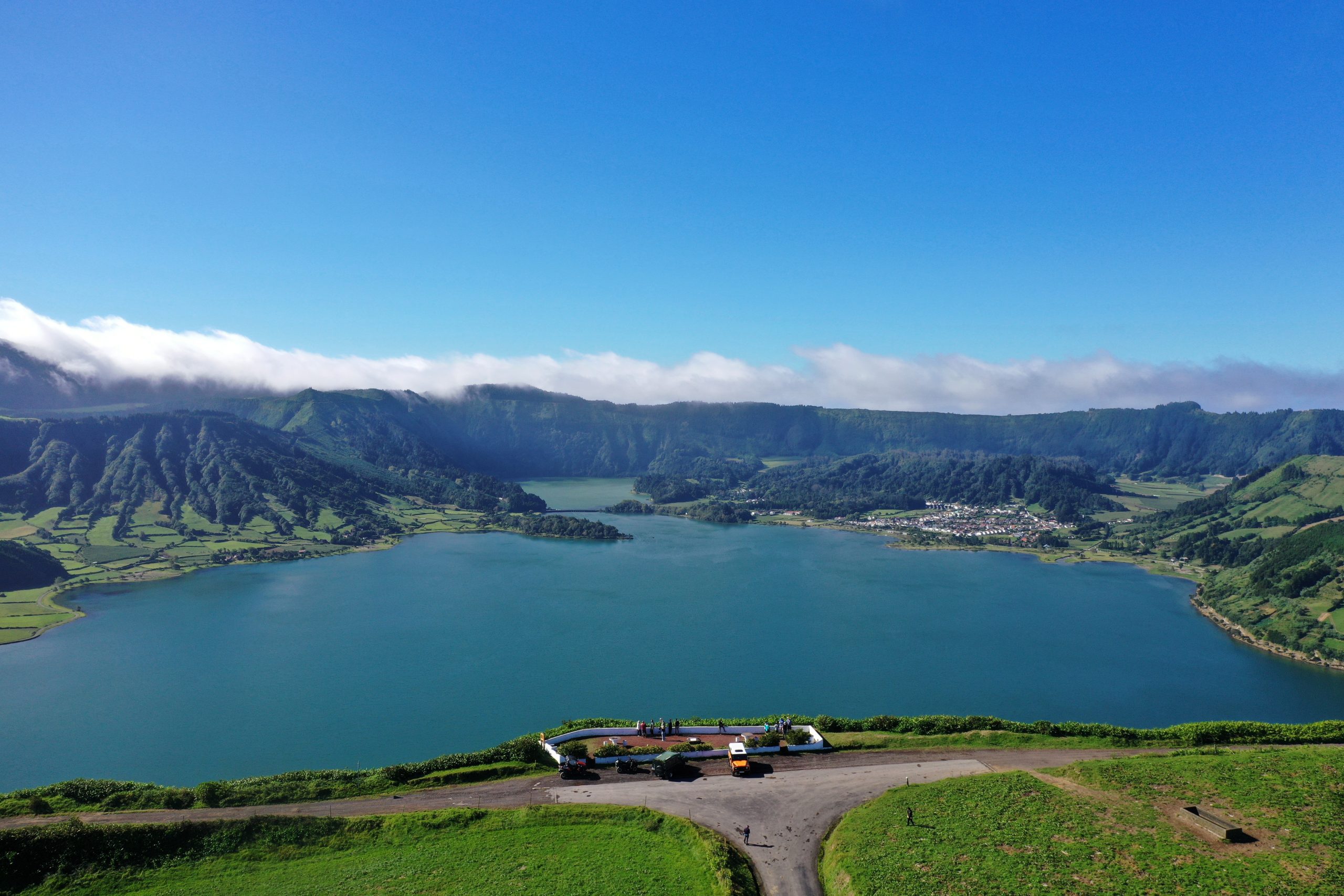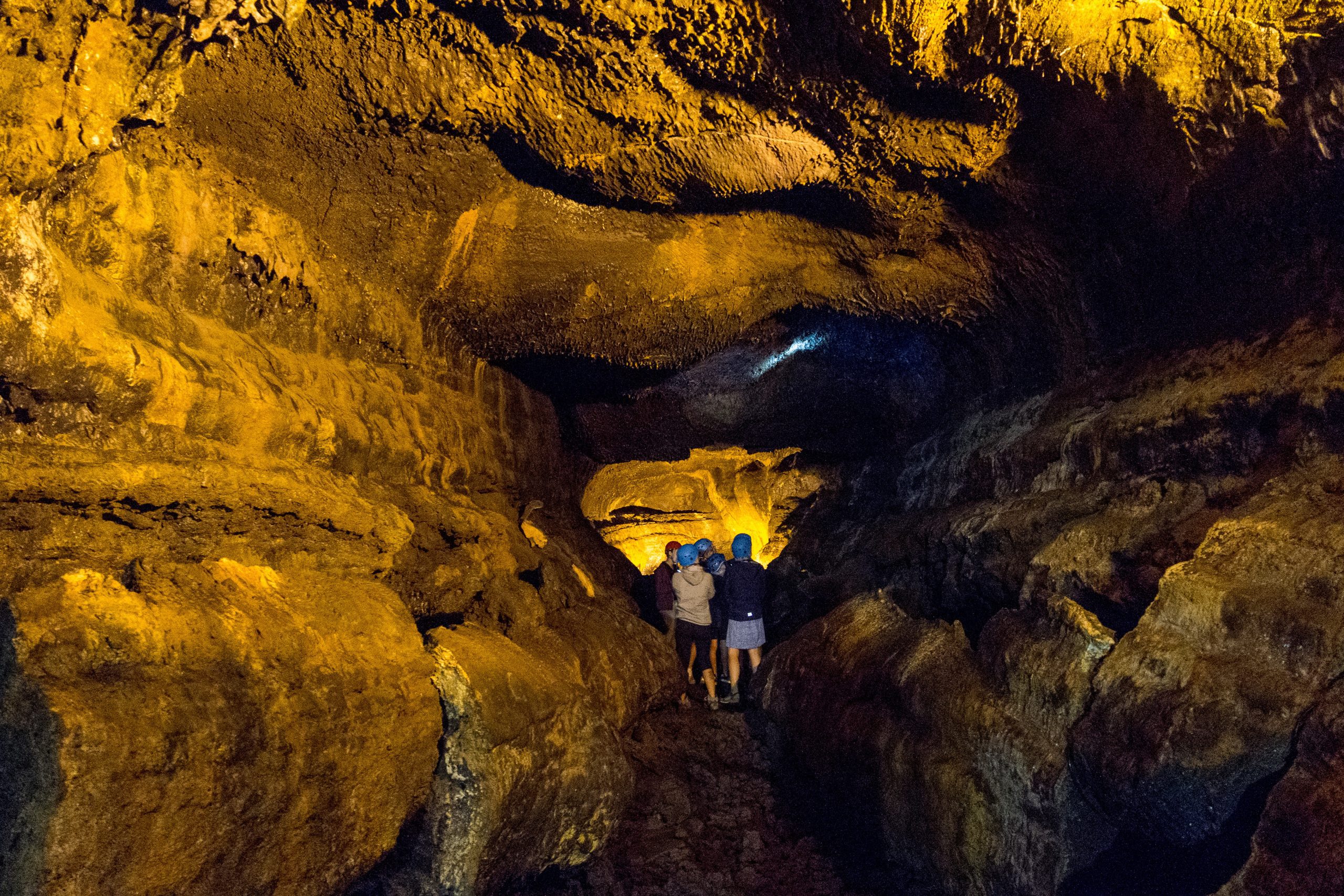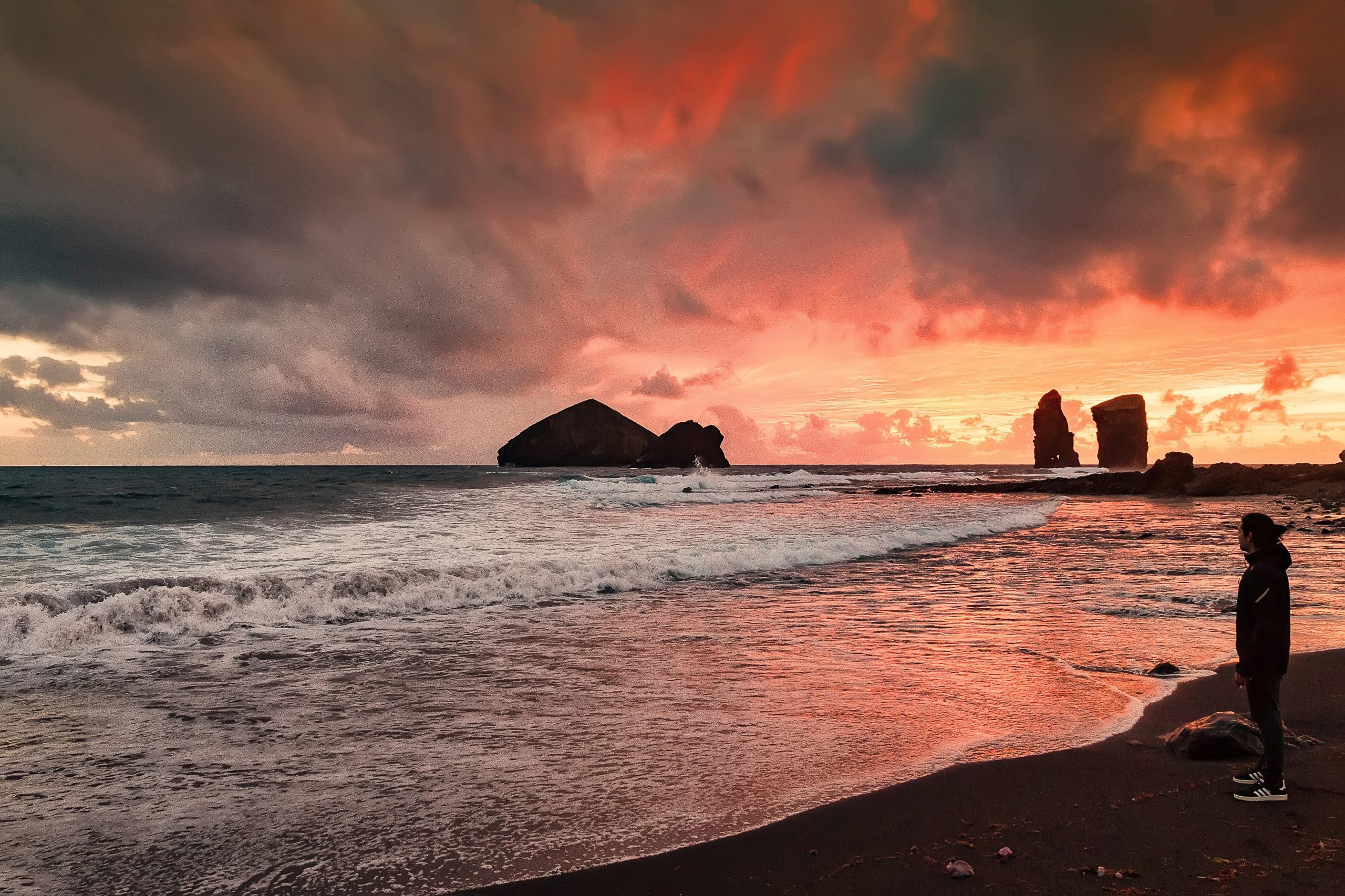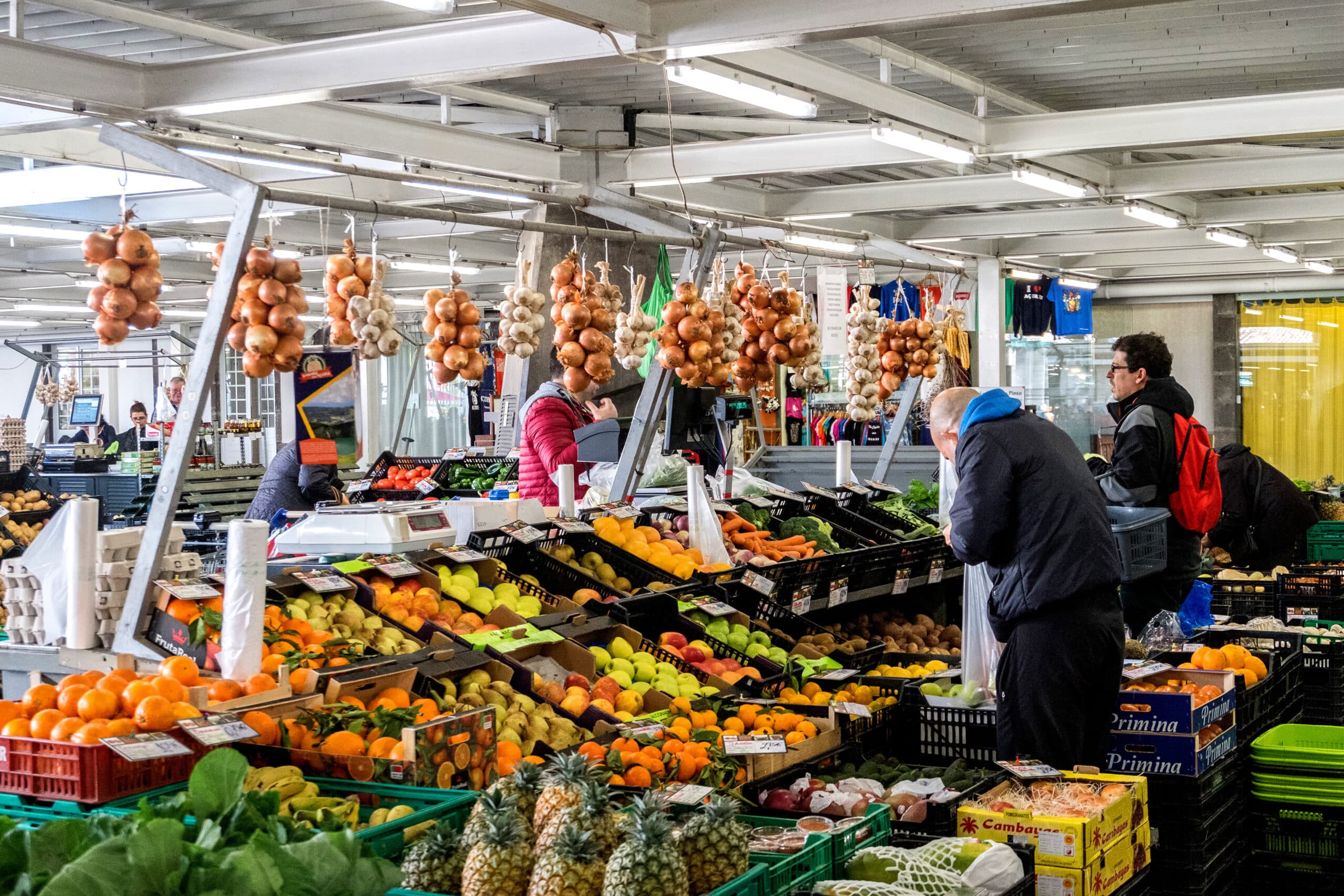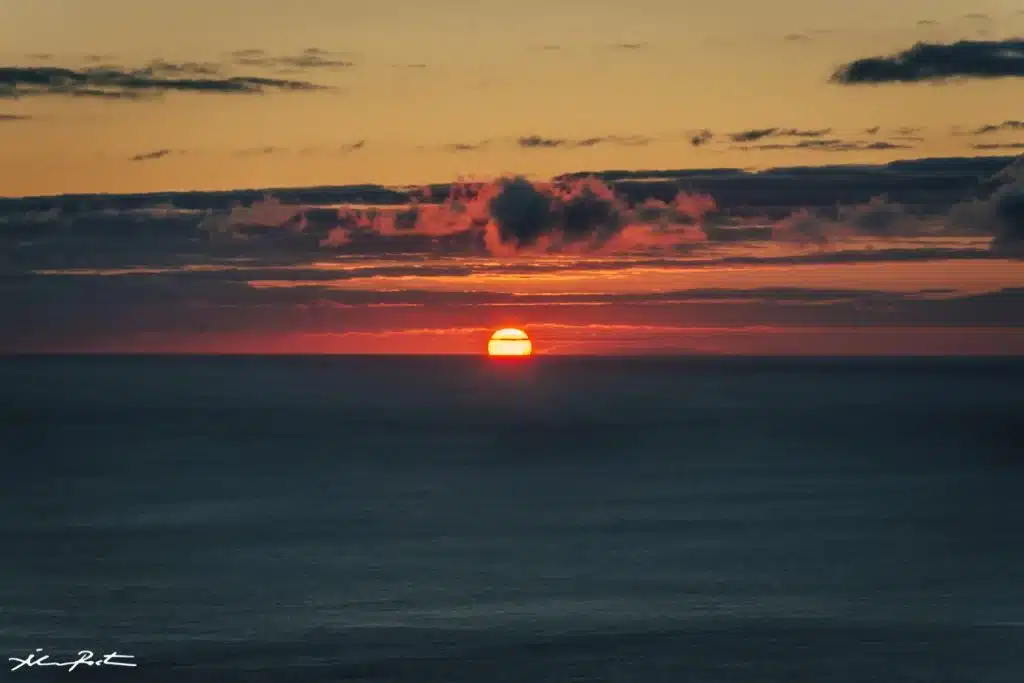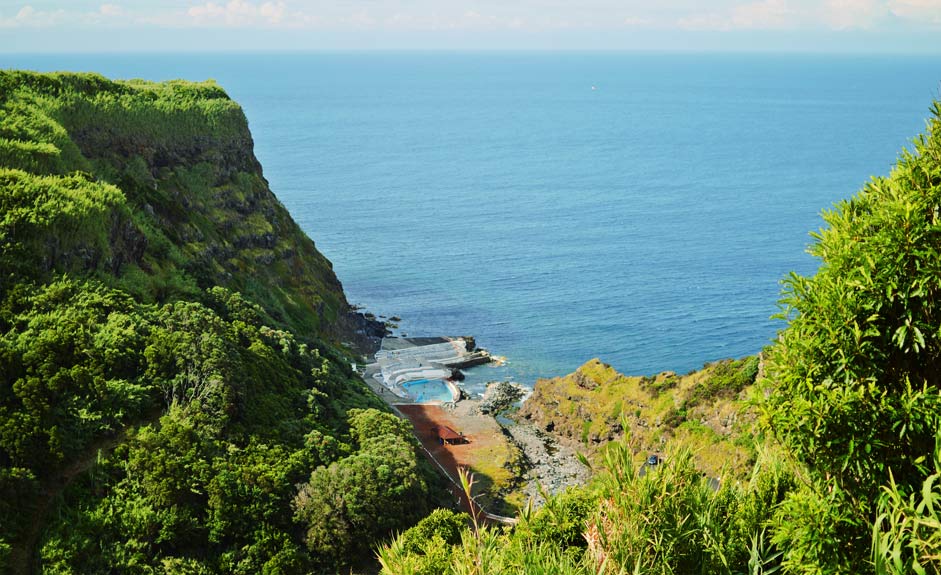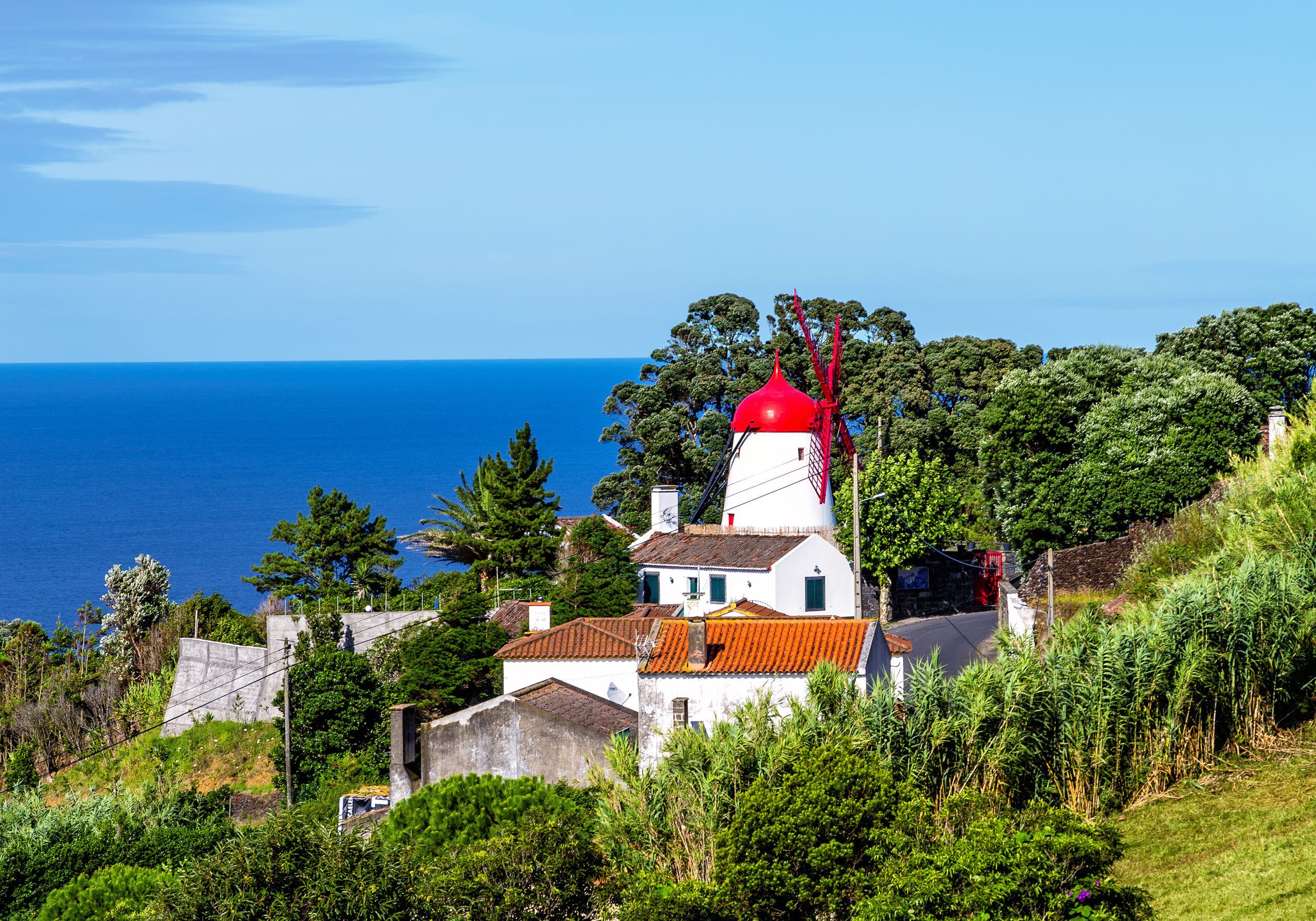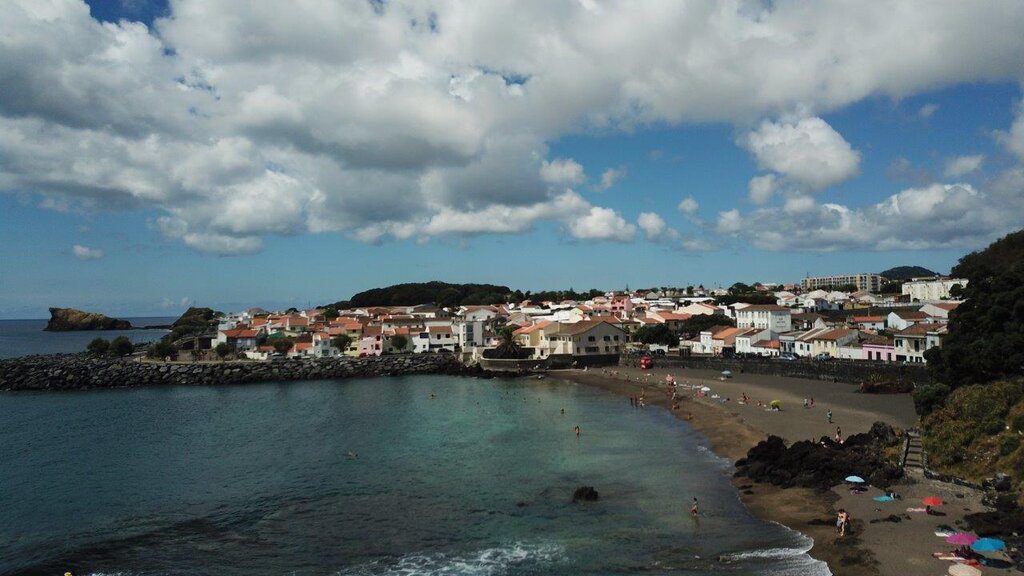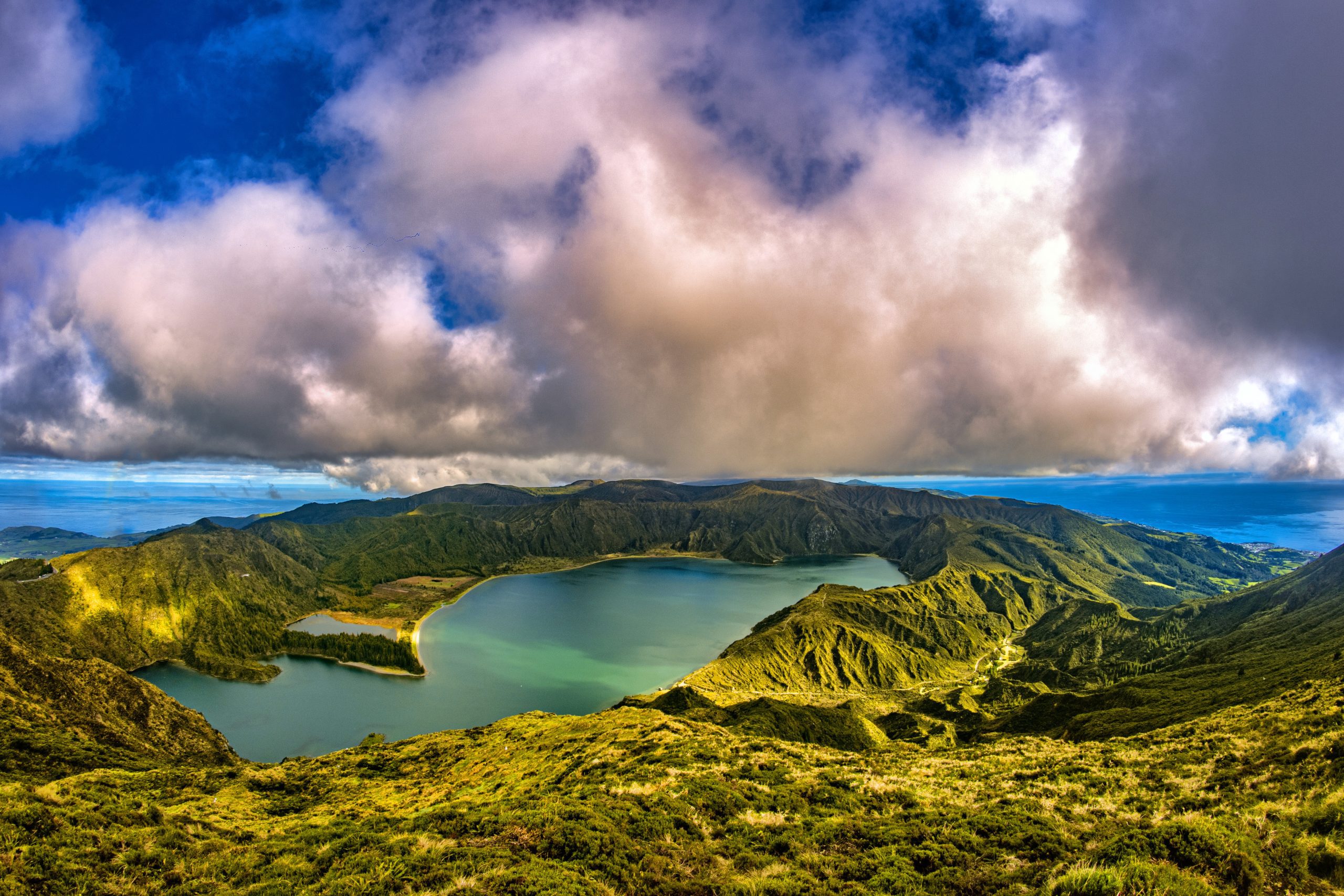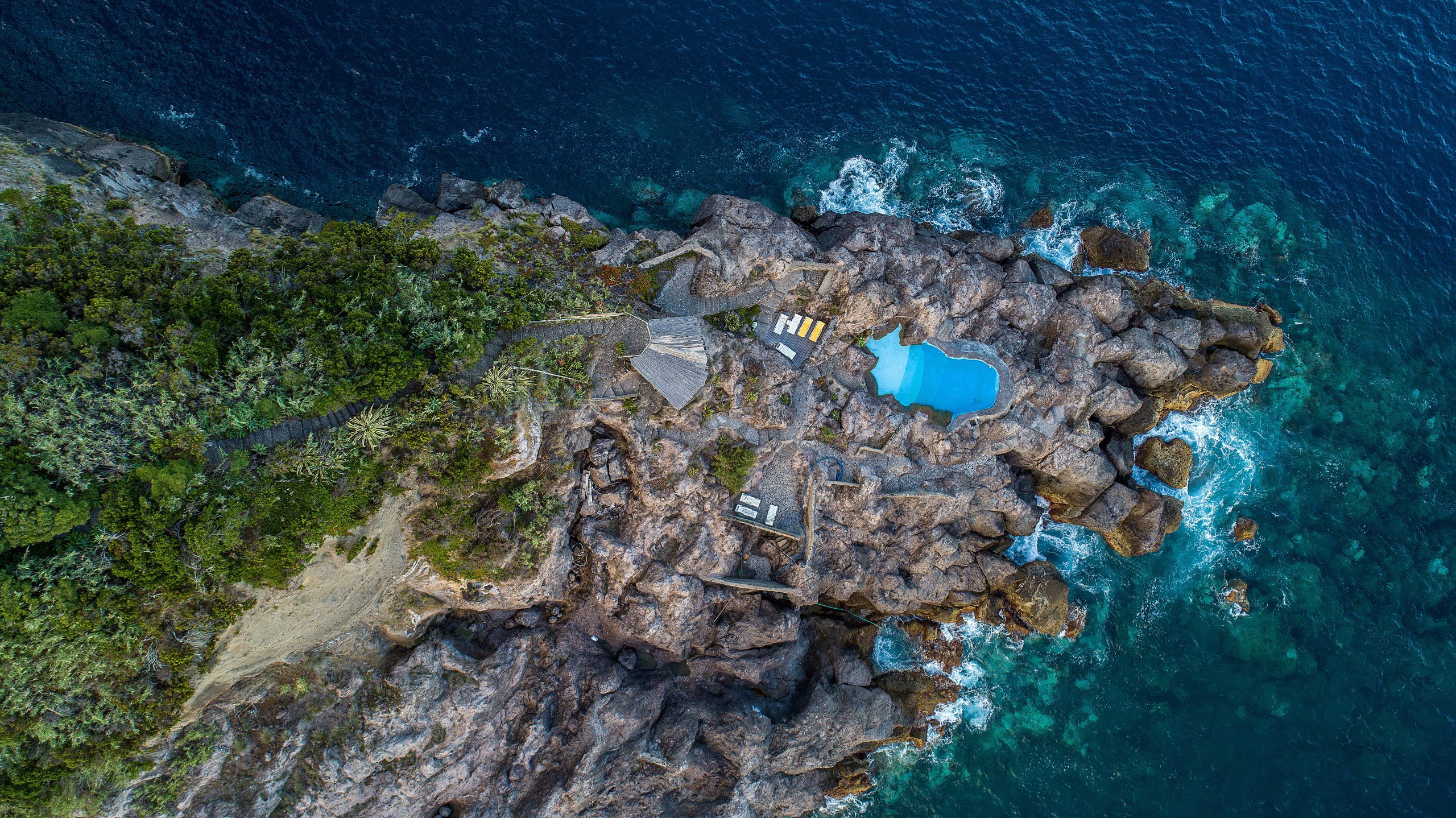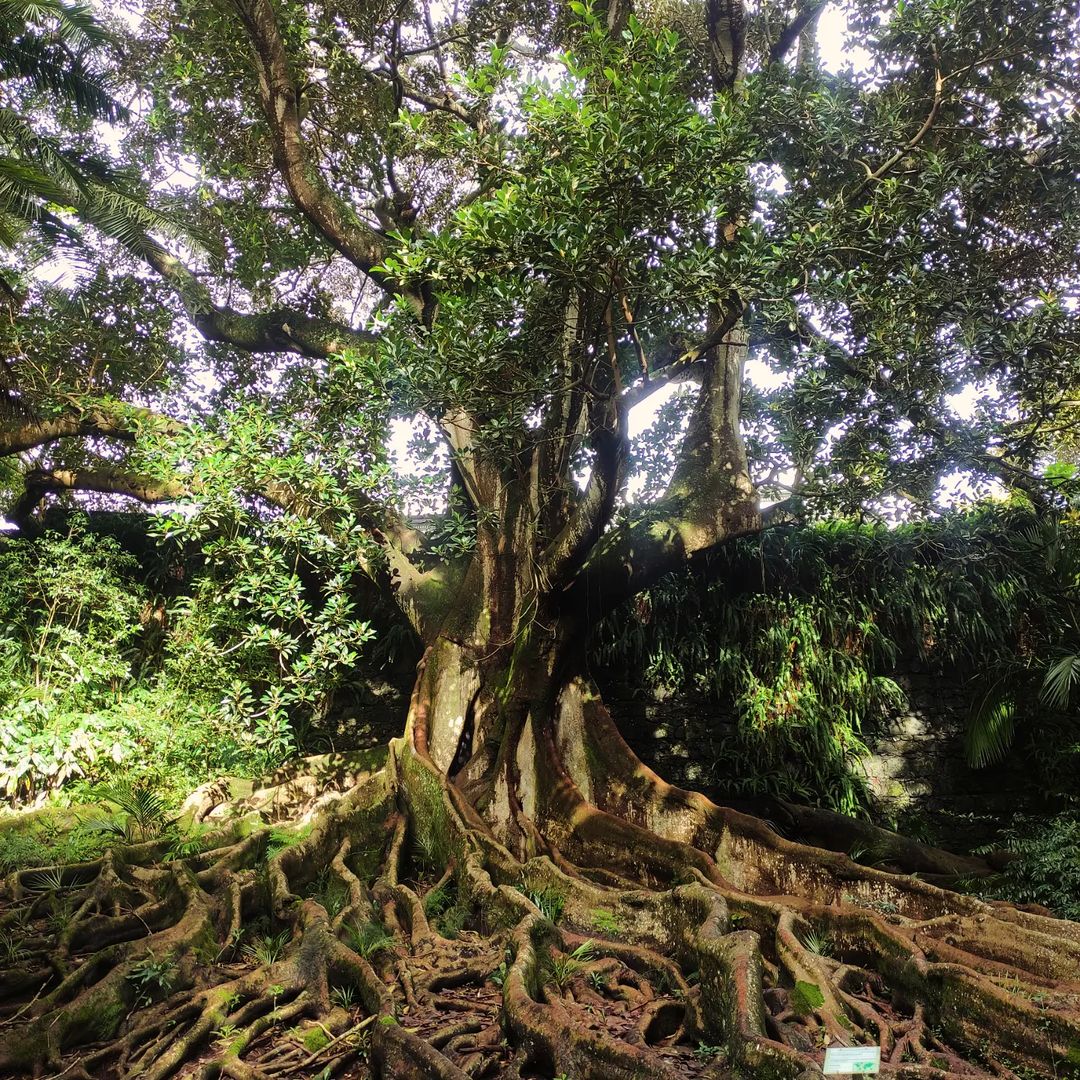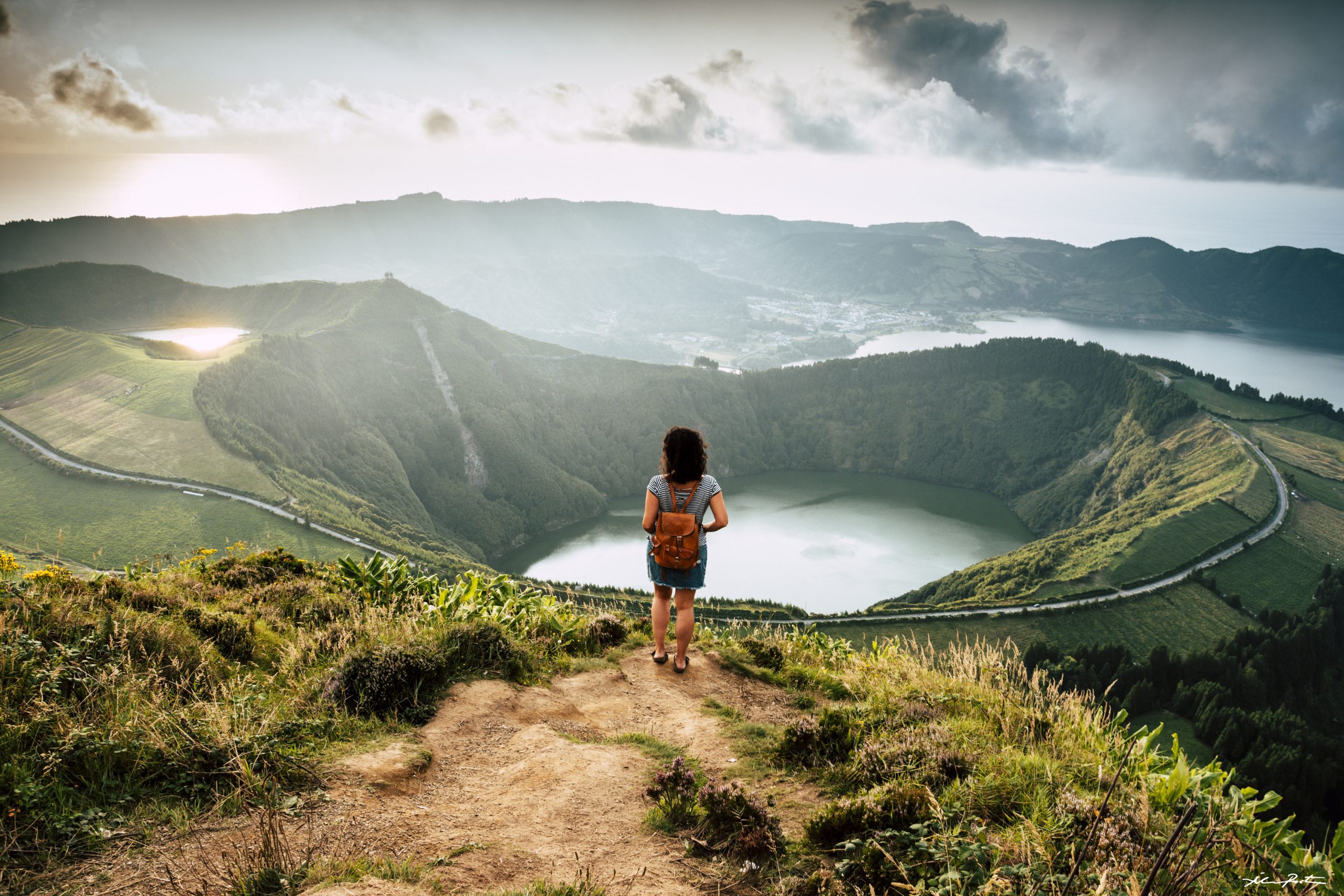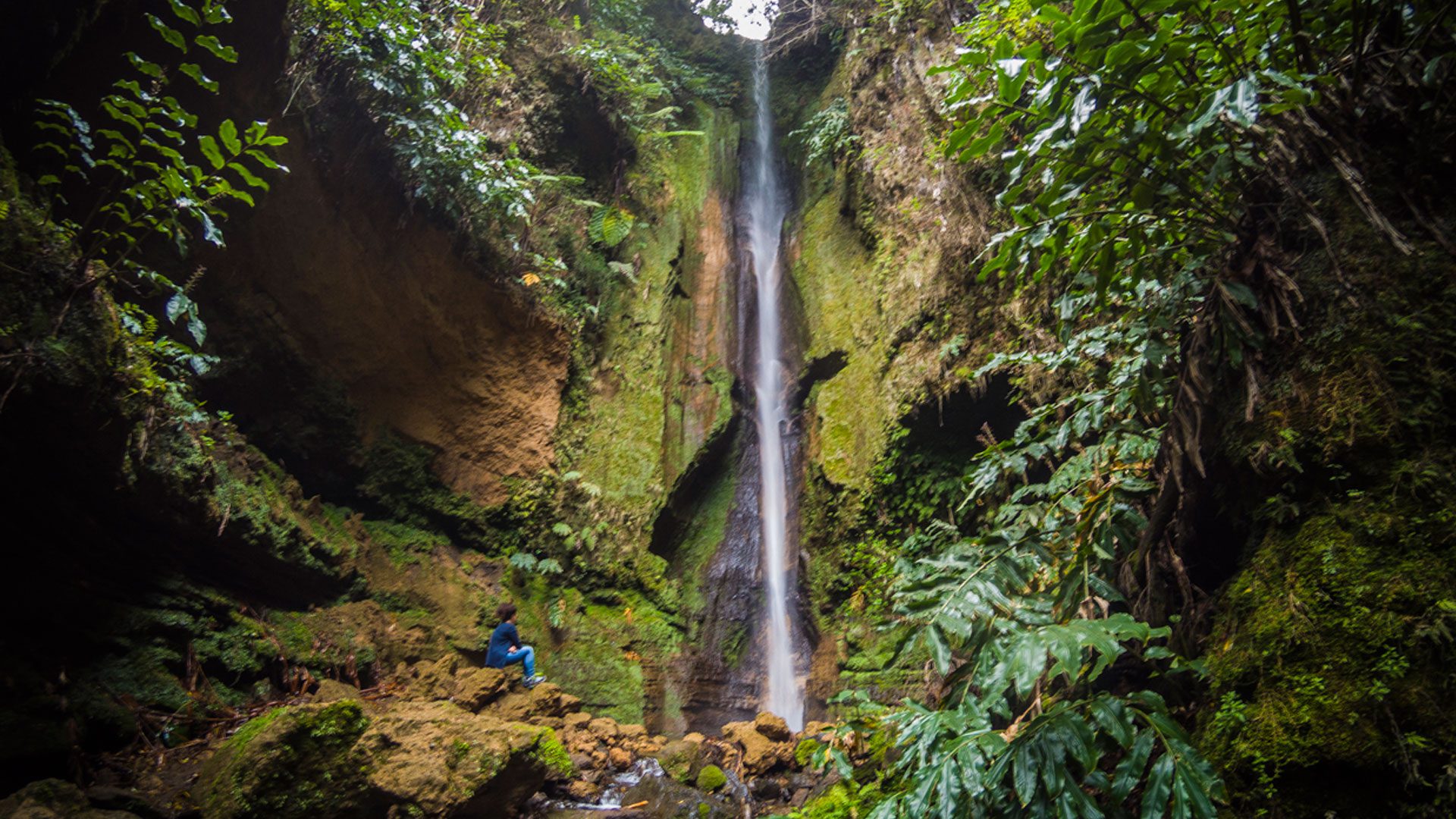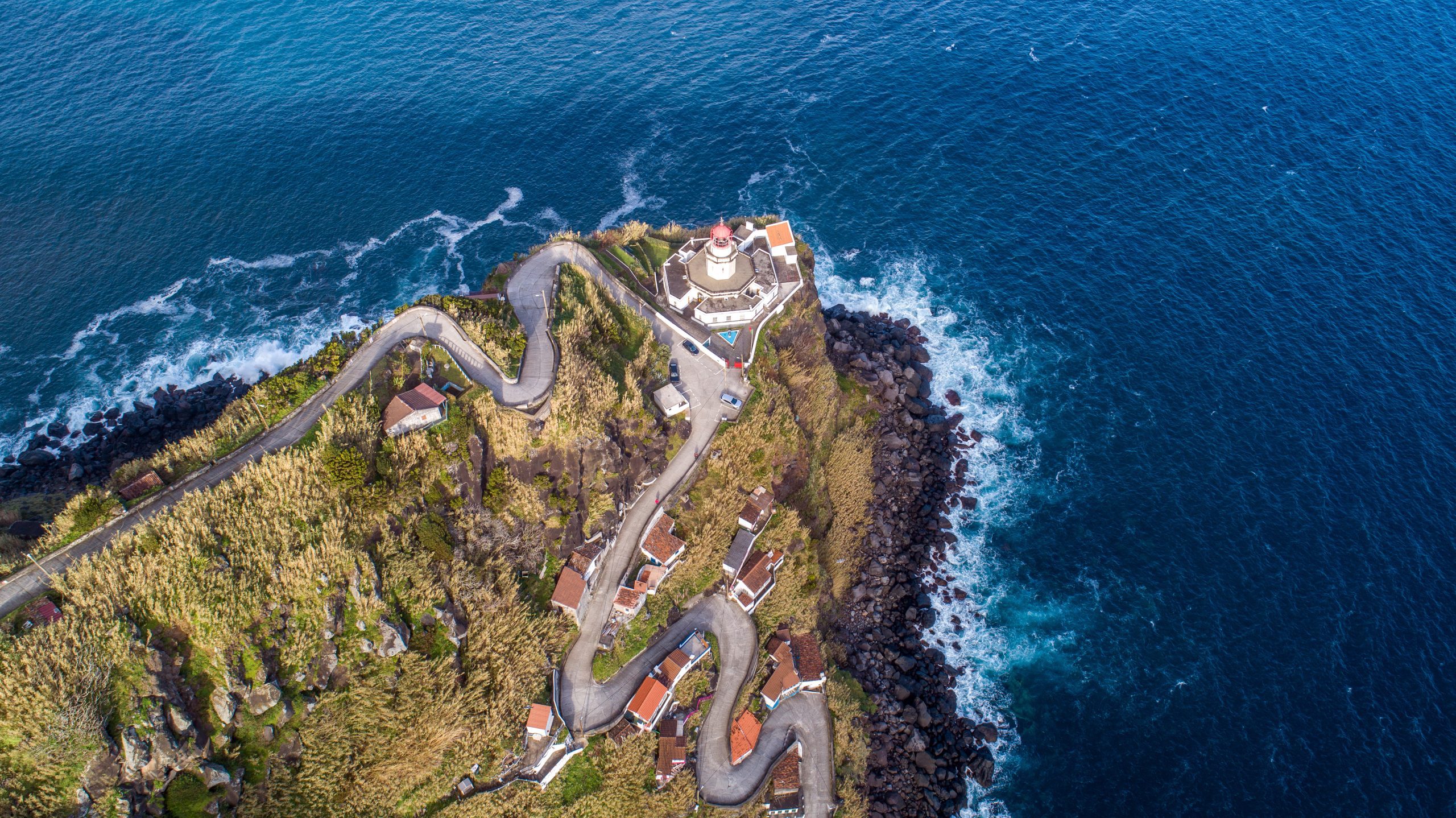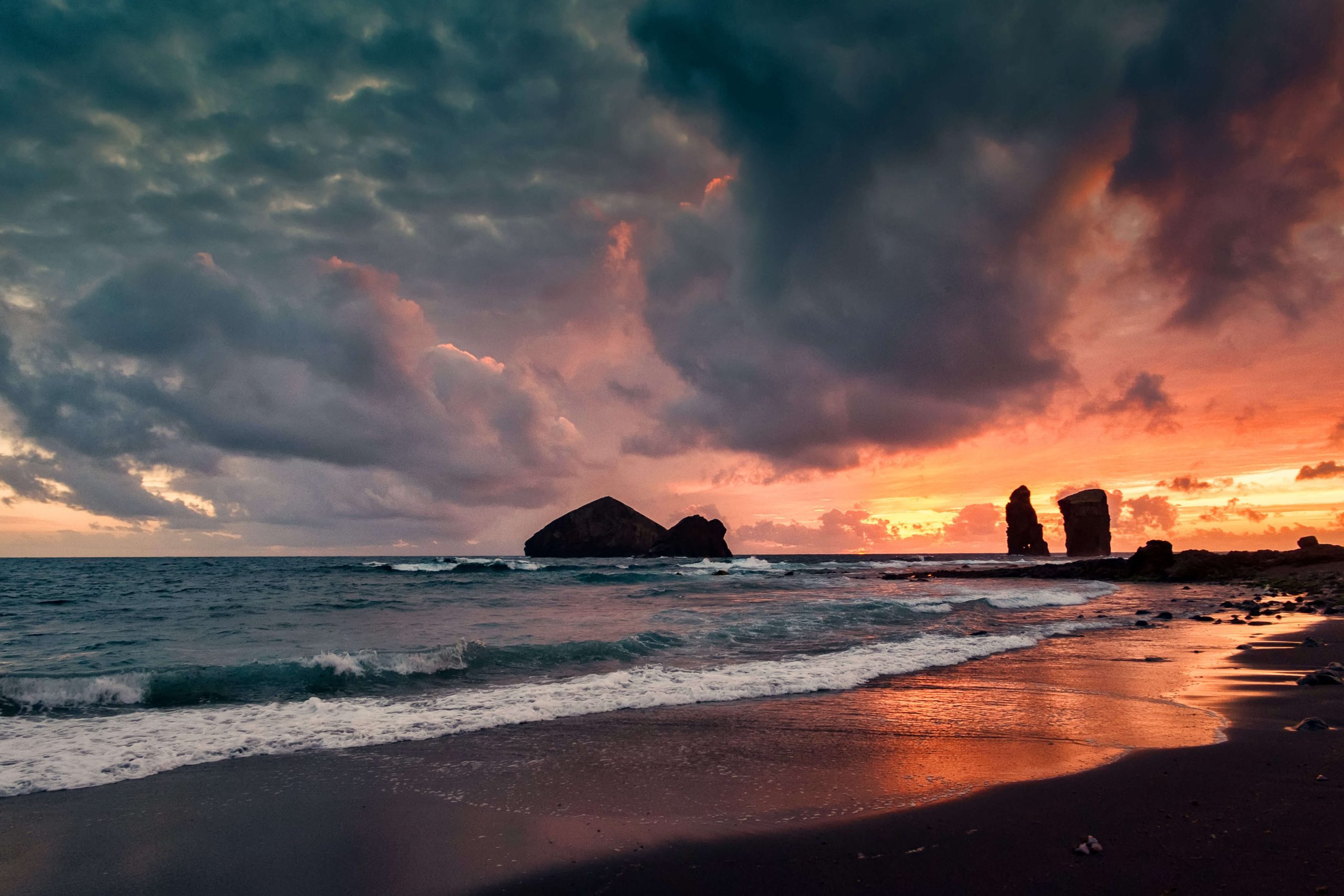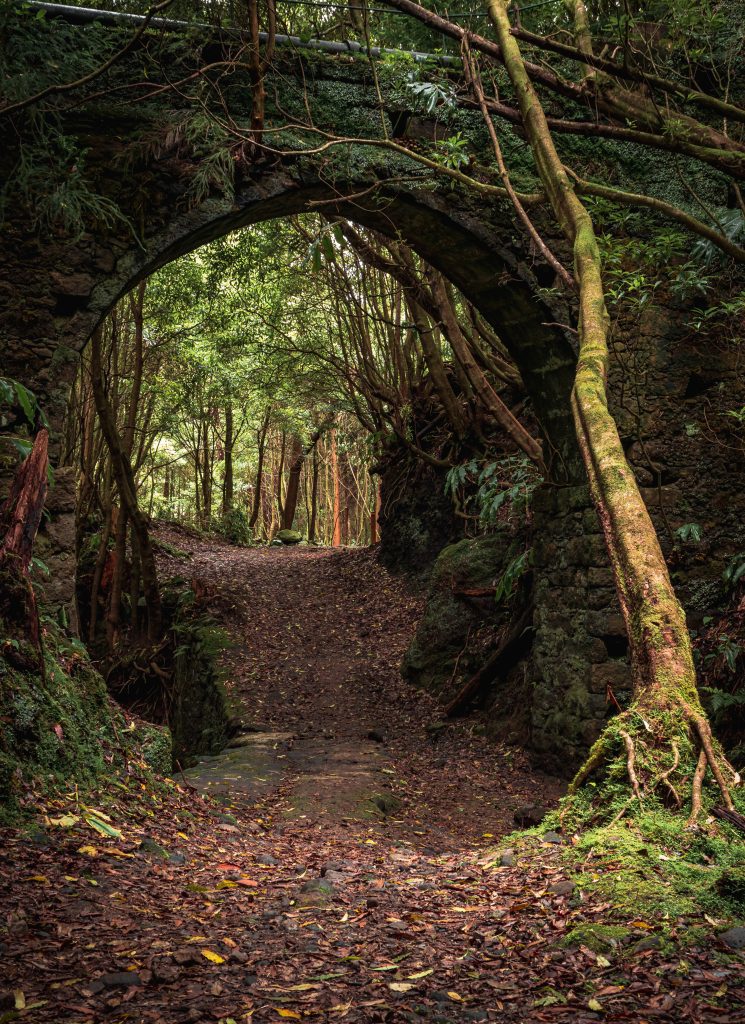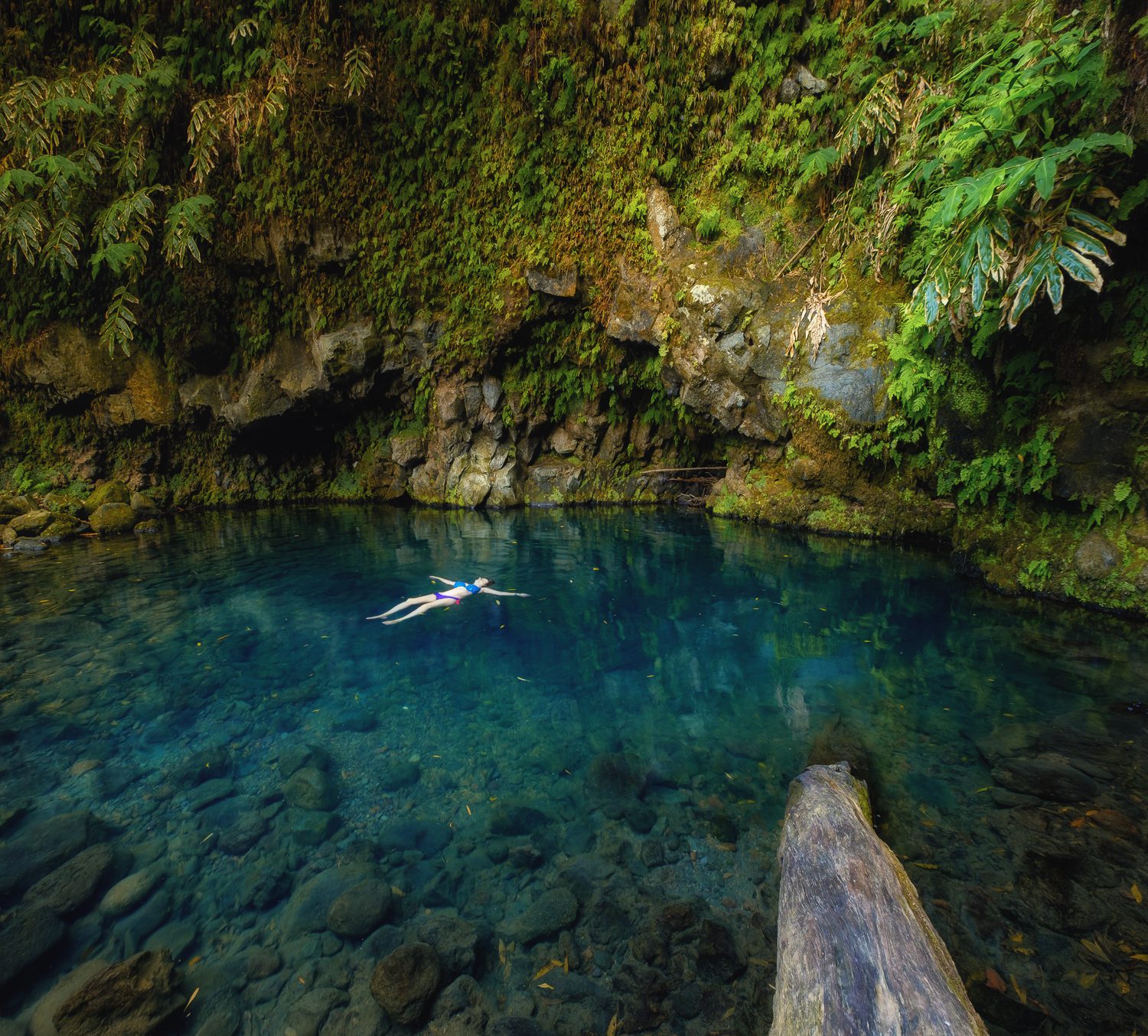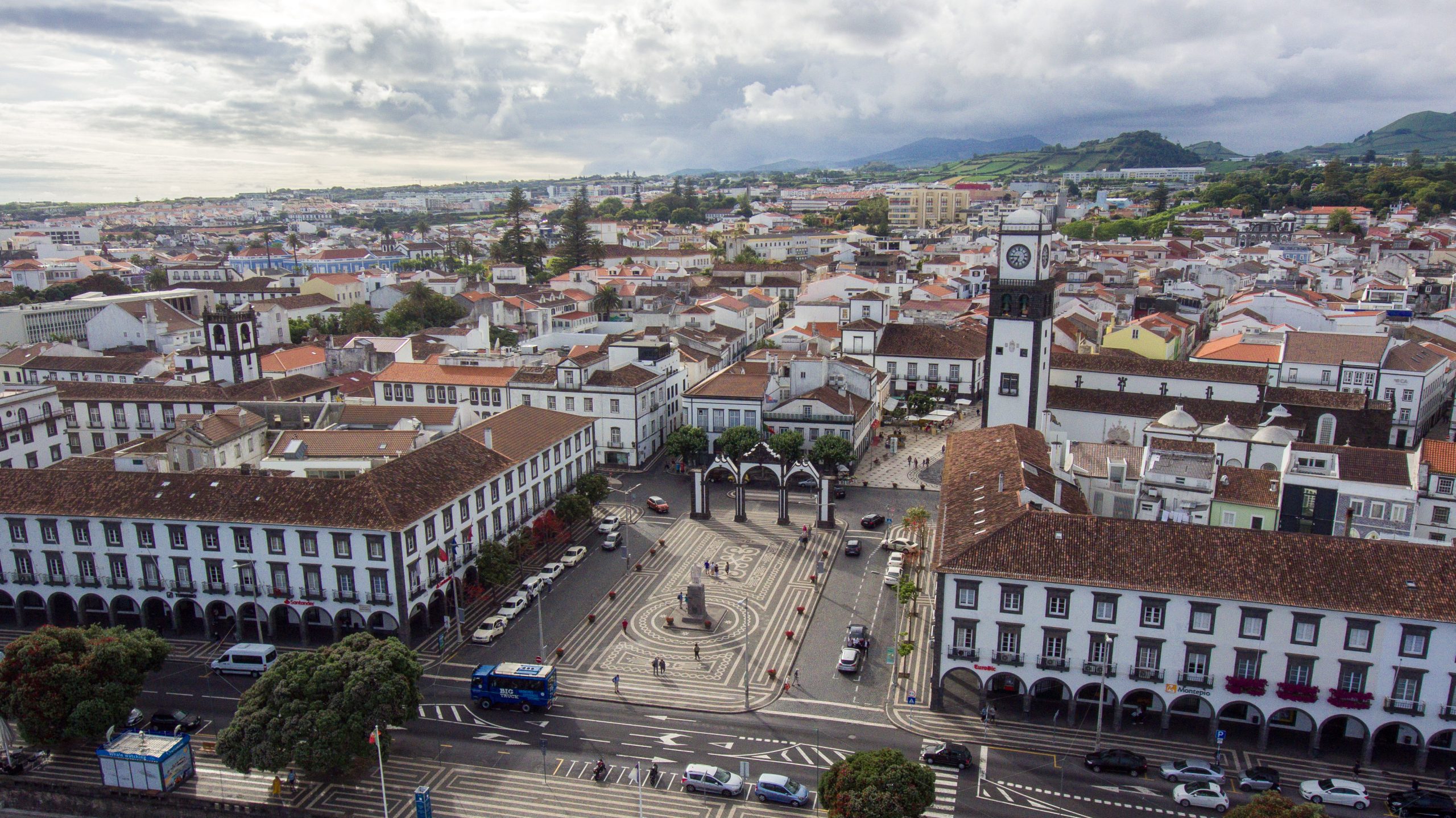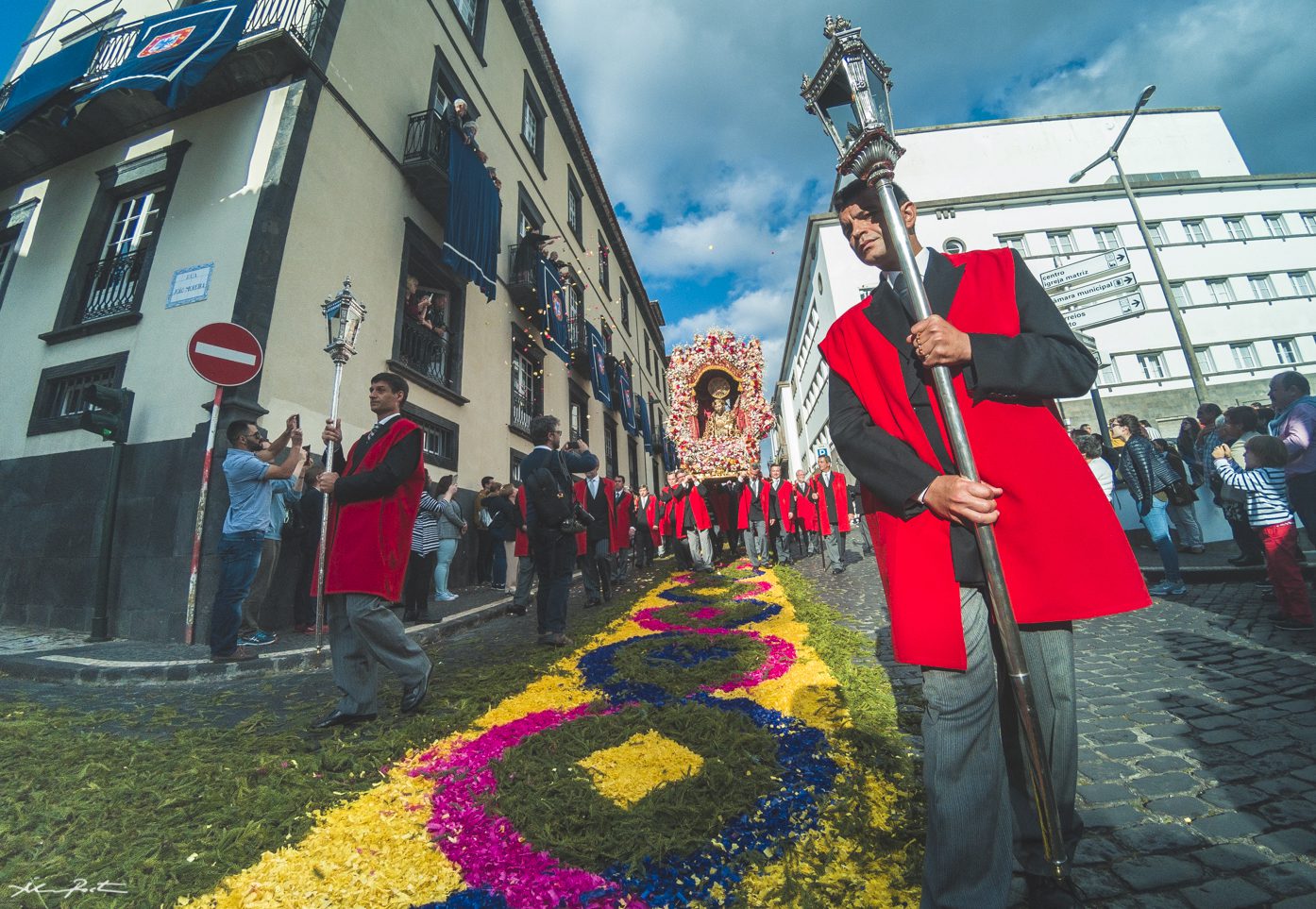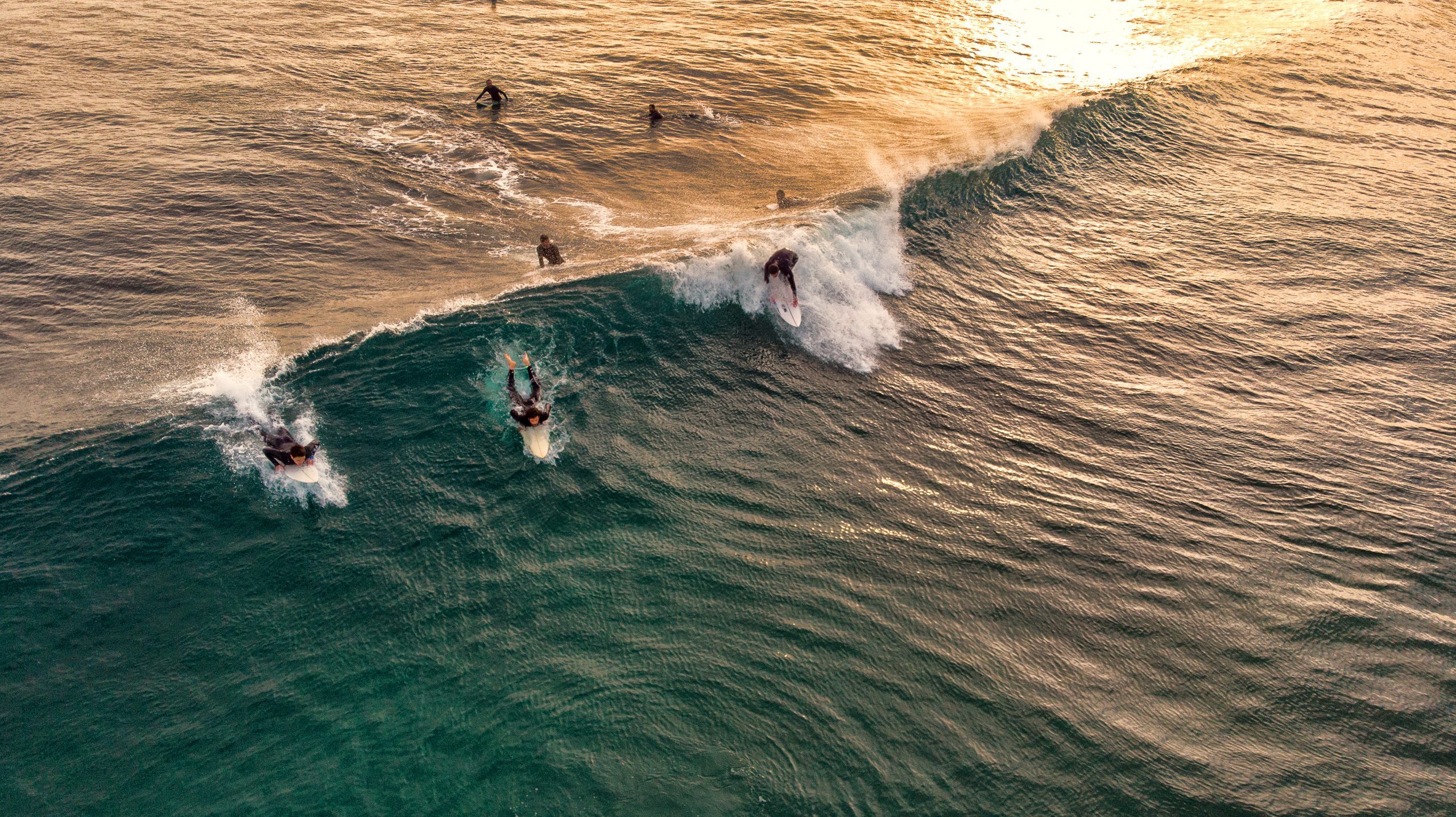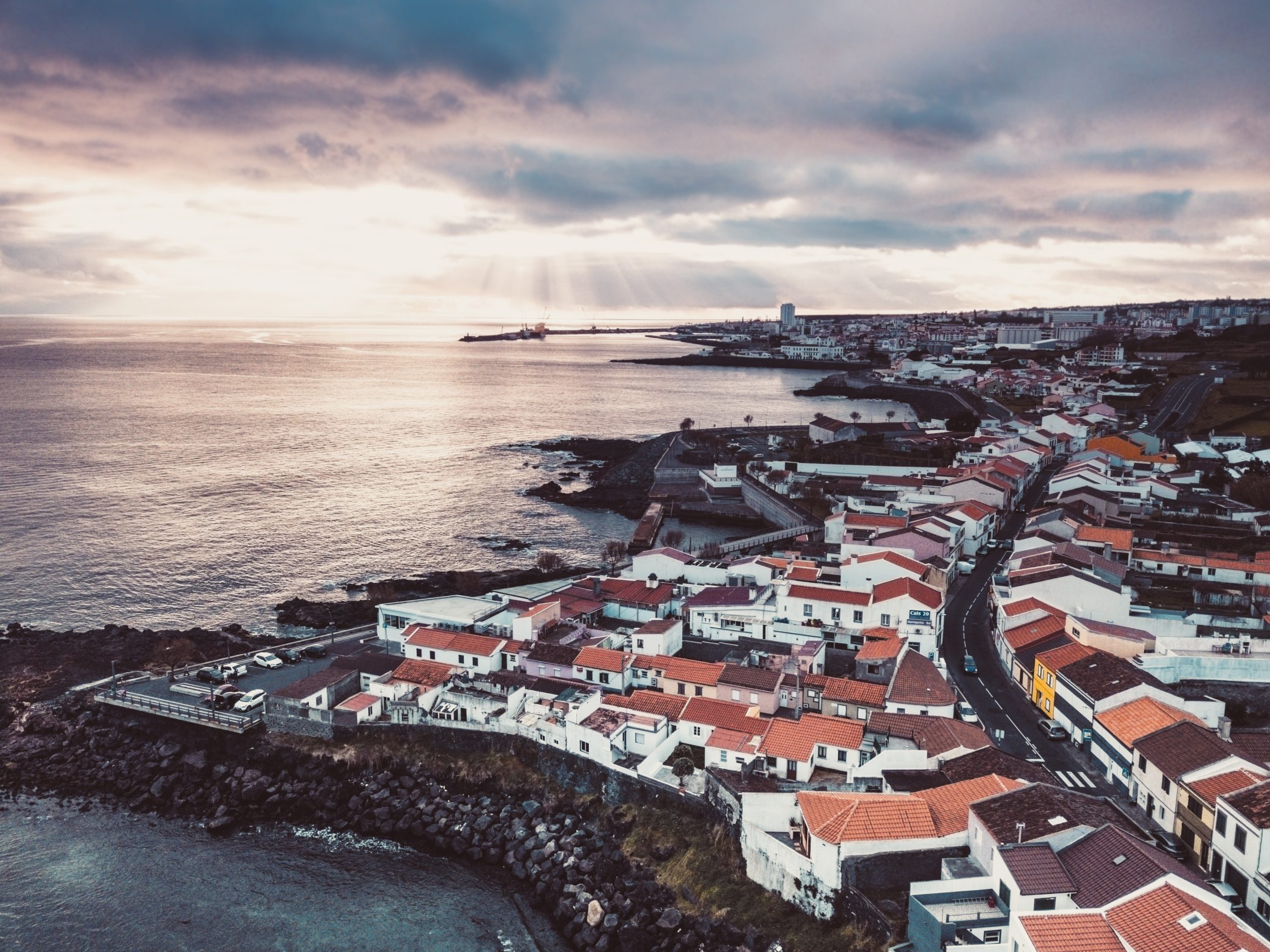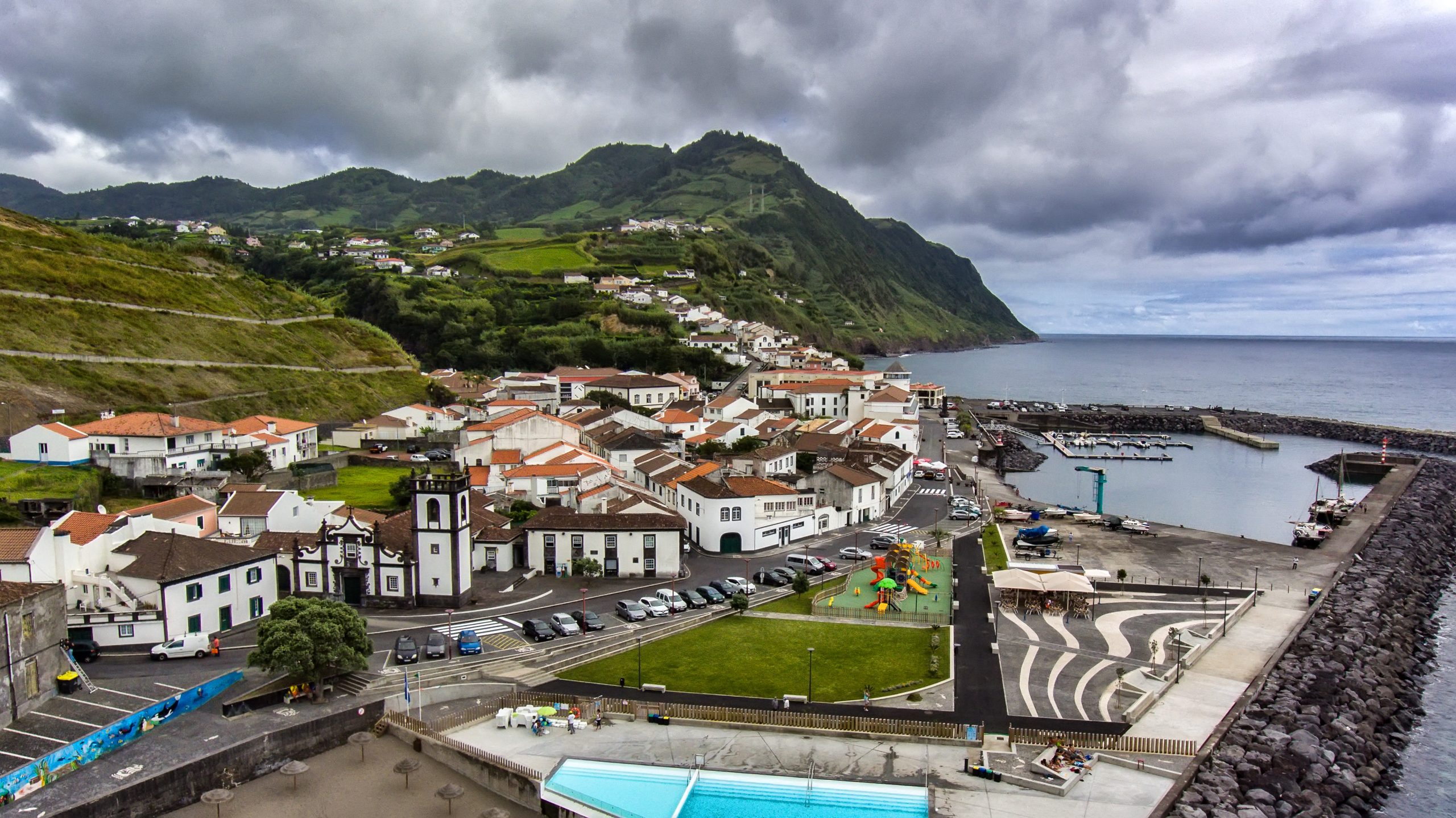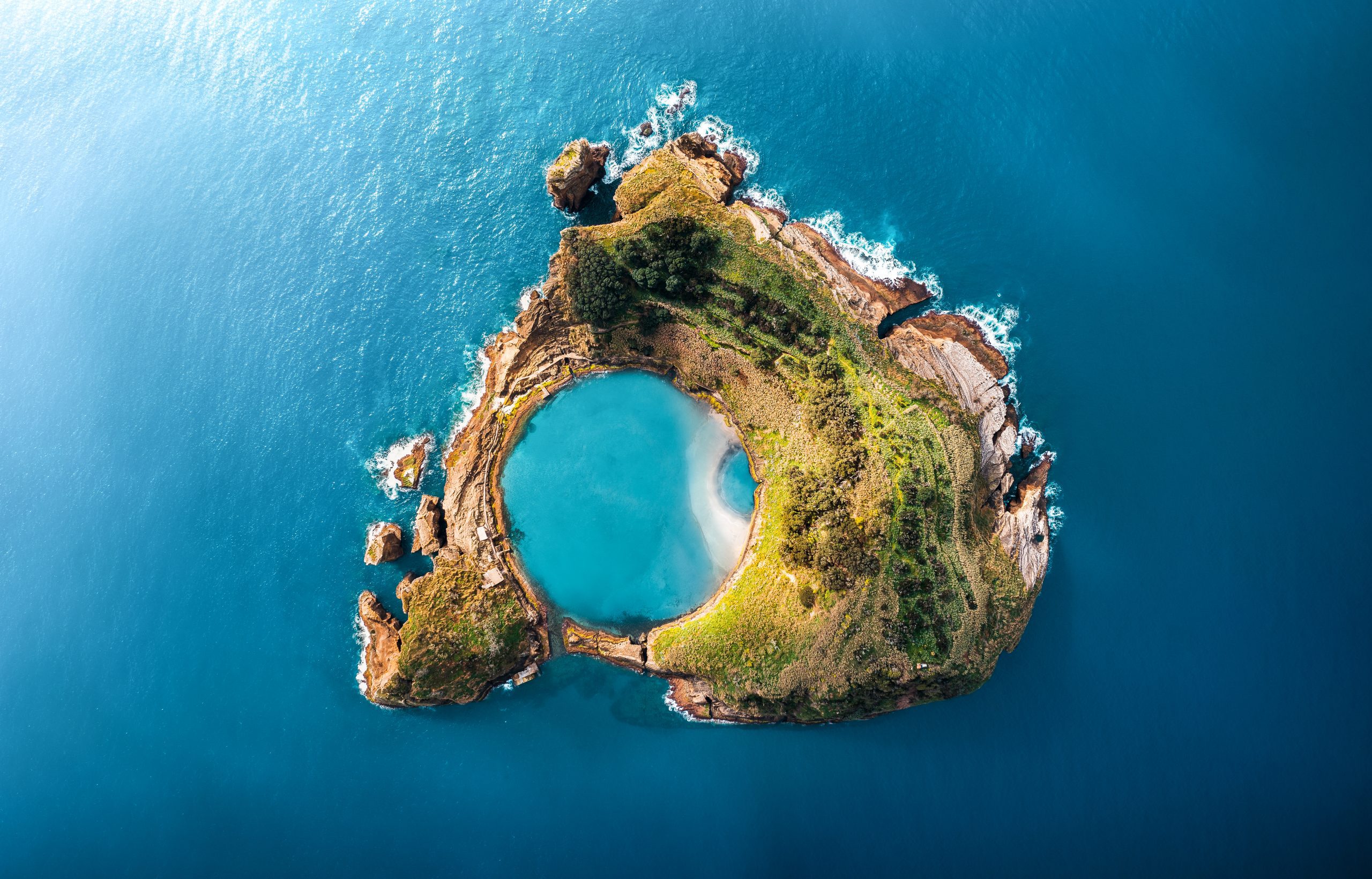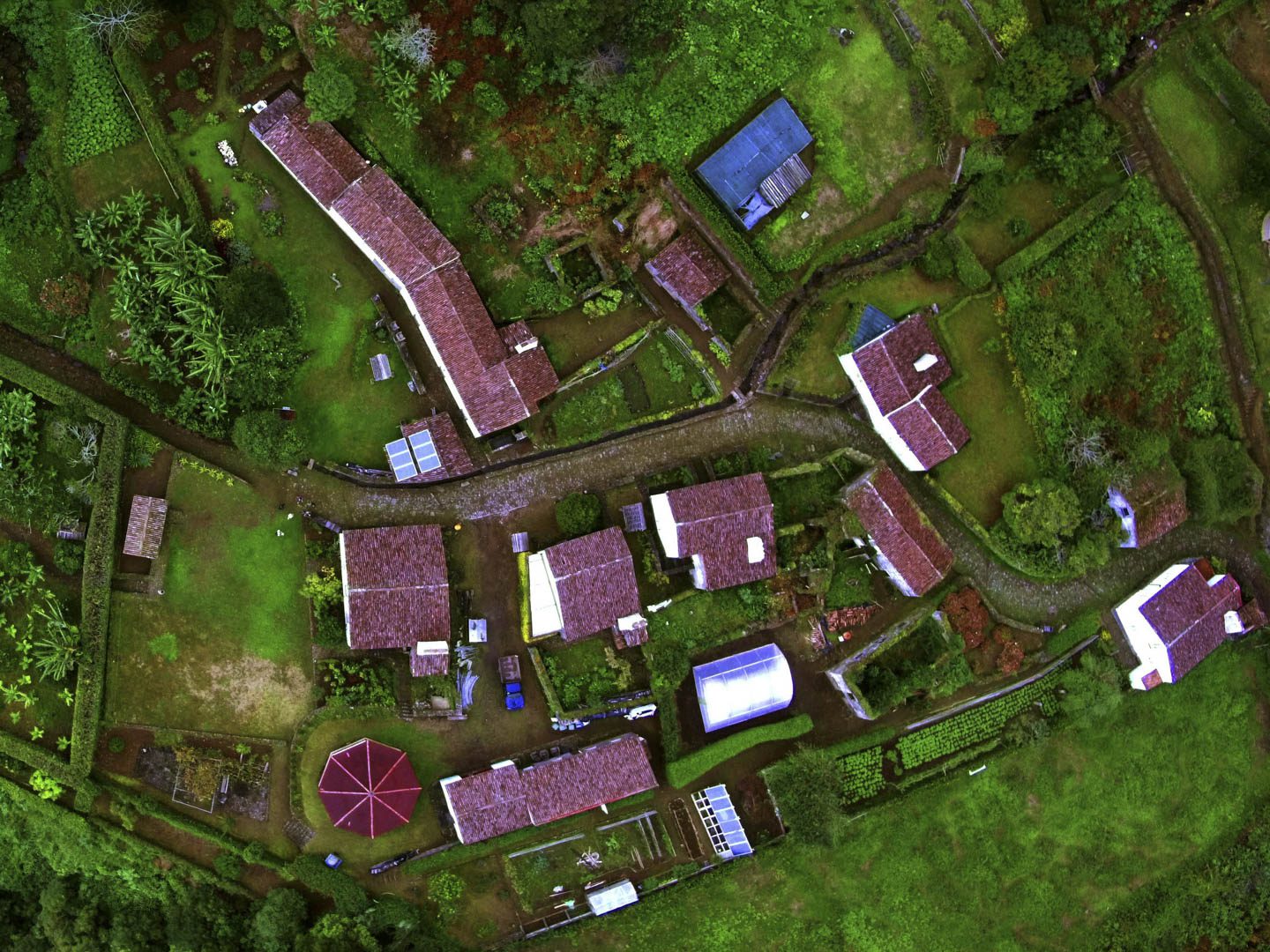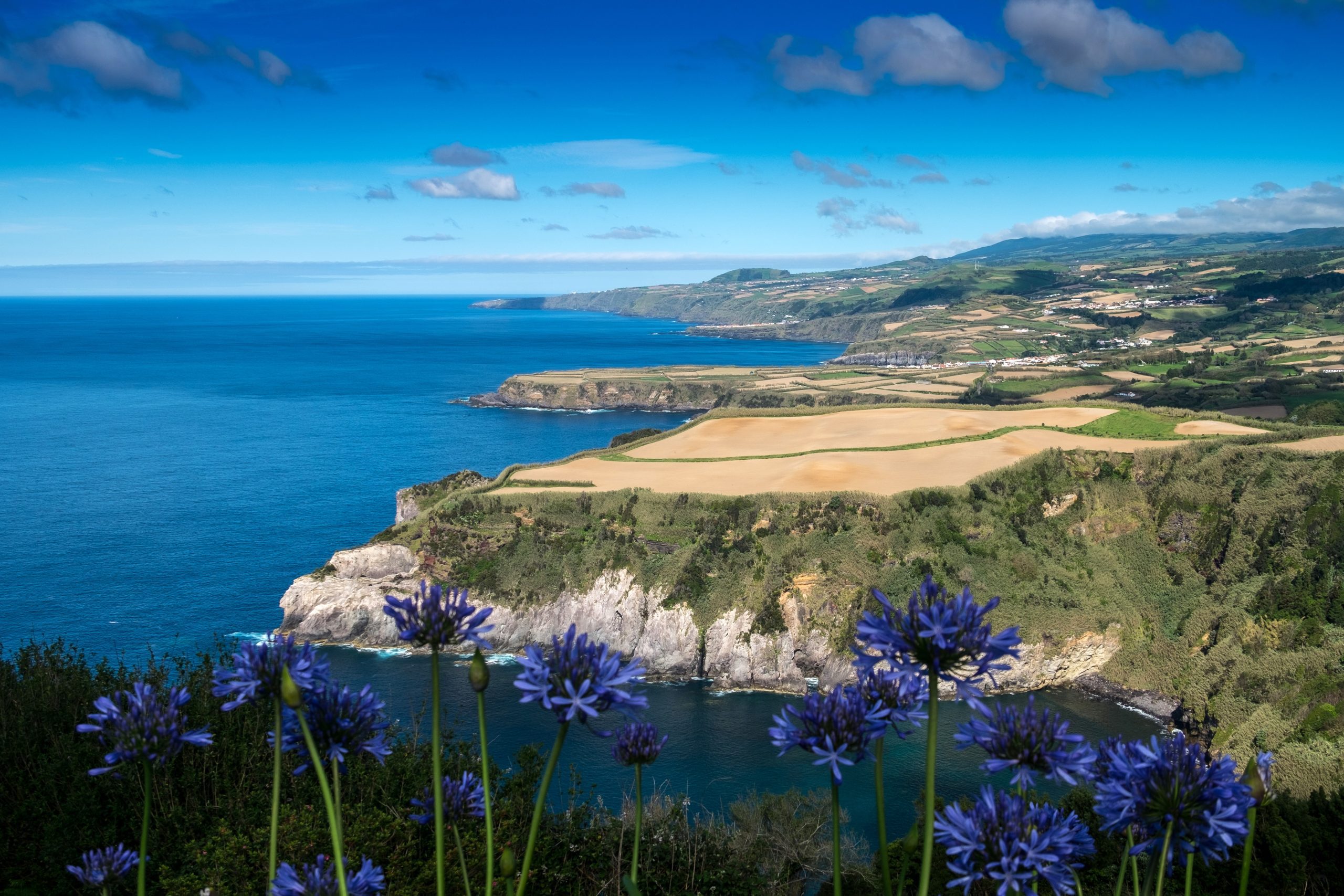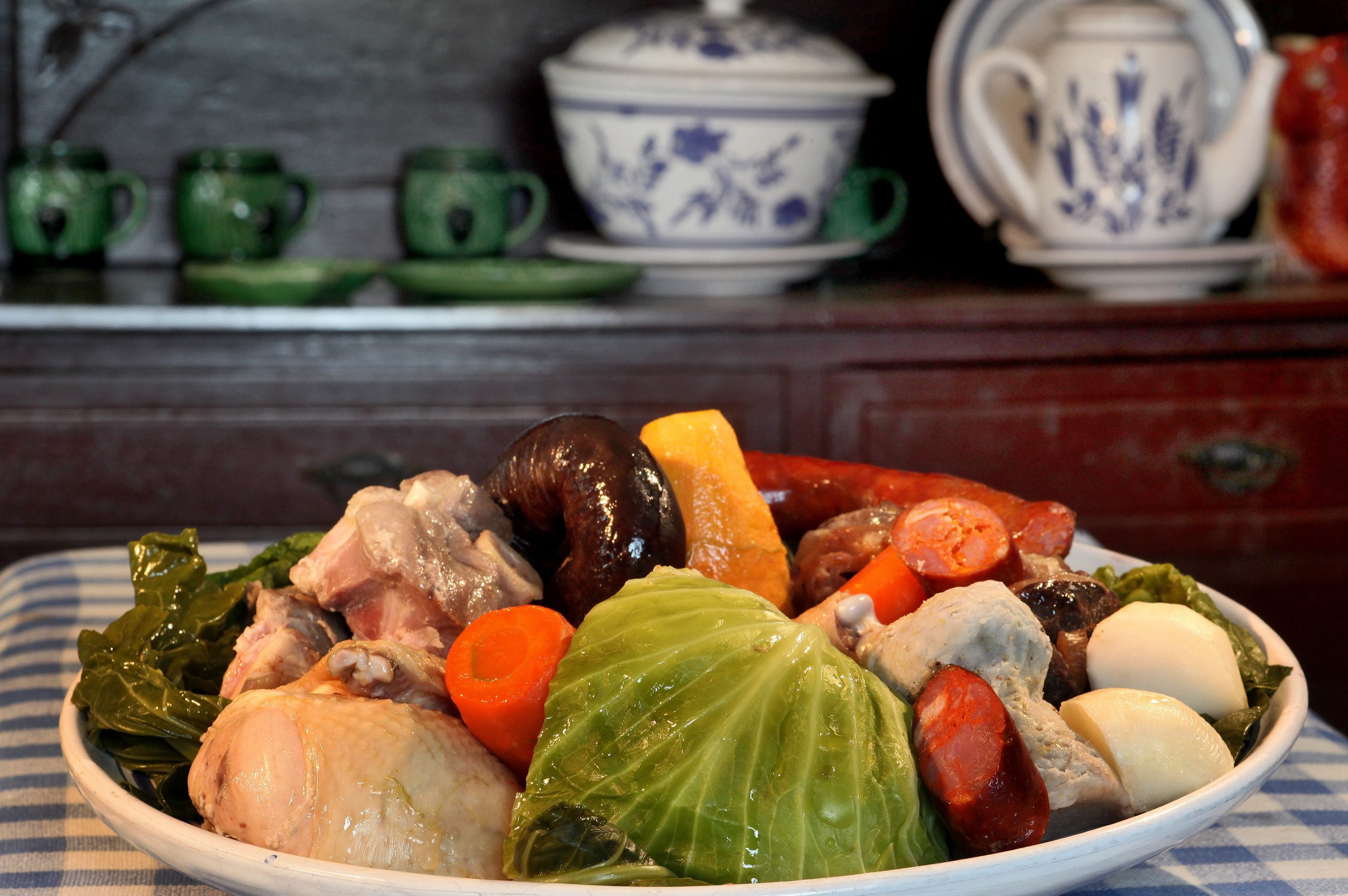If paradise is a place on Earth, then Rocha da Relva must be very close to it. This tiny village, situated between the mountains and the ocean, is gorgeous. In Portuguese, we call this a Fajã — a lava platform by the sea created by volcanic eruptions and landslides.
There, everything grows remarkably well due to a unique microclimate and fertile soil. Peculiar fruits, vegetables all year long, and even vines! This is a nice place to live or visit. You can easily explore this area thanks to the trail passing by the village. Let’s talk more about this little piece of heaven lost in the middle of the Atlantic.
What is Rocha da Relva?

Rocha da Relva is a small village, but it is also the name of the official linear route, PRC20SMI, which allows you to access it. This walking trail is approximately 5.5 kilometers long and takes around 3 hours to complete.
Walking on this hiking trail will provide you with amazing sea views at all times. Once in the village, you will see over 50 picturesque small houses, beautiful gardens, water sources, little volcanic vineyards, an altar in honor of Nossa Senhora dos Anjos, and donkeys! Those are the main ways of transportation to bring people and goods into town, as there are no supermarkets there.
The village borders a typical black pebble beach, where you can swim if the sea and weather are good. This area reflects the eruptive history of Sete Cidades, the polygenetic volcano.
👉 Post related Best Beaches in the Azores Islands. Read more!
Plan Your Visit to Rocha da Relva

How to Get to Rocha da Relva
From Ponta Delgada on São Miguel Island, this is a quick drive to the car park, where the trail begins. Follow the EN1-1A road towards the West until you cross Relva’s village and find the perspective. You can stop at Miradouro do Caminho Novo and start the walk.
Once on the trail, you will see official indications in Red and Yellow. Follow them to reach the village down by the ocean. Begin on the right side of the picnic area at Rocha do Cascalho and then on the left side to the village of Rocha da Relva. When you finish your visit, you will need to return the same way; this time, you will proceed up to the car park.
Quick Info
You can rent a car, take a taxi, or join a guided hiking tour with us to explore this wonderful place with the guidance of a knowledgeable guide.
Best Time to Visit
A morning visit will guarantee fewer people, especially during the summer months. Take some food with you and picnic by the ocean at the rest area in Rocha do Cascalho or the village of Rocha da Relva. Then, you can swim in the ocean and return in the afternoon if the weather allows it. This way, you spend more time exploring the area.
If you love sunsets, going in the afternoon is a good idea. If the café between the village and the top of the cliff is open (only in good weather), you can even eat there.
Check all our articles about the weather in the Azores throughout the year 🌤️ ☔️: January | February | March | April | May | June | July | August | September | October | November | December
Pro Tips

Avoid picking fruits from the houses’ gardens. The owners of the houses own those, and people do not view it well if you take what does not belong to you. Demand permission from the locals you can find in the town; they will likely share it with you if you ask.
If you bring food and drinks, please be mindful not to leave any rubbish behind. Take whatever you bring down to keep this place clean and as beautiful as you found it. To sum it up, take nothing but pictures and leave nothing but footprints.
What to Do Around Rocha da Relva
Explore the Municipality of Ponta Delgada
Ponta Delgada is officially one of Portugal’s best municipalities to live in. The modern city is the largest and most populous in the Azores. Sea breezes, mountain views, and delicious local food are part of everyday life here.


Despite being an energetic city, Ponta Delgada has no rush and no annoying traffic jams. Initially, Ponta Delgada was a small fishing village. But soon, thanks to its safe bays, it became the most important island trade port.
In 1546, they declared Ponta Delgada a city, and after a terrible earthquake destroyed the first capital, Vila Franca do Campo, it became the island’s capital. Today, Ponta Delgada, with its nearly 70,000 inhabitants, is a cosmopolitan city that attracts visitors from around the world. That’s why we’ve highlighted the city’s main points of interest:
- Monuments: Carlos Machado Museum, Church of All Saints, Portas da Cidade, São Brás Fort, Farmers Market, Portas do Mar, Public Library and Regional Archive, Rocha da Relva, Sanctuary of Hope, and Synagogue.
- Natural Heritage: Coal Cave, José do Canto Garden, António Borges Garden, “Pesqueiro” Swimming Pool, Atlantic Park, Pineapple Plantations, Milícias Beach, among others.
Explore Gruta do Carvão

Gruta do Carvão is a unique and fascinating natural wonder that draws visitors from all over the world. This lava tube, formed by volcanic activity over 10,000 years ago, is one of the most impressive examples of geological formations in the Azores and a must-visit attraction for any traveler to the region.
It is the longest lava tube on the island of São Miguel, with an extension of up to 1,912 meters. However, some archival documents report that the tube was much longer than the one we know today.

It is only possible to visit the Paim section of Gruta do Carvão from the Visitor Center in Ponta Delgada. A local guide is also mandatory to explore the lava tube. Please note that it is better to book your tour in advance. There are two types of visits:
- Short Visit: This visit is easily accessible. You will join a group of up to 15 people, and each participant will wear a helmet. Accompanied by a specialist who will tell you everything about this natural wonder, you will discover about 200 meters of the cave for 30 to 40 minutes.
- Long Visit: This type of visit requires good physical conditions, as you will navigate rough landscapes and narrow cave parts. The route is approximately 800 meters long, and only up to five people can go through simultaneously. With the longer visit, you will have the opportunity to discover more about Gruta do Carvão, accompanied by a speleologist. You will have a helmet, headlight, gloves, and knee pads. Please note that this visit is not suitable for children under 10 years old. You also must be in good physical health.
Experience the Charm of Milking a Cow at Quinta do Agricultor

At Quinta do Agricultor, visitors can immerse themselves in the authentic rural experience of milking a cow. It’s a fantastic opportunity for those who want to connect directly with nature and the agricultural traditions of the Azores, offering valuable insights into rural life.
Located at the edge of Relva town, this beautiful farm is brimming with non-native fruits, charming animals, and a wealth of local knowledge. Open to the public, the friendly owners welcome visitors to explore their offerings.
You can learn about the Azorean rural lifestyle by appointment, bake bread in a stone oven, and even try milking a cow. This truly is the ultimate Azorean experience.
Swim at Pesqueiro Natural Pools (Portas do Mar Pools)
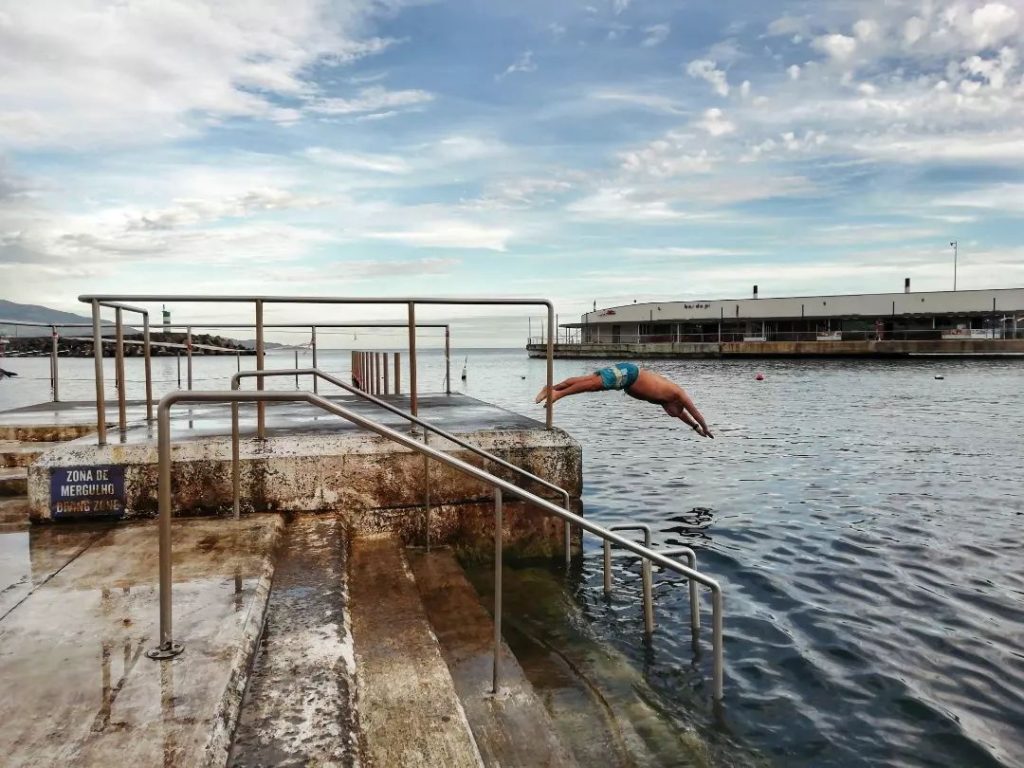
The Pesqueiro Natural Pools, also known as the Portas do Mar Swimming Pools, are located just outside the center of Ponta Delgada. The area, located at Portas do Mar, offers excellent conditions, making it a safe and comfortable place for anyone to swim at any time.
Swimming in the sea is a deep-rooted activity among the residents of Ponta Delgada. It is a popular pastime for leisure, health, and socializing among friends. One of the places most frequented by locals is the “Zona Balnear do Pesqueiro”, where you can see people all year round enjoying the sea.
Quick Info
When it’s sunny, the pool can get a bit crowded, but every morning, you’ll find the same people enjoying a calm and refreshing start to the day.
Check all our articles about each one of the most relevant points of interest in Ponta Delgada: Gruta do Carvão | Ponta Delgada | Jardim António Borges | Jardim Botânico José do Canto | Pinhal da Paz | Portas da Cidade | Milícias & Pópulo Beaches | Praia de São Roque | Pico Vermelho Windmill | Rocha da Relva | Mercado da Graça | Miradouro Vigia da Baleia
Complementary Information
Best Season to Visit the Azores
The Azores Archipelago boasts a unique climate that shapes its lush landscapes, making it a splendid year-round destination. With mild temperatures and minimal fluctuations, each season offers something unique. Spring averages 16 °C, summer reaches 21 °C, autumn cools to 18 °C, and winter remains mild at 14 °C.
→ For a detailed breakdown of the weather by month, check the following links 🌤️☔️: January | February | March | April | May | June | July | August | September | October | November | December
How to Get to the Azores
The Azorean Archipelago is easily accessible through numerous flight routes. Lisbon and Porto are the main entry points to the continent, with direct flights available to São Miguel (PDL), Terceira (TER), Faial (HOR), Pico (PIX), and Santa Maria (SMA). To find the best flight, use search engines like eDreams or Skyscanner. These platforms let you compare prices and schedules from multiple airlines in one convenient location.
For more details on how to get to the Azores, take a look at our complete guide. But what if you want to explore beyond your arrival island? We’ve got you covered!
- Azores airports 🛬
- Flights between islands ✈️
- Ferries between islands ⛴️
- Which island to choose? 🏝️
- What airlines fly to the Azores? 🛩️
→ Once you’ve found the perfect route, book your tickets and get ready to experience one of the world’s most stunning island groups!
Travel Essentials
Essential Information for your Azores trip: Azorean Language & Phrases 🗣️ | Currency & Banks 💵 | Credit Cards & Traveler’s Cheques 🏧 | Driving in the Azores 🚗 | Electricity 🔌 | Experiences & Tours 🗺️ | Health & Safety 🩺 | Internet & Wi-Fi Access 🛜 | Phones & Mobile Service 📞 | Post Offices & Buying Stamps ✉️ | Public Holidays 🏖️ | Shopping 🛒 | Time & Daylight 🕒 | Whale Watching Guide 🐳 | Best Island to Visit 🏞️
Useful Tools & Apps
The weather in the Azores can be variable, so it’s helpful to use some apps before visiting the islands. Spotazores provides live camera feeds from the main tourist attractions, allowing you to check the weather and plan your visit. For accurate weather predictions, use Windy or Windguru — they provide the most reliable predictions.
Video
Conclusion
Rocha da Relva is a nice place to visit on a sunny day. If the weather allows, you can walk to a remote village of beautiful houses, swim in the wild Atlantic Ocean, see tropical fruits, and taste local wine.
It is so close to Ponta Delgada that if you are staying in the city, you should add Rocha da Relva to your list of things to see on São Miguel Island. Take your time to explore this wonderful place.
Visiting this place will provide stunning panoramic views of the ocean and the south coast of São Miguel Island, making you want to return to this peaceful island in the Atlantic Ocean.
Authors’ Note
I am pleased to inform you that all the recommendations in this article are based on my personal experience and observations. As the author, I have personally visited each attraction mentioned, ensuring that every suggestion is grounded in first-hand knowledge and genuine enthusiasm.
FAQs
Rocha da Relva is a picturesque coastal fajã located in Ponta Delgada. It is formed by volcanic terrain and is renowned for its peaceful natural scenery. The fajã can only be accessed via a hiking trail.
The PRC20 SMI trail is approximately 5 km in length, round-trip, and features steep descents and uneven terrain. While challenging, it offers stunning views of the coastline and volcanic landscapes.
Yes, but it’s important to consider the children’s physical ability, as the path is demanding. Proper footwear is advised; additional precautions should be taken due to the steep and irregular trail.
Carry water, snacks, sunscreen, and bags to return your trash. An offline map or GPS device is recommended since some areas have limited mobile network coverage.

